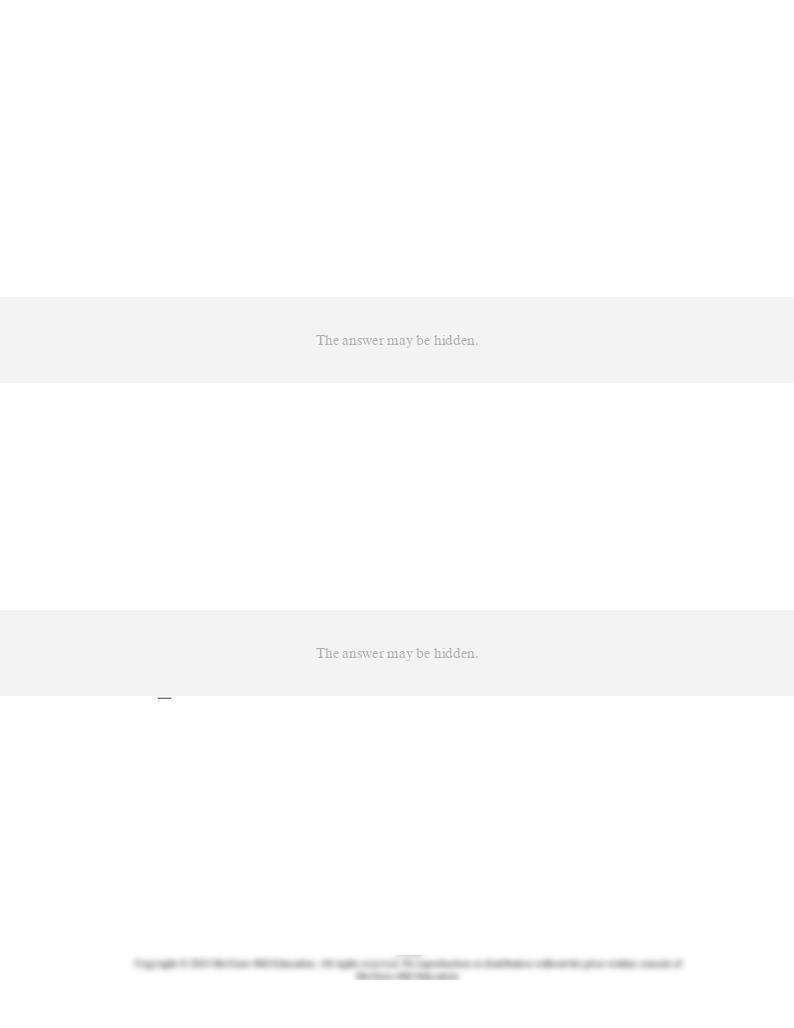
Chapter 01 Limits, Alternatives, and Choices Answer Key
Multiple Choice Questions
1.
For economists, the word "utility" means:
AACSB: Analytic
Accessibility: Keyboard Navigation
Blooms: Remember
Difficulty: 1 Easy
Learning Objective: 01-01 Define economics and the features of the economic perspective.
Topic: Economic perspective
Topic: Economics
2.
In economics, the pleasure, happiness, or satisfaction received from a product is called:
AACSB: Analytic
Accessibility: Keyboard Navigation
Blooms: Remember
Difficulty: 1 Easy
Learning Objective: 01-01 Define economics and the features of the economic perspective.
Topic: Economic perspective
Topic: Economics
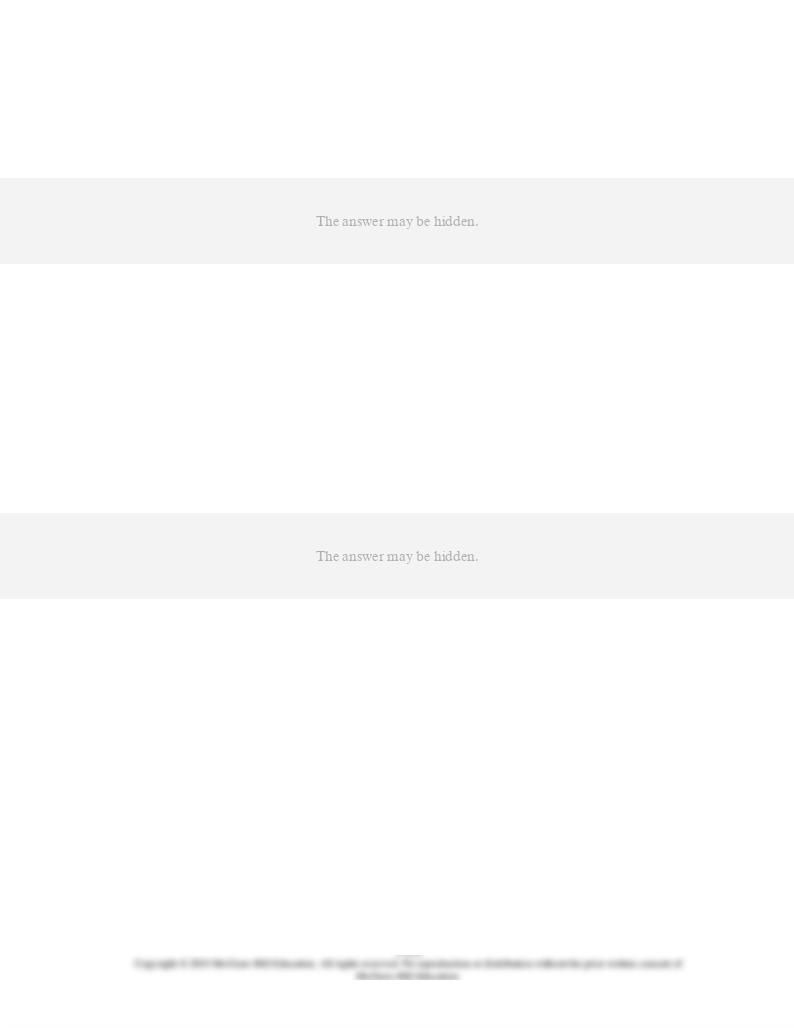
3.
When economists say that people act rationally in their self-interest, they mean that
individuals:
AACSB: Reflective Thinking
Accessibility: Keyboard Navigation
Blooms: Understand
Difficulty: 2 Medium
Learning Objective: 01-01 Define economics and the features of the economic perspective.
Topic: Economic perspective
Topic: Economics
4.
According to Emerson: "Want is a growing giant whom the coat of Have was never large
enough to cover." According to economists, "Want" exceeds "Have" because:
AACSB: Reflective Thinking
Accessibility: Keyboard Navigation
Blooms: Understand
Difficulty: 2 Medium
Learning Objective: 01-01 Define economics and the features of the economic perspective.
Topic: Economic perspective
Topic: Economics

5.
According to economists, economic self-interest:
AACSB: Reflective Thinking
Accessibility: Keyboard Navigation
Blooms: Understand
Difficulty: 2 Medium
Learning Objective: 01-01 Define economics and the features of the economic perspective.
Topic: Economic perspective
Topic: Economics
6.
Joe sold gold coins for $1,000 that he bought a year ago for $1,000. He says, "At least I
didn't lose any money on my financial investment." His economist friend points out that in
effect he did lose money because he could have received a 3 percent return on the $1,000
if he had bought a bank certificate of deposit instead of the coins. The economist's
analysis in this case incorporates the idea of:
AACSB: Analytic
Accessibility: Keyboard Navigation
Blooms: Apply
Difficulty: 2 Medium
Learning Objective: 01-01 Define economics and the features of the economic perspective.
Topic: Economic perspective
Topic: Economics
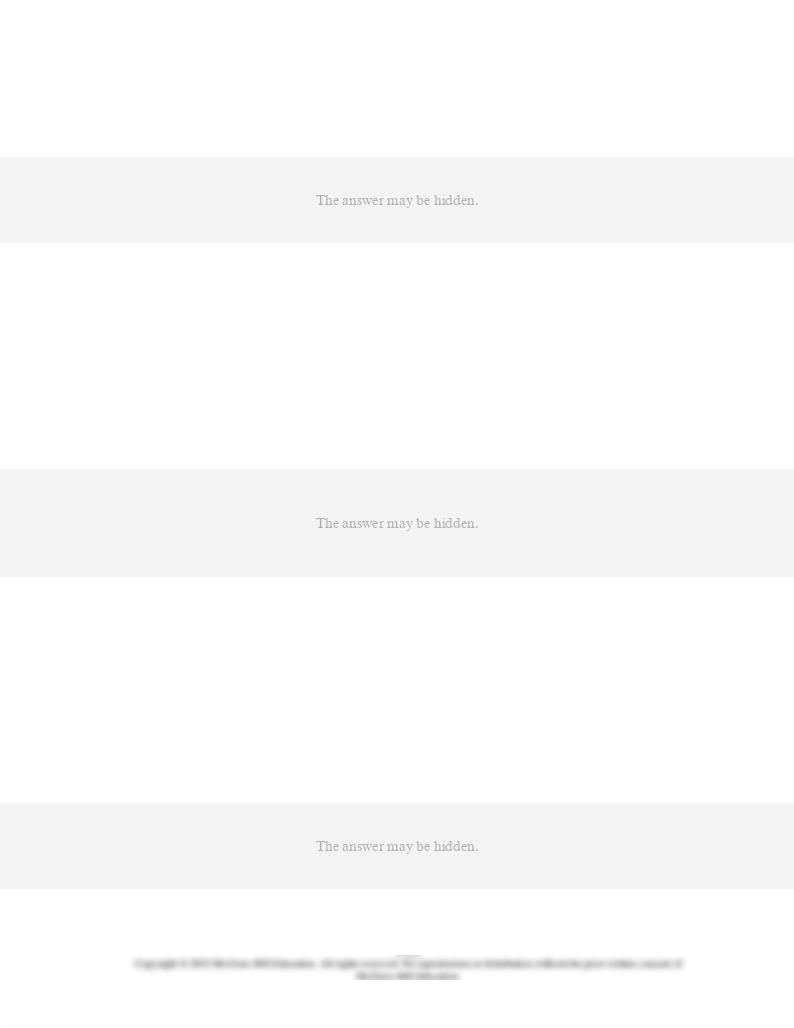
7.
A person should consume more of something when its marginal:
AACSB: Reflective Thinking
Accessibility: Keyboard Navigation
Blooms: Understand
Difficulty: 2 Medium
Learning Objective: 01-01 Define economics and the features of the economic perspective.
Topic: Economic perspective
Topic: Economics
8.
Economics may best be defined as the:
AACSB: Analytic
Accessibility: Keyboard Navigation
Blooms: Remember
Difficulty: 1 Easy
Learning Objective: 01-01 Define economics and the features of the economic perspective.
Topic: Economic perspective
Topic: Economics
9.
The study of economics is primarily concerned with:
AACSB: Analytic

Accessibility: Keyboard Navigation
Blooms: Understand
Difficulty: 2 Medium
Learning Objective: 01-01 Define economics and the features of the economic perspective.
Topic: Economic perspective
Topic: Economics
10.
The economic perspective entails:
AACSB: Analytic
Accessibility: Keyboard Navigation
Blooms: Understand
Difficulty: 2 Medium
Learning Objective: 01-01 Define economics and the features of the economic perspective.
Topic: Economic perspective
Topic: Economics
11.
Purposeful behavior suggests that:
AACSB: Analytic
Accessibility: Keyboard Navigation
Blooms: Understand
Difficulty: 2 Medium
Learning Objective: 01-01 Define economics and the features of the economic perspective.
Topic: Economic perspective
Topic: Economics
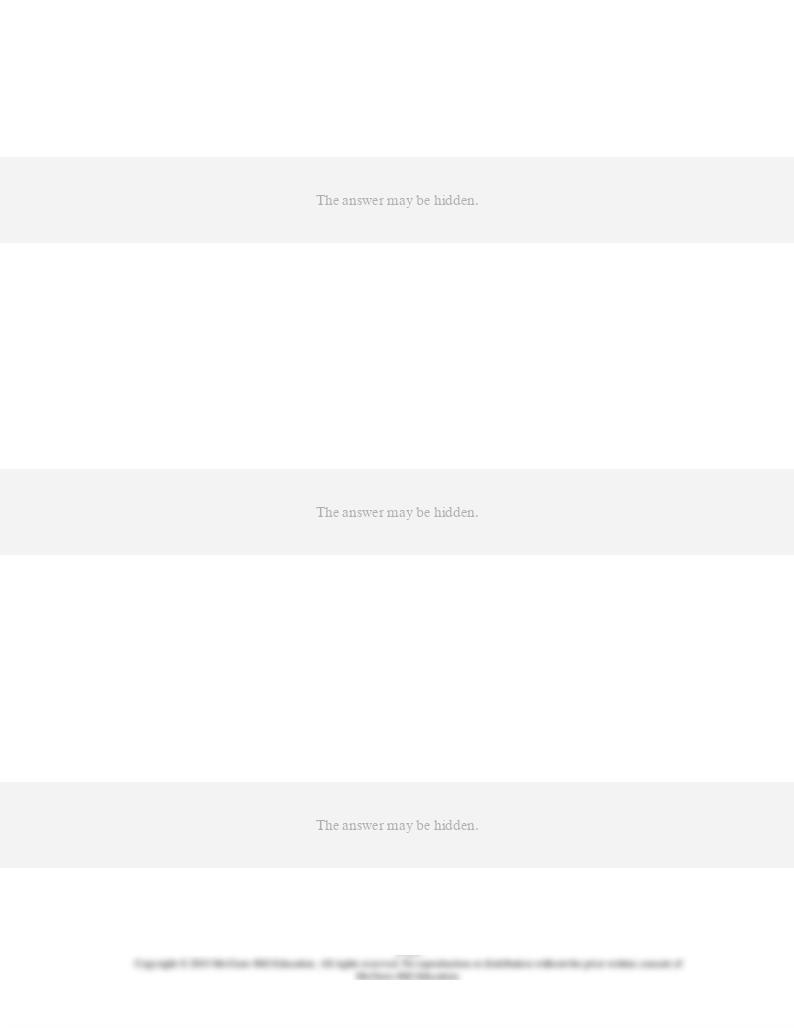
12.
Purposeful behavior means that:
AACSB: Analytic
Accessibility: Keyboard Navigation
Blooms: Remember
Difficulty: 1 Easy
Learning Objective: 01-01 Define economics and the features of the economic perspective.
Topic: Economic perspective
Topic: Economics
13.
Economics involves marginal analysis because:
AACSB: Analytic
Accessibility: Keyboard Navigation
Blooms: Understand
Difficulty: 2 Medium
Learning Objective: 01-01 Define economics and the features of the economic perspective.
Topic: Economic perspective
Topic: Economics
14.
You should decide to go to a movie:
AACSB: Reflective Thinking
Accessibility: Keyboard Navigation
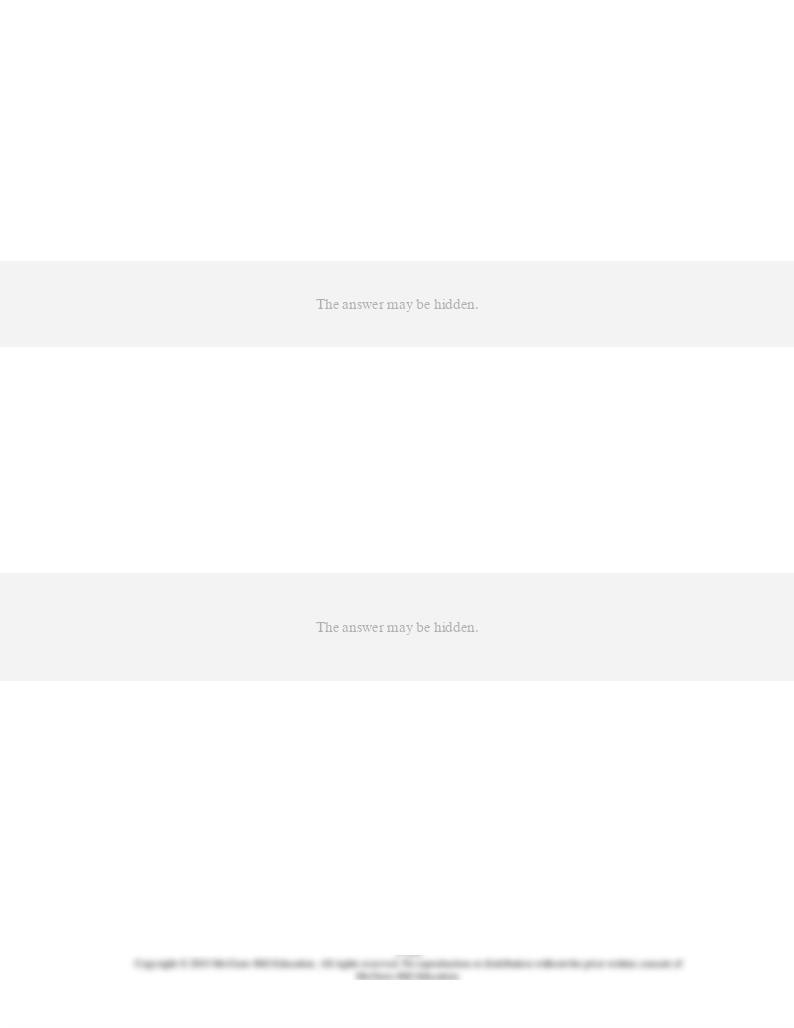
Blooms: Apply
Difficulty: 2 Medium
Learning Objective: 01-01 Define economics and the features of the economic perspective.
Topic: Economic perspective
Topic: Economics
15.
Opportunity costs exist because:
AACSB: Analytic
Accessibility: Keyboard Navigation
Blooms: Remember
Difficulty: 1 Easy
Learning Objective: 01-01 Define economics and the features of the economic perspective.
Topic: Economic perspective
Topic: Economics
16.
The assertion that "there is no free lunch" means that:
AACSB: Reflective Thinking
Accessibility: Keyboard Navigation
Blooms: Understand
Difficulty: 2 Medium
Learning Objective: 01-01 Define economics and the features of the economic perspective.
Topic: Economic perspective
Topic: Economics
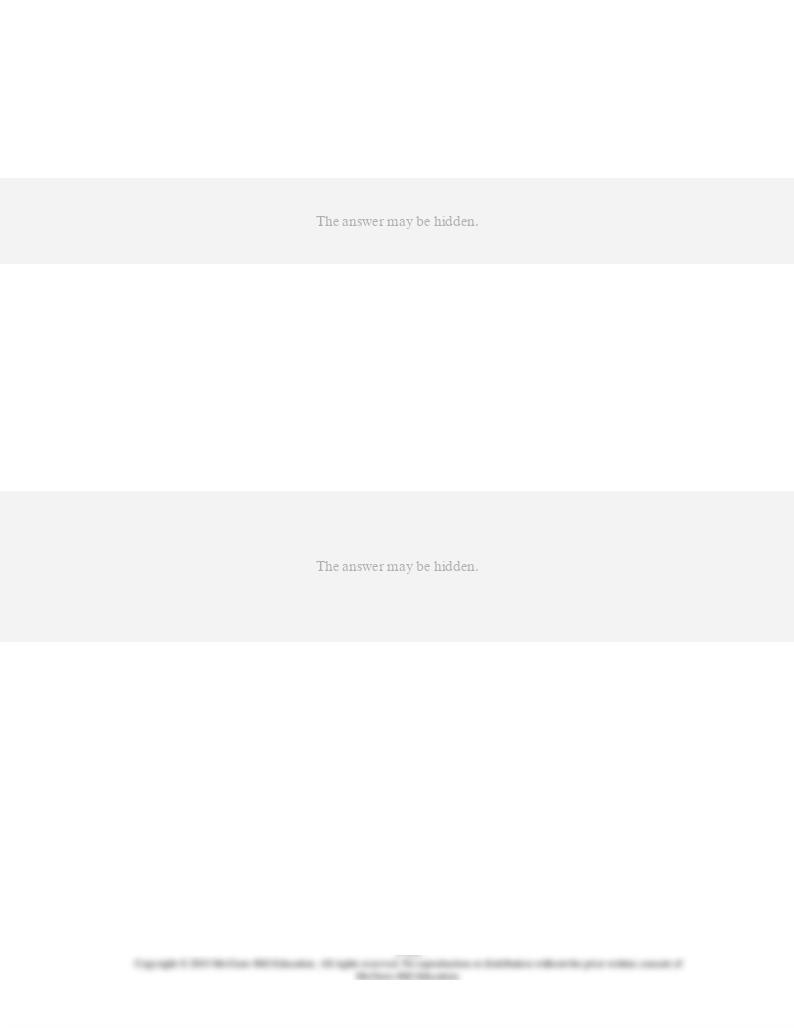
17.
Consumers spend their incomes to get the maximum benefit or satisfaction from the
goods and services they purchase. This is a reflection of:
AACSB: Reflective Thinking
Accessibility: Keyboard Navigation
Blooms: Remember
Difficulty: 1 Easy
Learning Objective: 01-01 Define economics and the features of the economic perspective.
Topic: Economic perspective
Topic: Economics
18.
If someone produced too much of a good, this would suggest that:
AACSB: Reflective Thinking
Accessibility: Keyboard Navigation
Blooms: Understand
Difficulty: 2 Medium
Learning Objective: 01-01 Define economics and the features of the economic perspective.
Topic: Economic perspective
Topic: Economics
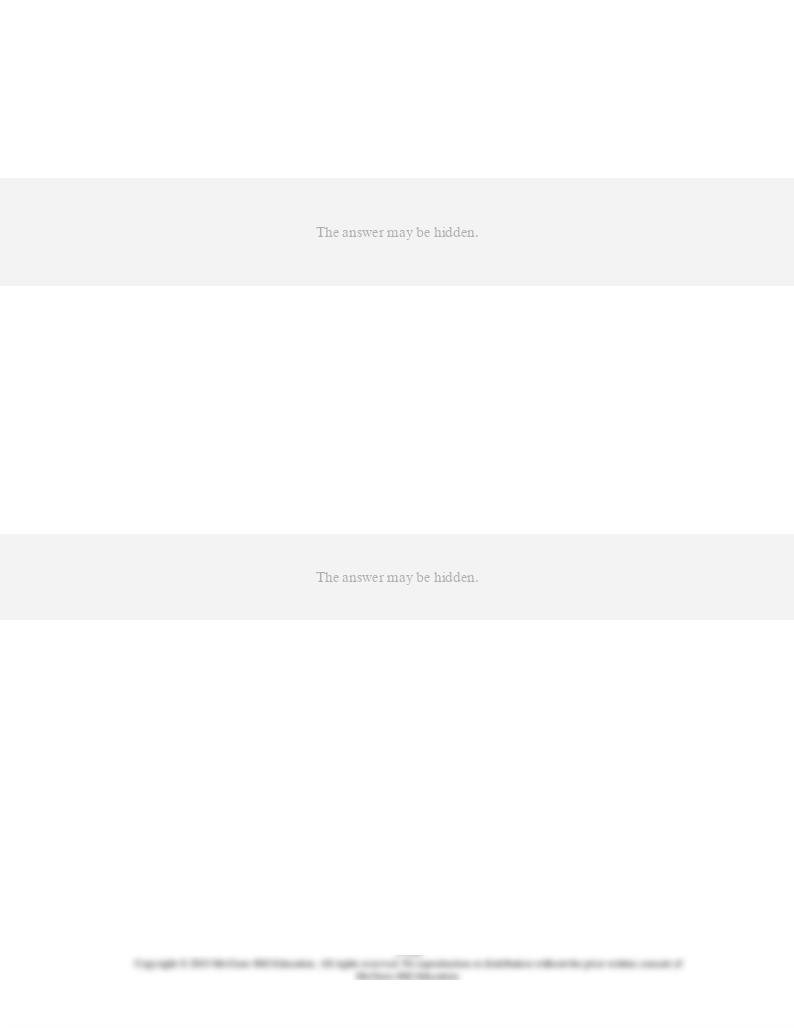
19.
Even though local newspapers are very inexpensive, people rarely buy more than one of
them each day. This fact:
AACSB: Reflective Thinking
Accessibility: Keyboard Navigation
Blooms: Apply
Difficulty: 2 Medium
Learning Objective: 01-01 Define economics and the features of the economic perspective.
Topic: Economic perspective
Topic: Economics
20.
In deciding whether to study for an economics quiz or go to a movie, one is confronted by
the idea(s) of:
AACSB: Reflective Thinking
Accessibility: Keyboard Navigation
Blooms: Understand
Difficulty: 2 Medium
Learning Objective: 01-01 Define economics and the features of the economic perspective.
Topic: Economic perspective
Topic: Economics
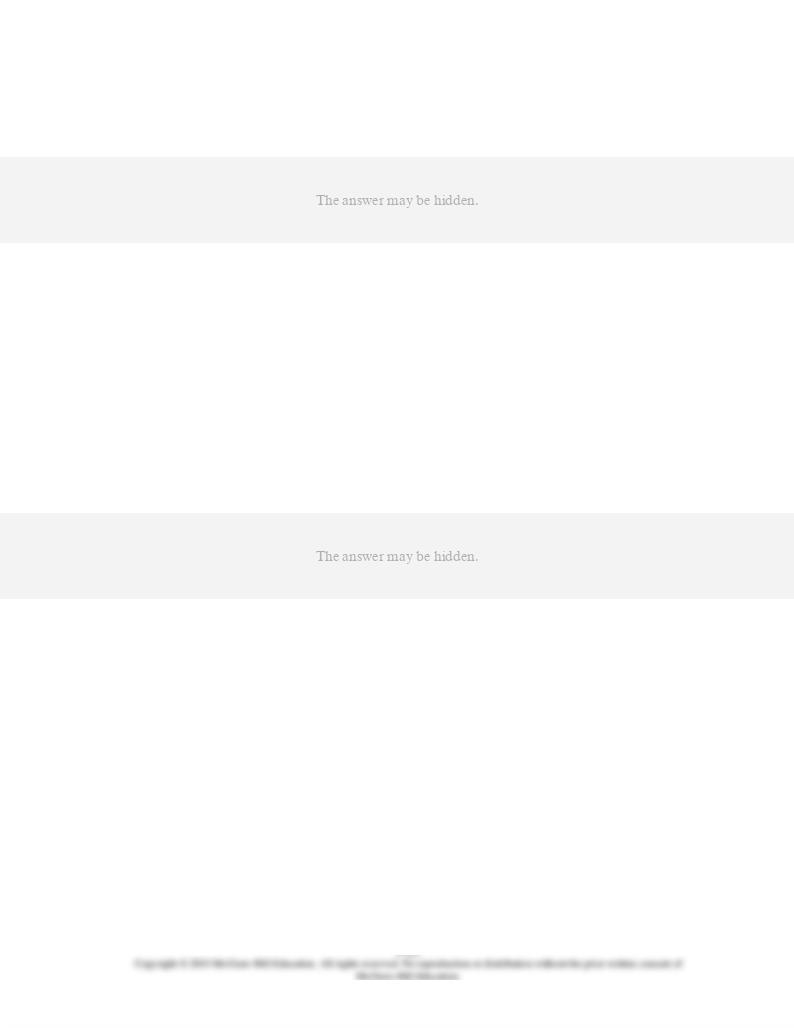
21.
Which one of the following expressions best states the idea of opportunity cost?
AACSB: Analytic
Accessibility: Keyboard Navigation
Blooms: Understand
Difficulty: 2 Medium
Learning Objective: 01-01 Define economics and the features of the economic perspective.
Topic: Economic perspective
Topic: Economics
22.
Suppose that a university decides to spend $1 million to upgrade personal computers and
scientific equipment for faculty rather than spend $1 million to expand parking for
students. This example illustrates:
AACSB: Analytic
Accessibility: Keyboard Navigation
Blooms: Apply
Difficulty: 2 Medium
Learning Objective: 01-01 Define economics and the features of the economic perspective.
Topic: Economic perspective
Topic: Economics

23.
Which of the following most closely relates to the idea of opportunity costs?
AACSB: Reflective Thinking
Accessibility: Keyboard Navigation
Blooms: Understand
Difficulty: 2 Medium
Learning Objective: 01-01 Define economics and the features of the economic perspective.
Topic: Economic perspective
Topic: Economics
24.
Economists contend that most economic decisions are:
AACSB: Analytic
Accessibility: Keyboard Navigation
Blooms: Remember
Difficulty: 1 Easy
Learning Objective: 01-01 Define economics and the features of the economic perspective.
Topic: Economic perspective
Topic: Economics
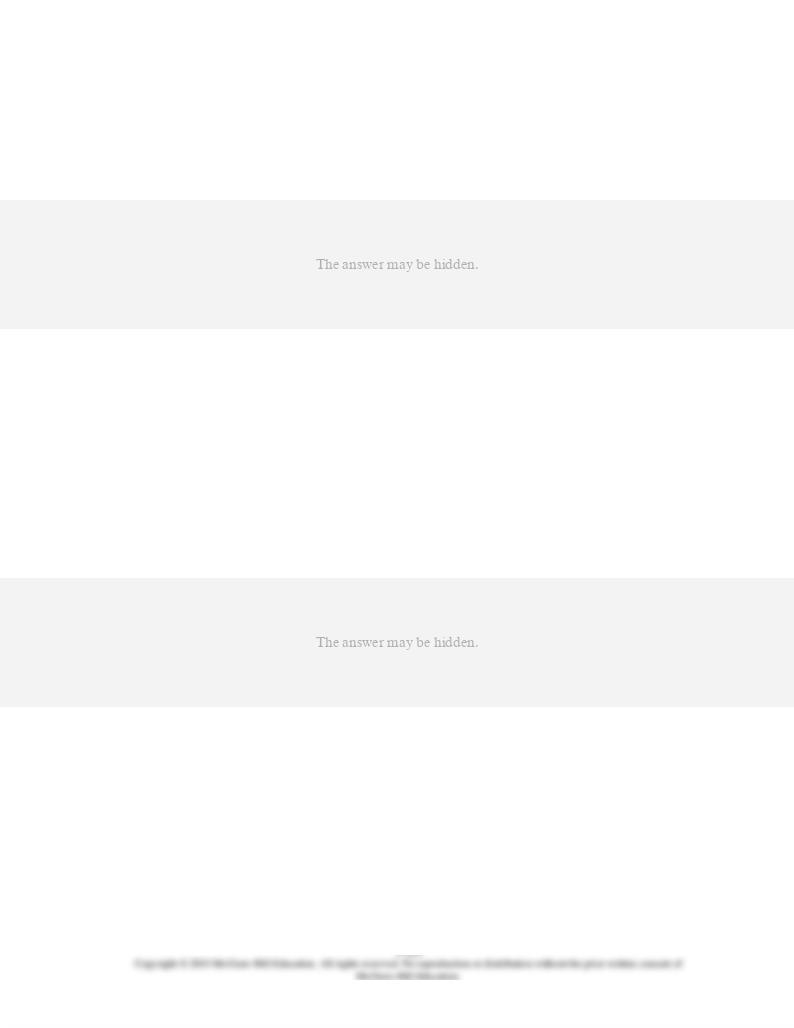
25.
Alex sees that his neighbors' lawns all need mowing. He offers to provide the service in
exchange for a wage of $20 per hour. Some neighbors accept Alex's offer and others
refuse. Economists would describe Alex's behavior as:
AACSB: Reflective Thinking
Accessibility: Keyboard Navigation
Blooms: Apply
Difficulty: 2 Medium
Learning Objective: 01-01 Define economics and the features of the economic perspective.
Topic: Economic perspective
Topic: Economics
26.
Kara was out jogging and, despite being tired, decided to run one more mile. Based on her
actions, economists would conclude that Kara:
AACSB: Reflective Thinking
Accessibility: Keyboard Navigation
Blooms: Apply
Difficulty: 2 Medium
Learning Objective: 01-01 Define economics and the features of the economic perspective.
Topic: Economic perspective
Topic: Economics
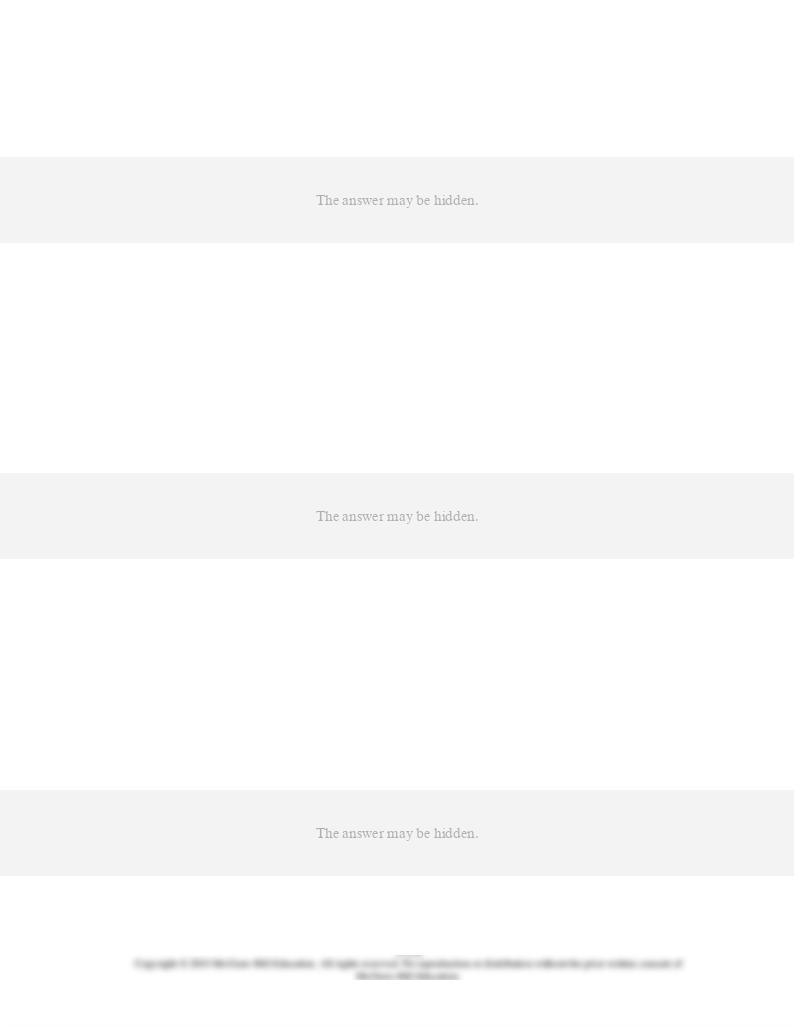
27.
An economic hypothesis:
AACSB: Analytic
Accessibility: Keyboard Navigation
Blooms: Remember
Difficulty: 1 Easy
Learning Objective: 01-02 Describe the role of economic theory in economics.
Topic: Theories, principles, and models
28.
Which of the following terms implies the
least
degree of confidence in an economic
generalization?
AACSB: Analytic
Accessibility: Keyboard Navigation
Blooms: Remember
Difficulty: 1 Easy
Learning Objective: 01-02 Describe the role of economic theory in economics.
Topic: Theories, principles, and models
29.
Which of the following terms implies the
greatest
degree of confidence in an economic
generalization?
AACSB: Analytic
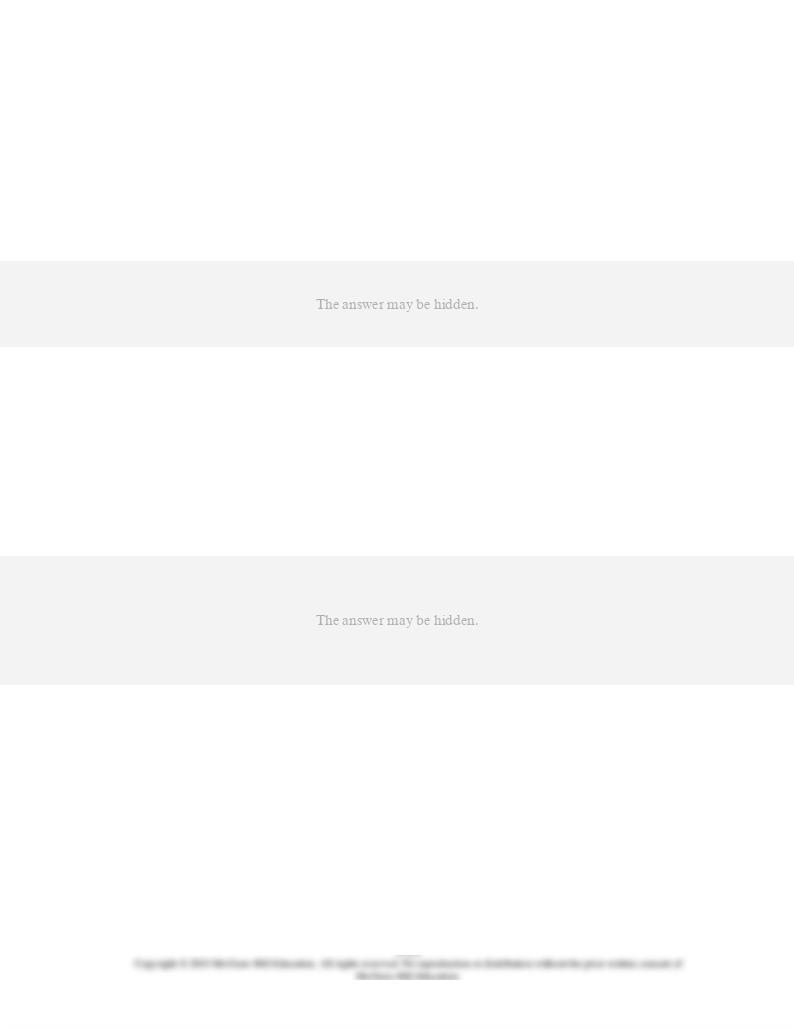
Accessibility: Keyboard Navigation
Blooms: Remember
Difficulty: 1 Easy
Learning Objective: 01-02 Describe the role of economic theory in economics.
Topic: Theories, principles, and models
30.
A well-tested economic theory is often called:
AACSB: Analytic
Accessibility: Keyboard Navigation
Blooms: Remember
Difficulty: 1 Easy
Learning Objective: 01-02 Describe the role of economic theory in economics.
Topic: Theories, principles, and models
31.
The scientific method is:
AACSB: Analytic
Accessibility: Keyboard Navigation
Blooms: Remember
Difficulty: 1 Easy
Learning Objective: 01-02 Describe the role of economic theory in economics.
Topic: Theories, principles, and models
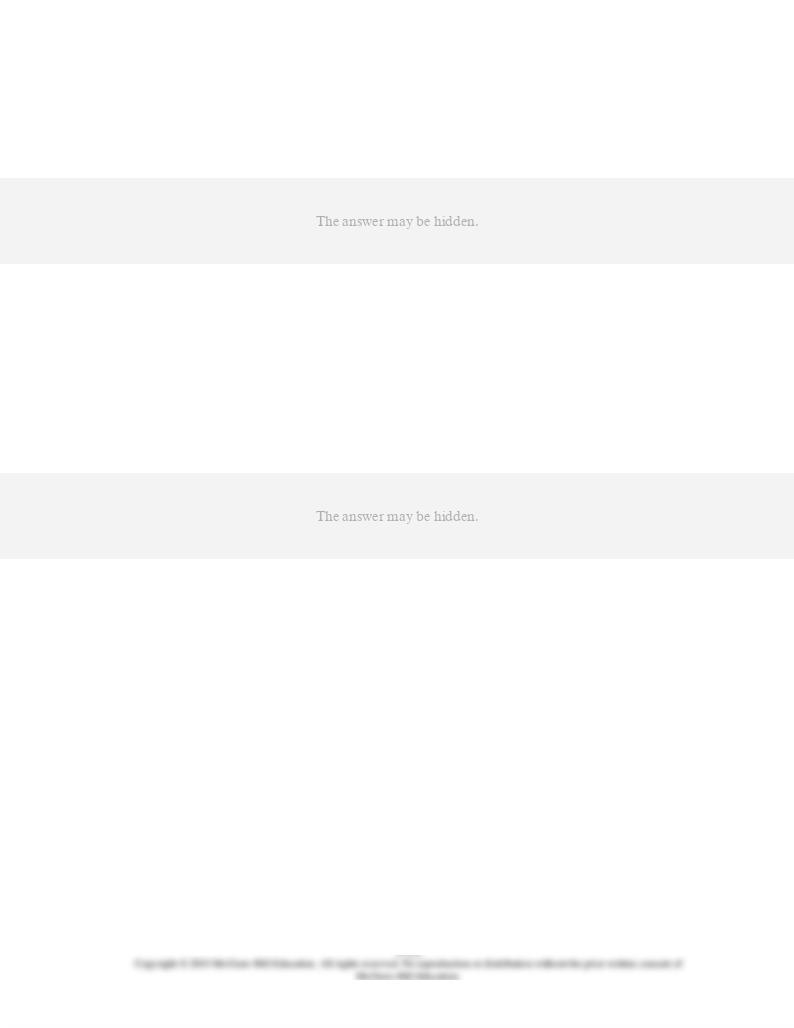
32.
The process by which economists test hypotheses against facts to develop theories,
principles, and models is called:
AACSB: Analytic
Accessibility: Keyboard Navigation
Blooms: Remember
Difficulty: 1 Easy
Learning Objective: 01-02 Describe the role of economic theory in economics.
Topic: Theories, principles, and models
33.
Economic theories:
AACSB: Analytic
Accessibility: Keyboard Navigation
Blooms: Remember
Difficulty: 1 Easy
Learning Objective: 01-02 Describe the role of economic theory in economics.
Topic: Theories, principles, and models

34.
Which of the following is a
correct
statement?
AACSB: Analytic
Accessibility: Keyboard Navigation
Blooms: Understand
Difficulty: 2 Medium
Learning Objective: 01-02 Describe the role of economic theory in economics.
Topic: Theories, principles, and models
35.
In constructing models, economists:
AACSB: Analytic
Accessibility: Keyboard Navigation
Blooms: Understand
Difficulty: 2 Medium
Learning Objective: 01-02 Describe the role of economic theory in economics.
Topic: Theories, principles, and models
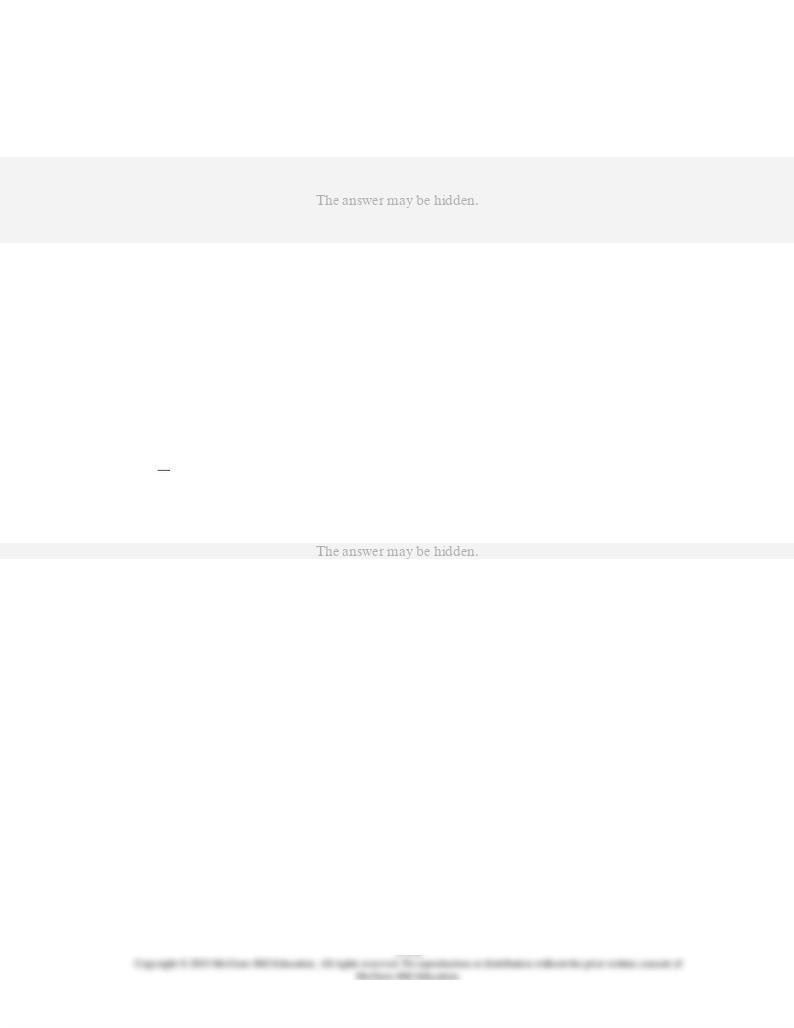
36.
The Latin term "ceteris paribus" means:
AACSB: Analytic
Accessibility: Keyboard Navigation
Blooms: Remember
Difficulty: 1 Easy
Learning Objective: 01-02 Describe the role of economic theory in economics.
Topic: Theories, principles, and models
37.
The basic purpose of the other-things-equal assumption is to:
A.
allow one to reason about the relationship between variables
X
and
Y
without the
intrusion of variable
Z
.
B.
allow one to focus upon micro variables by ignoring macro variables.
C.
allow one to focus upon macro variables by ignoring micro variables.
AACSB: Analytic
Accessibility: Keyboard Navigation
Blooms: Understand
Difficulty: 2 Medium
Learning Objective: 01-02 Describe the role of economic theory in economics.
Topic: Theories, principles, and models

38.
Suppose an economist says that "other things equal, the lower the price of bananas, the
greater the amount of bananas purchased." This statement indicates that:
AACSB: Reflective Thinking
Accessibility: Keyboard Navigation
Blooms: Apply
Difficulty: 2 Medium
Learning Objective: 01-02 Describe the role of economic theory in economics.
Topic: Theories, principles, and models
39.
The term "other things equal" means that:
AACSB: Analytic
Accessibility: Keyboard Navigation
Blooms: Remember
Difficulty: 1 Easy
Learning Objective: 01-02 Describe the role of economic theory in economics.
Topic: Theories, principles, and models
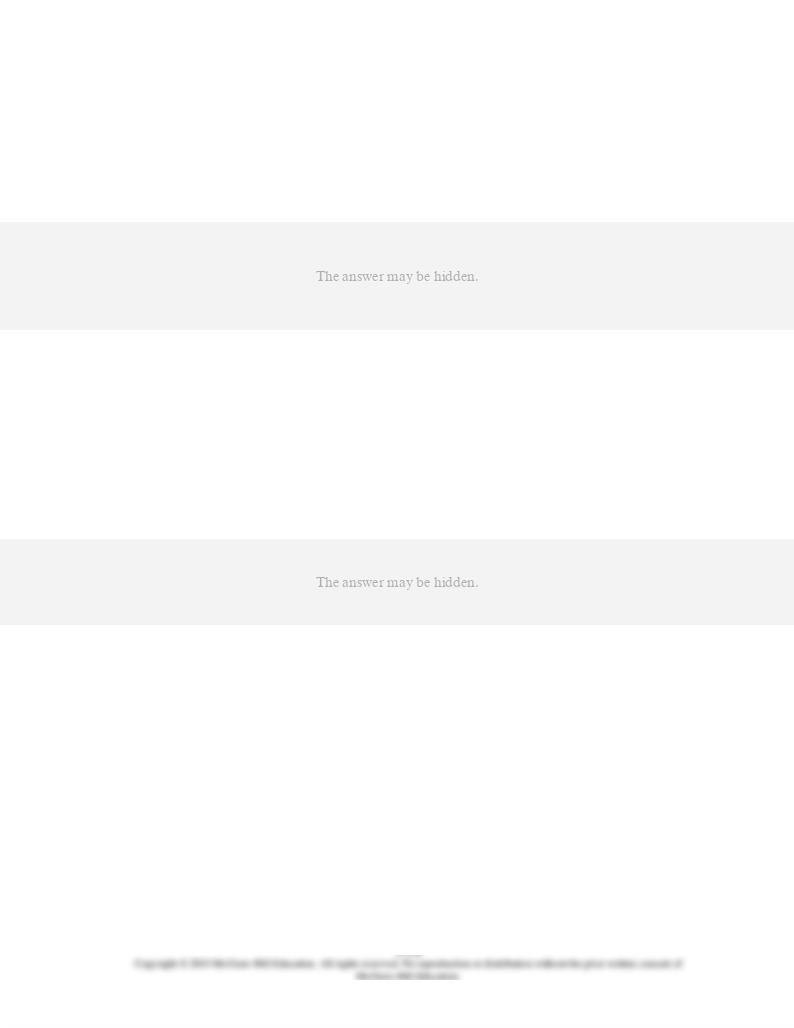
40.
Kelly works at an ice cream shop and observes that the number of people buying ice
cream varies greatly from day to day. For a couple of weeks she has recorded the number
of people at the shop each day, as well as the daily temperature. If Kelly is using the
scientific method to better understand ice cream buying habits, her next step is to:
AACSB: Reflective Thinking
Accessibility: Keyboard Navigation
Blooms: Understand
Difficulty: 2 Medium
Learning Objective: 01-02 Describe the role of economic theory in economics.
Topic: Theories, principles, and models
41.
Macroeconomics approaches the study of economics from the viewpoint of:
AACSB: Analytic
Accessibility: Keyboard Navigation
Blooms: Remember
Difficulty: 1 Easy
Learning Objective: 01-03 Distinguish microeconomics from macroeconomics and positive economics from normative
economics.
Topic: Microeconomics and macroeconomics

42.
Which of the following is associated with macroeconomics?
1990.
C.
A study of the trend of pecan prices since the Second World War.
AACSB: Reflective Thinking
Accessibility: Keyboard Navigation
Blooms: Understand
Difficulty: 2 Medium
Learning Objective: 01-03 Distinguish microeconomics from macroeconomics and positive economics from normative
economics.
Topic: Microeconomics and macroeconomics
43.
The problems of aggregate inflation and unemployment are:
AACSB: Analytic
Accessibility: Keyboard Navigation
Blooms: Remember
Difficulty: 1 Easy
Learning Objective: 01-03 Distinguish microeconomics from macroeconomics and positive economics from normative
economics.
Topic: Microeconomics and macroeconomics

44.
Which of the following statements pertains to macroeconomics?
AACSB: Analytic
Accessibility: Keyboard Navigation
Blooms: Understand
Difficulty: 2 Medium
Learning Objective: 01-03 Distinguish microeconomics from macroeconomics and positive economics from normative
economics.
Topic: Microeconomics and macroeconomics
45.
Macroeconomics can best be described as the:
AACSB: Analytic
Accessibility: Keyboard Navigation
Blooms: Remember
Difficulty: 1 Easy
Learning Objective: 01-03 Distinguish microeconomics from macroeconomics and positive economics from normative
economics.
Topic: Microeconomics and macroeconomics
46.
Microeconomics is concerned with:
AACSB: Analytic

Accessibility: Keyboard Navigation
Blooms: Remember
Difficulty: 1 Easy
Learning Objective: 01-03 Distinguish microeconomics from macroeconomics and positive economics from normative
economics.
Topic: Microeconomics and macroeconomics
47.
Microeconomics:
AACSB: Reflective Thinking
Accessibility: Keyboard Navigation
Blooms: Understand
Difficulty: 2 Medium
Learning Objective: 01-03 Distinguish microeconomics from macroeconomics and positive economics from normative
economics.
Topic: Microeconomics and macroeconomics
48.
Which of the following is a microeconomic statement?
AACSB: Reflective Thinking
Accessibility: Keyboard Navigation
Blooms: Apply
Difficulty: 2 Medium
Learning Objective: 01-03 Distinguish microeconomics from macroeconomics and positive economics from normative
economics.
Topic: Microeconomics and macroeconomics
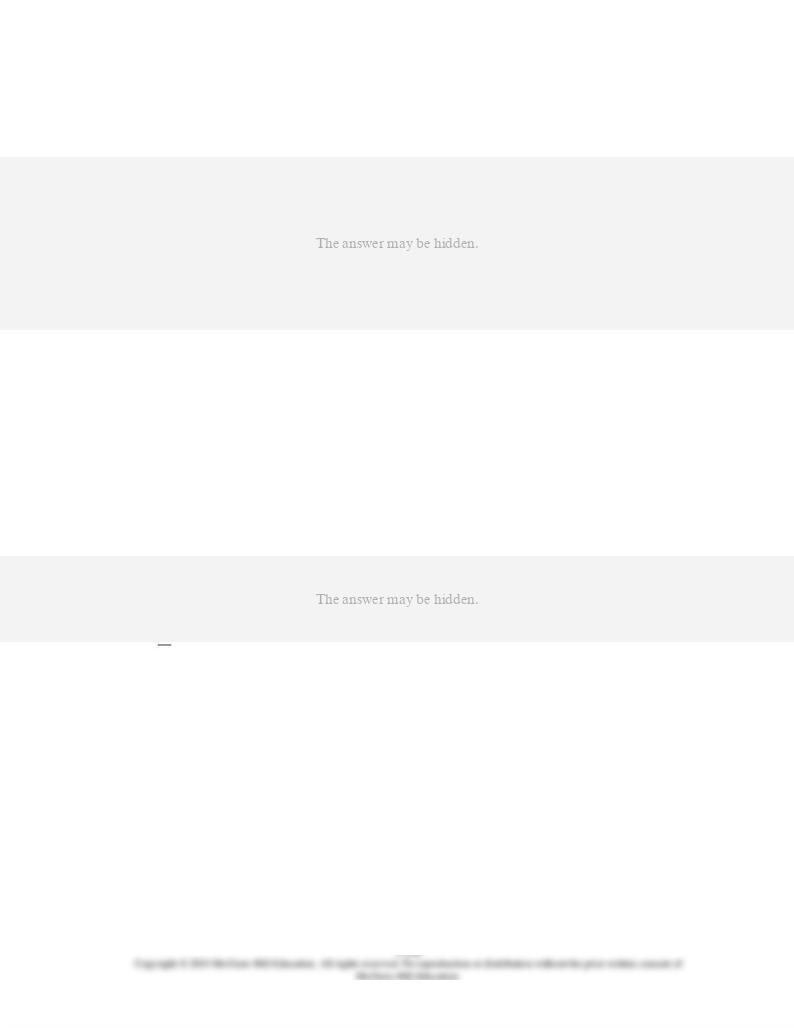
49.
Which of the following statements is true?
AACSB: Analytic
Accessibility: Keyboard Navigation
Blooms: Remember
Difficulty: 1 Easy
Learning Objective: 01-03 Distinguish microeconomics from macroeconomics and positive economics from normative
economics.
Topic: Microeconomics and macroeconomics
50.
A normative statement is one that:
AACSB: Analytic
Accessibility: Keyboard Navigation
Blooms: Remember
Difficulty: 1 Easy
Learning Objective: 01-03 Distinguish microeconomics from macroeconomics and positive economics from normative
economics.
Topic: Positive and normative statements
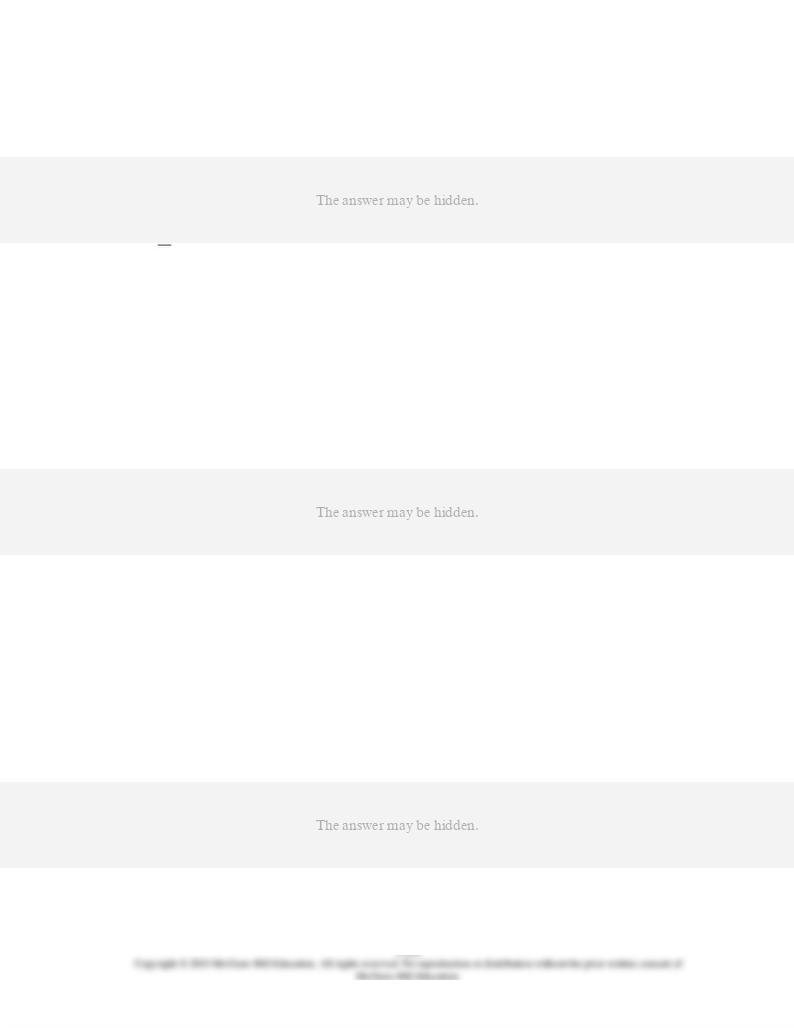
51.
A positive statement is one that is:
AACSB: Analytic
Accessibility: Keyboard Navigation
Blooms: Understand
Difficulty: 2 Medium
Learning Objective: 01-03 Distinguish microeconomics from macroeconomics and positive economics from normative
economics.
Topic: Positive and normative statements
52.
Which of the following is a positive statement?
AACSB: Reflective Thinking
Accessibility: Keyboard Navigation
Blooms: Apply
Difficulty: 2 Medium
Learning Objective: 01-03 Distinguish microeconomics from macroeconomics and positive economics from normative
economics.
Topic: Positive and normative statements
53.
Normative statements are concerned primarily with:
AACSB: Analytic
Accessibility: Keyboard Navigation

Blooms: Remember
Difficulty: 1 Easy
Learning Objective: 01-03 Distinguish microeconomics from macroeconomics and positive economics from normative
economics.
Topic: Positive and normative statements
54.
A positive statement is concerned primarily with:
AACSB: Analytic
Accessibility: Keyboard Navigation
Blooms: Remember
Difficulty: 1 Easy
Learning Objective: 01-03 Distinguish microeconomics from macroeconomics and positive economics from normative
economics.
Topic: Positive and normative statements
55.
"Economics is concerned with how individuals, institutions, and society make optimal
choices under conditions of scarcity." This statement is:
AACSB: Reflective Thinking
Accessibility: Keyboard Navigation
Blooms: Understand
Difficulty: 2 Medium
Learning Objective: 01-03 Distinguish microeconomics from macroeconomics and positive economics from normative
economics.
Topic: Positive and normative statements
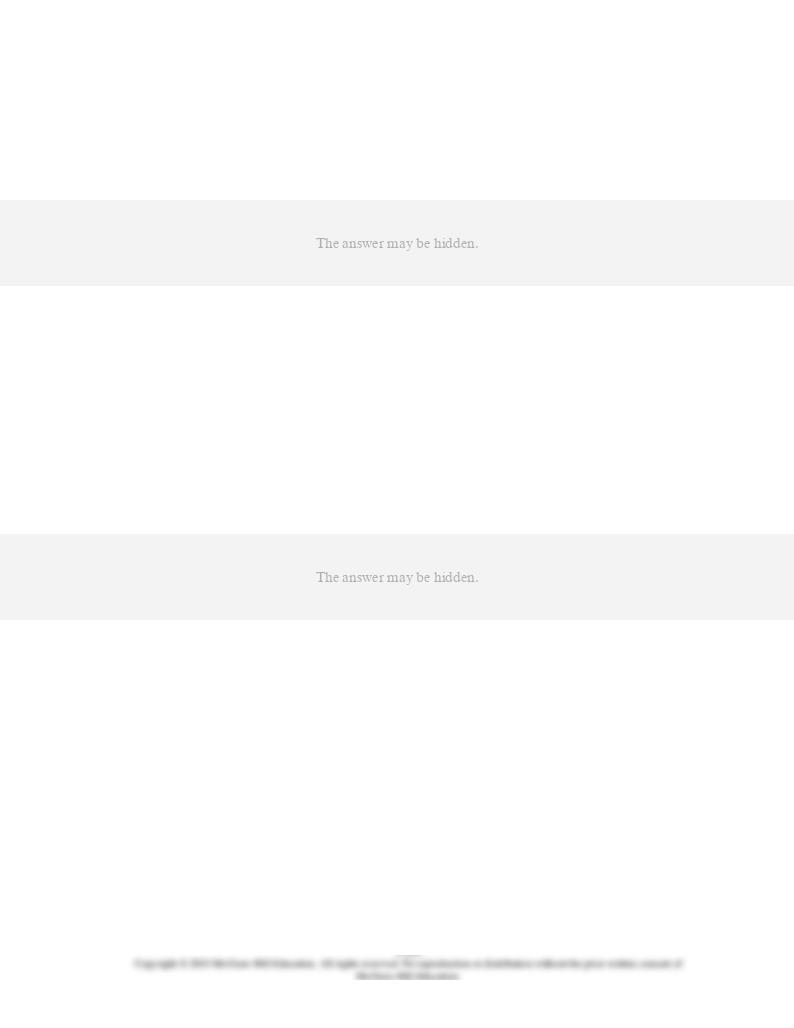
56.
Ben says that "an increase in the tax on beer will raise its price." Holly argues that "taxes
should be increased on beer because college students drink too much." We can conclude
that:
AACSB: Reflective Thinking
Accessibility: Keyboard Navigation
Blooms: Apply
Difficulty: 2 Medium
Learning Objective: 01-03 Distinguish microeconomics from macroeconomics and positive economics from normative
economics.
Topic: Positive and normative statements
57.
"Macroeconomics is the part of economics concerned with individual units such as a
person, a household, a firm, or an industry." This statement is:
AACSB: Reflective Thinking
Accessibility: Keyboard Navigation
Blooms: Apply
Difficulty: 2 Medium
Learning Objective: 01-03 Distinguish microeconomics from macroeconomics and positive economics from normative
economics.
Topic: Positive and normative statements
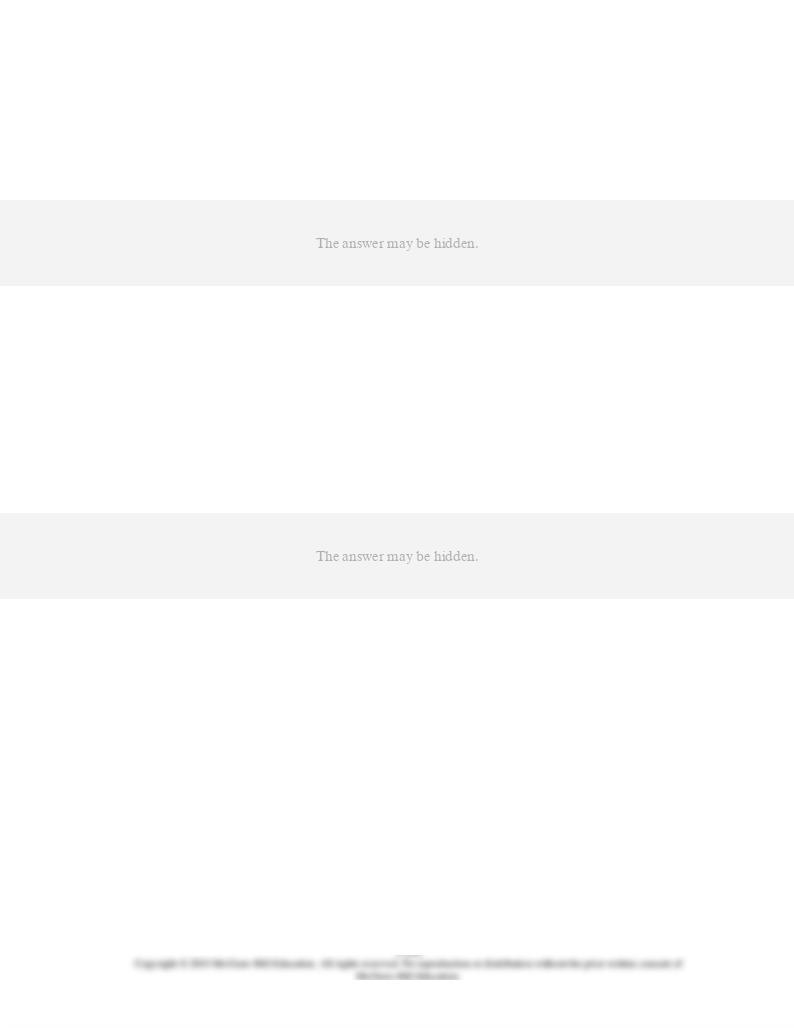
58.
Brinley says that "gas prices are rising because there aren't enough oil refineries." Katie
argues that "gas prices are rising because of the growing demand for gasoline from China
and India." We can conclude that:
AACSB: Reflective Thinking
Accessibility: Keyboard Navigation
Blooms: Apply
Difficulty: 2 Medium
Learning Objective: 01-03 Distinguish microeconomics from macroeconomics and positive economics from normative
economics.
Topic: Positive and normative statements
59.
The economizing problem is:
AACSB: Analytic
Accessibility: Keyboard Navigation
Blooms: Remember
Difficulty: 1 Easy
Learning Objective: 01-04 Explain the individual's economizing problem and how trade-offs; opportunity costs; and
attainable combinations can be illustrated with budget lines.
Topic: Individual's economizing problem-budget lines
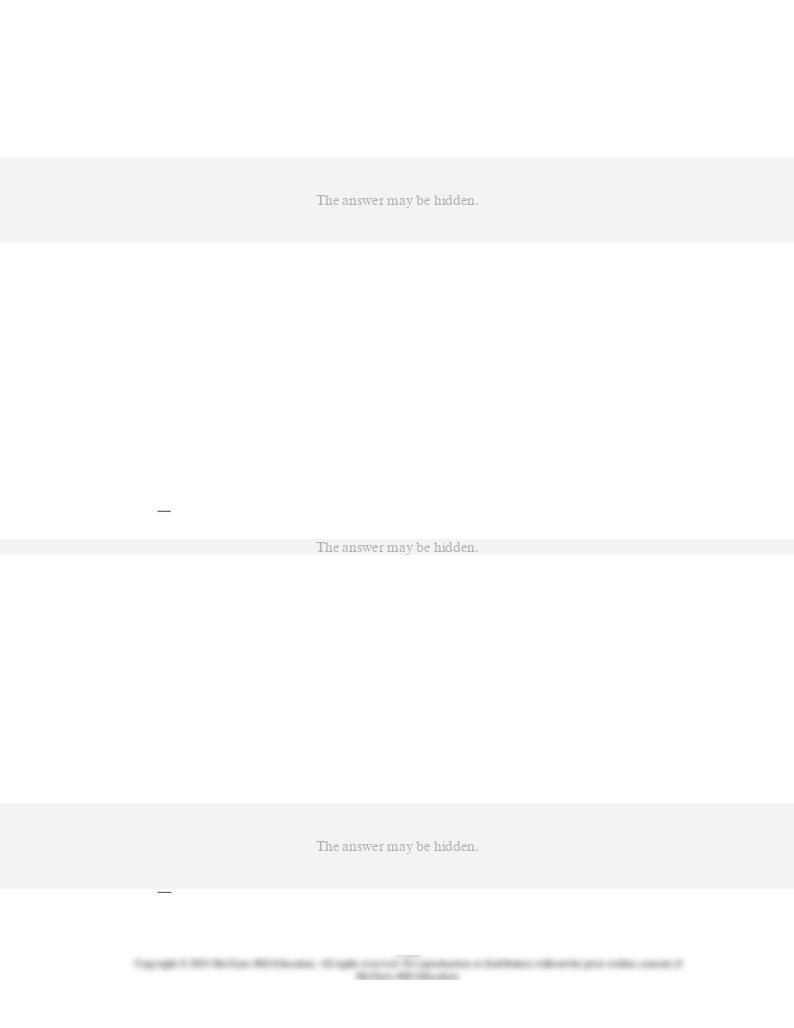
60.
The economizing problem is one of deciding how to make the best use of:
AACSB: Analytic
Accessibility: Keyboard Navigation
Blooms: Remember
Difficulty: 1 Easy
Learning Objective: 01-04 Explain the individual's economizing problem and how trade-offs; opportunity costs; and
attainable combinations can be illustrated with budget lines.
Topic: Individual's economizing problem-budget lines
61.
The scarcity problem:
A.
persists only because countries have failed to achieve continuous full employment.
B.
persists because economic wants exceed available productive resources.
C.
has been solved in all industrialized nations.
AACSB: Analytic
Accessibility: Keyboard Navigation
Blooms: Understand
Difficulty: 2 Medium
Learning Objective: 01-04 Explain the individual's economizing problem and how trade-offs; opportunity costs; and
attainable combinations can be illustrated with budget lines.
Topic: Individual's economizing problem-budget lines
62.
The alternative combinations of two goods that a consumer can purchase with a specific
money income is shown by:
AACSB: Analytic

Accessibility: Keyboard Navigation
Blooms: Remember
Difficulty: 1 Easy
Learning Objective: 01-04 Explain the individual's economizing problem and how trade-offs; opportunity costs; and
attainable combinations can be illustrated with budget lines.
Topic: Individual's economizing problem-budget lines
63.
The budget line shows:
AACSB: Analytic
Accessibility: Keyboard Navigation
Blooms: Remember
Difficulty: 1 Easy
Learning Objective: 01-04 Explain the individual's economizing problem and how trade-offs; opportunity costs; and
attainable combinations can be illustrated with budget lines.
Topic: Individual's economizing problem-budget lines

64.
Refer to the budget line shown in the diagram. If the consumer's money income is $20,
the:
AACSB: Reflective Thinking
Blooms: Apply
Difficulty: 2 Medium
Learning Objective: 01-04 Explain the individual's economizing problem and how trade-offs; opportunity costs; and
attainable combinations can be illustrated with budget lines.
Topic: Individual's economizing problem-budget lines
Type: Graph
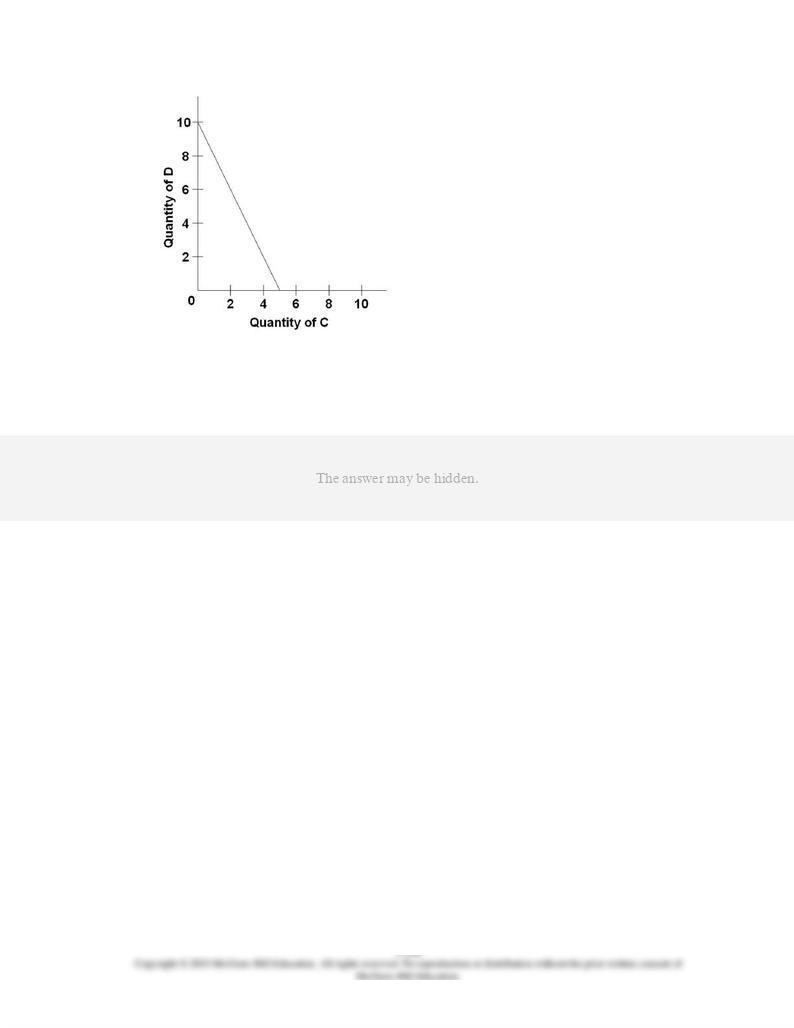
65.
Refer to the budget line shown in the diagram. If the consumer's money income is $20,
which of the following combinations of goods is
unattainable
?
AACSB: Analytic
Blooms: Analyze
Difficulty: 3 Hard
Learning Objective: 01-04 Explain the individual's economizing problem and how trade-offs; opportunity costs; and
attainable combinations can be illustrated with budget lines.
Topic: Individual's economizing problem-budget lines
Type: Graph
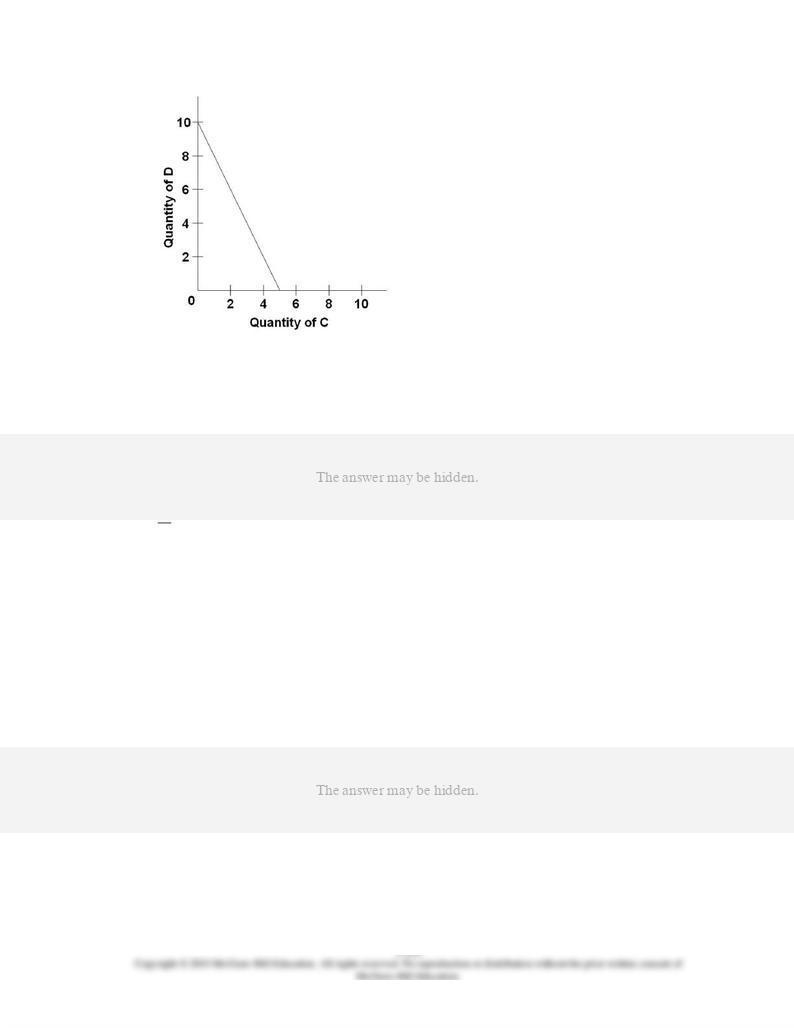
66.
Refer to the budget line shown in the diagram. The absolute value of the slope of the
budget line is:
AACSB: Analytic
Blooms: Apply
Difficulty: 3 Hard
Learning Objective: 01-04 Explain the individual's economizing problem and how trade-offs; opportunity costs; and
attainable combinations can be illustrated with budget lines.
Topic: Individual's economizing problem-budget lines
Type: Graph
67.
In moving along a given budget line:
AACSB: Analytic
Accessibility: Keyboard Navigation
Blooms: Understand
Difficulty: 2 Medium

Learning Objective: 01-04 Explain the individual's economizing problem and how trade-offs; opportunity costs; and
attainable combinations can be illustrated with budget lines.
Topic: Individual's economizing problem-budget lines
68.
An increase in money income:
AACSB: Analytic
Accessibility: Keyboard Navigation
Blooms: Understand
Difficulty: 2 Medium
Learning Objective: 01-04 Explain the individual's economizing problem and how trade-offs; opportunity costs; and
attainable combinations can be illustrated with budget lines.
Topic: Individual's economizing problem-budget lines
69.
The shift of the budget line from
cd
to
ab
in the figure is consistent with:
AACSB: Analytic
Blooms: Apply

Difficulty: 2 Medium
Learning Objective: 01-04 Explain the individual's economizing problem and how trade-offs; opportunity costs; and
attainable combinations can be illustrated with budget lines.
Topic: Individual's economizing problem-budget lines
Type: Graph
70.
Any combination of goods lying outside of the budget line:
AACSB: Analytic
Accessibility: Keyboard Navigation
Blooms: Remember
Difficulty: 1 Easy
Learning Objective: 01-04 Explain the individual's economizing problem and how trade-offs; opportunity costs; and
attainable combinations can be illustrated with budget lines.
Topic: Individual's economizing problem-budget lines

71.
Suppose you have a money income of $10, all of which you spend on Coke and popcorn. In
the diagram, the prices of Coke and popcorn respectively are:
AACSB: Analytic
Blooms: Apply
Difficulty: 3 Hard
Learning Objective: 01-04 Explain the individual's economizing problem and how trade-offs; opportunity costs; and
attainable combinations can be illustrated with budget lines.
Topic: Individual's economizing problem-budget lines
Type: Graph
72.
Other things equal, an increase in a consumer's money income:
AACSB: Analytic
Accessibility: Keyboard Navigation

Blooms: Understand
Difficulty: 2 Medium
Learning Objective: 01-04 Explain the individual's economizing problem and how trade-offs; opportunity costs; and
attainable combinations can be illustrated with budget lines.
Topic: Individual's economizing problem-budget lines
73.
The slope of a budget line reflects the:
AACSB: Analytic
Accessibility: Keyboard Navigation
Blooms: Remember
Difficulty: 1 Easy
Learning Objective: 01-04 Explain the individual's economizing problem and how trade-offs; opportunity costs; and
attainable combinations can be illustrated with budget lines.
Topic: Individual's economizing problem-budget lines
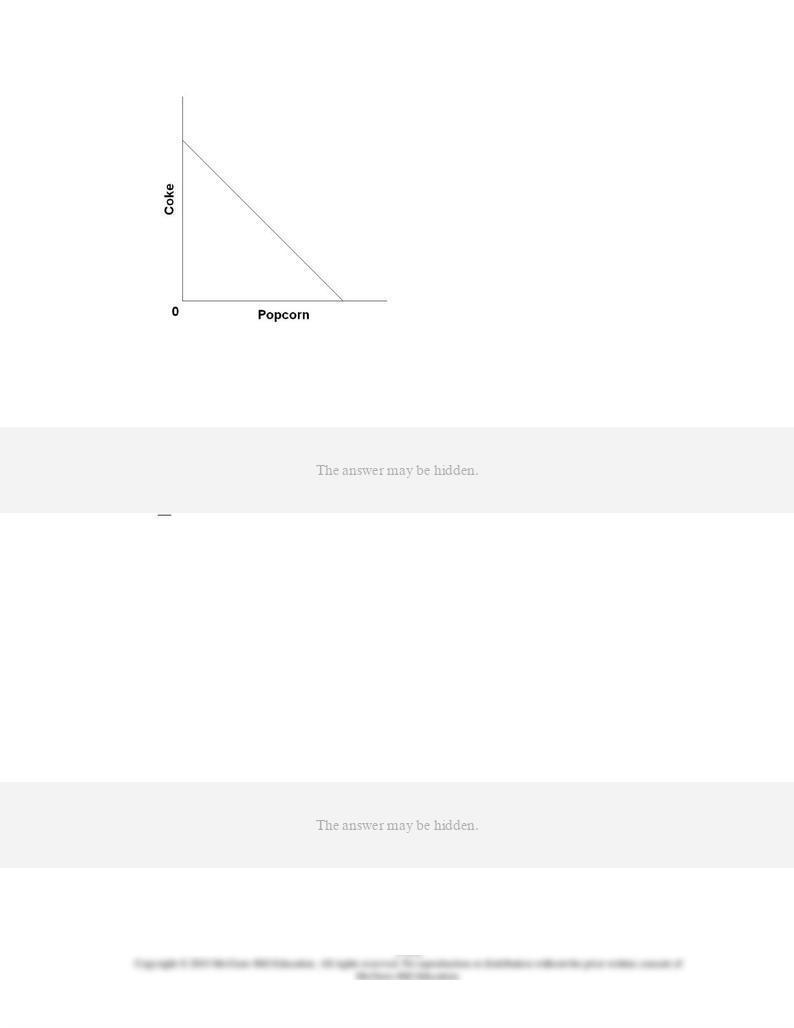
74.
Suppose Elroy's budget line is as shown on the diagram. If his tastes change in favor of
Coke and against popcorn, the budget line will:
AACSB: Analytic
Blooms: Understand
Difficulty: 2 Medium
Learning Objective: 01-04 Explain the individual's economizing problem and how trade-offs; opportunity costs; and
attainable combinations can be illustrated with budget lines.
Topic: Individual's economizing problem-budget lines
Type: Graph
75.
Assume the price of product Y (the quantity of which is on the vertical axis) is $15 and the
price of product X (the quantity of which is on the horizontal axis) is $3. Also assume that
money income is $60. The absolute value of the slope of the resulting budget line:
AACSB: Analytic
Accessibility: Keyboard Navigation
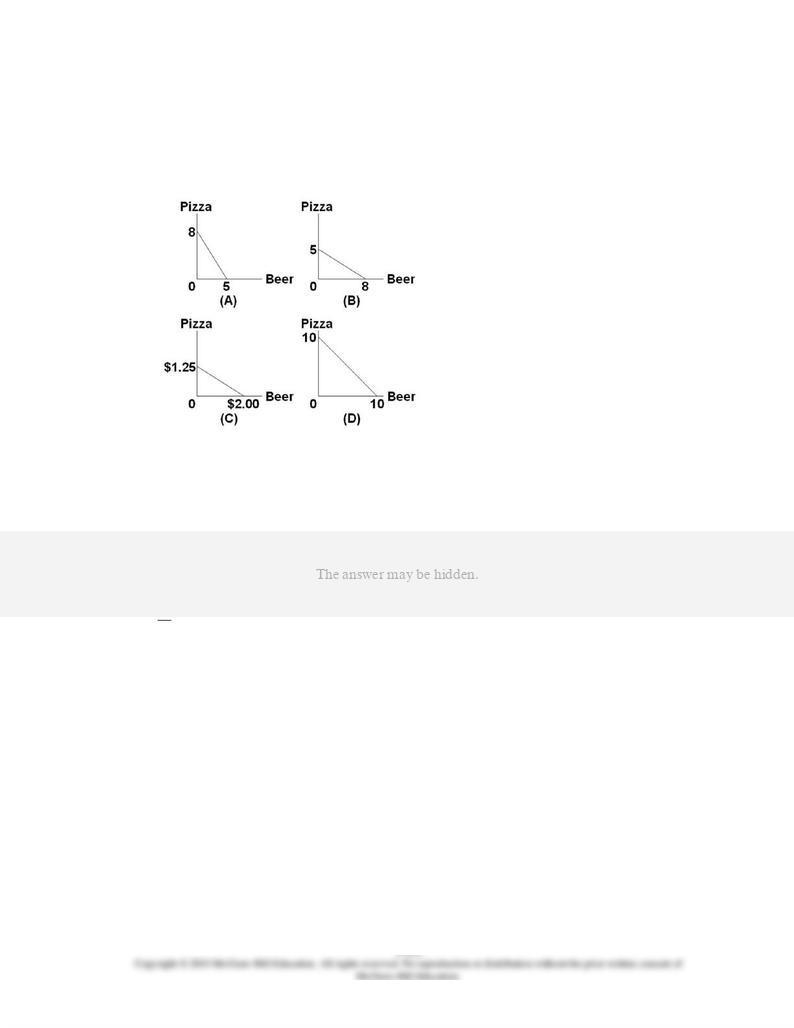
Blooms: Apply
Difficulty: 3 Hard
Learning Objective: 01-04 Explain the individual's economizing problem and how trade-offs; opportunity costs; and
attainable combinations can be illustrated with budget lines.
Topic: Individual's economizing problem-budget lines
76.
Refer to the graphs. Assume that pizza is measured in slices and beer in pints. In which of
the graphs is the opportunity cost of a pint of beer equal to one slice of pizza?
AACSB: Analytic
Blooms: Understand
Difficulty: 2 Medium
Learning Objective: 01-04 Explain the individual's economizing problem and how trade-offs; opportunity costs; and
attainable combinations can be illustrated with budget lines.
Topic: Individual's economizing problem-budget lines
Type: Graph
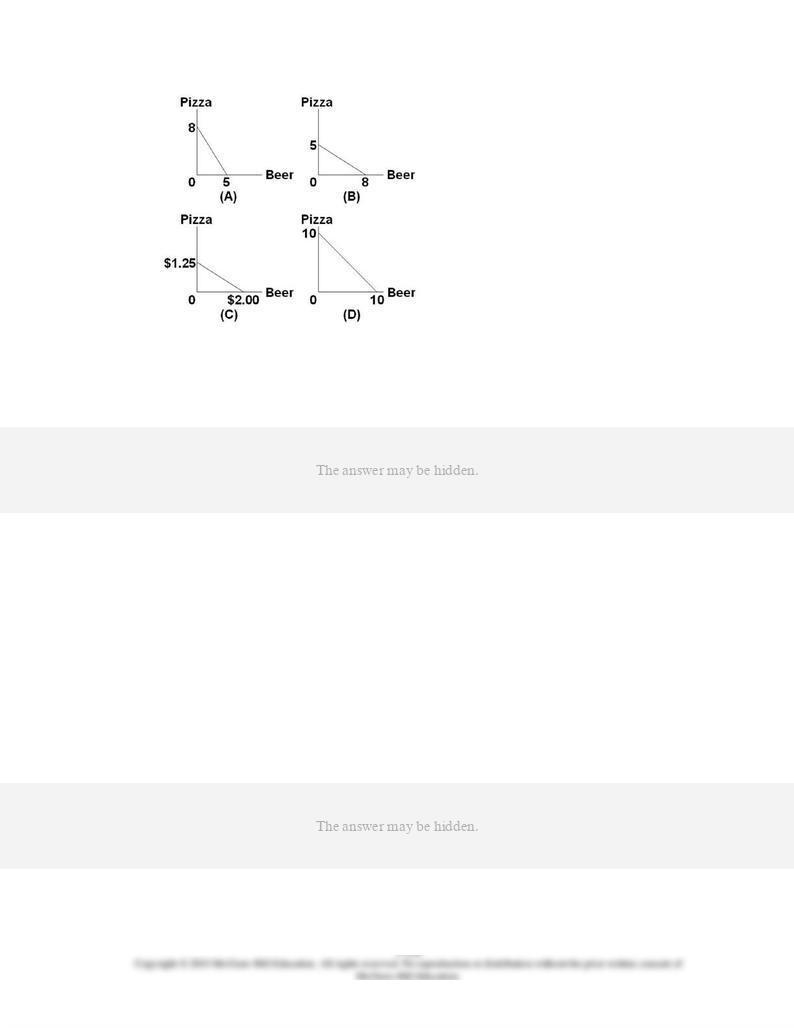
77.
Refer to the graphs. Assume that pizza is measured in slices and beer in pints. In which of
the graphs is the opportunity cost of a pint of beer the lowest?
AACSB: Analytic
Blooms: Understand
Difficulty: 2 Medium
Learning Objective: 01-04 Explain the individual's economizing problem and how trade-offs; opportunity costs; and
attainable combinations can be illustrated with budget lines.
Topic: Individual's economizing problem-budget lines
Type: Graph
78.
Suppose that Julia receives a $20 gift card for the local coffee shop, where she only buys
lattes and muffins. If the price of a latte is $4 and the price of a muffin is $2, then we can
conclude that Julia:
AACSB: Analytic
Accessibility: Keyboard Navigation
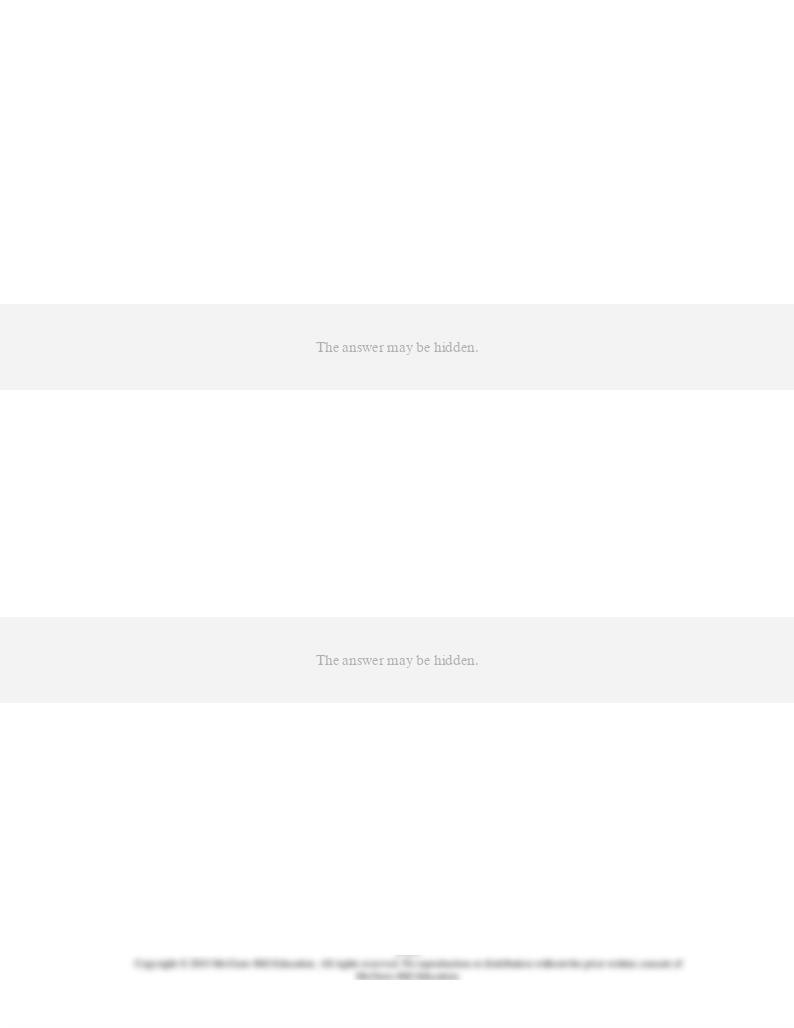
Blooms: Understand
Difficulty: 2 Medium
Learning Objective: 01-04 Explain the individual's economizing problem and how trade-offs; opportunity costs; and
attainable combinations can be illustrated with budget lines.
Topic: Individual's economizing problem-budget lines
79.
Camille is at the candy store with her grandmother, who offers to buy her $6 worth of
candy. If lollipops are $1 each and candy bars are $2 each, what combination of candy can
Camille's grandmother buy for her?
AACSB: Analytic
Accessibility: Keyboard Navigation
Blooms: Apply
Difficulty: 2 Medium
Learning Objective: 01-04 Explain the individual's economizing problem and how trade-offs; opportunity costs; and
attainable combinations can be illustrated with budget lines.
Topic: Individual's economizing problem-budget lines
80.
Which of the following is a labor resource?
AACSB: Analytic
Accessibility: Keyboard Navigation
Blooms: Remember
Difficulty: 1 Easy
Learning Objective: 01-05 List the categories of scarce resources and delineate the nature of society's economizing
problem.
Topic: Society's economizing problem

81.
Which of the following is a capital resource?
AACSB: Analytic
Accessibility: Keyboard Navigation
Blooms: Remember
Difficulty: 1 Easy
Learning Objective: 01-05 List the categories of scarce resources and delineate the nature of society's economizing
problem.
Topic: Society's economizing problem
82.
The four factors of production are:
AACSB: Analytic
Accessibility: Keyboard Navigation
Blooms: Remember
Difficulty: 1 Easy
Learning Objective: 01-05 List the categories of scarce resources and delineate the nature of society's economizing
problem.
Topic: Society's economizing problem
83.
Which of the following is a land resource?
AACSB: Analytic
Accessibility: Keyboard Navigation
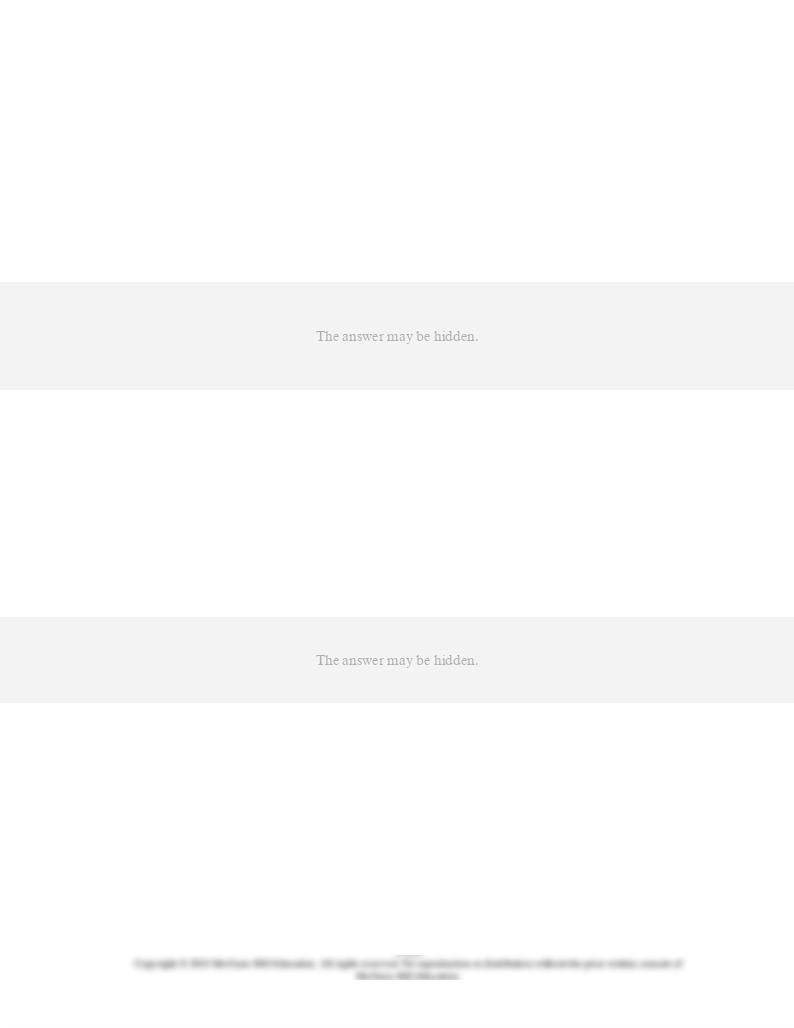
Blooms: Remember
Difficulty: 1 Easy
Learning Objective: 01-05 List the categories of scarce resources and delineate the nature of society's economizing
problem.
Topic: Society's economizing problem
84.
Which of the following lists includes only capital resources (and therefore no labor or land
resources)?
AACSB: Analytic
Accessibility: Keyboard Navigation
Blooms: Understand
Difficulty: 2 Medium
Learning Objective: 01-05 List the categories of scarce resources and delineate the nature of society's economizing
problem.
Topic: Society's economizing problem
85.
Money is not an economic resource because:
AACSB: Analytic
Accessibility: Keyboard Navigation
Blooms: Understand
Difficulty: 2 Medium
Learning Objective: 01-05 List the categories of scarce resources and delineate the nature of society's economizing
problem.
Topic: Society's economizing problem

86.
Economic resources are also called:
AACSB: Analytic
Accessibility: Keyboard Navigation
Blooms: Remember
Difficulty: 1 Easy
Learning Objective: 01-05 List the categories of scarce resources and delineate the nature of society's economizing
problem.
Topic: Society's economizing problem
87.
Which of the following do economists consider to be capital?
AACSB: Analytic
Accessibility: Keyboard Navigation
Blooms: Remember
Difficulty: 1 Easy
Learning Objective: 01-05 List the categories of scarce resources and delineate the nature of society's economizing
problem.
Topic: Society's economizing problem
88.
The main function of the entrepreneur is to:
AACSB: Analytic
Accessibility: Keyboard Navigation
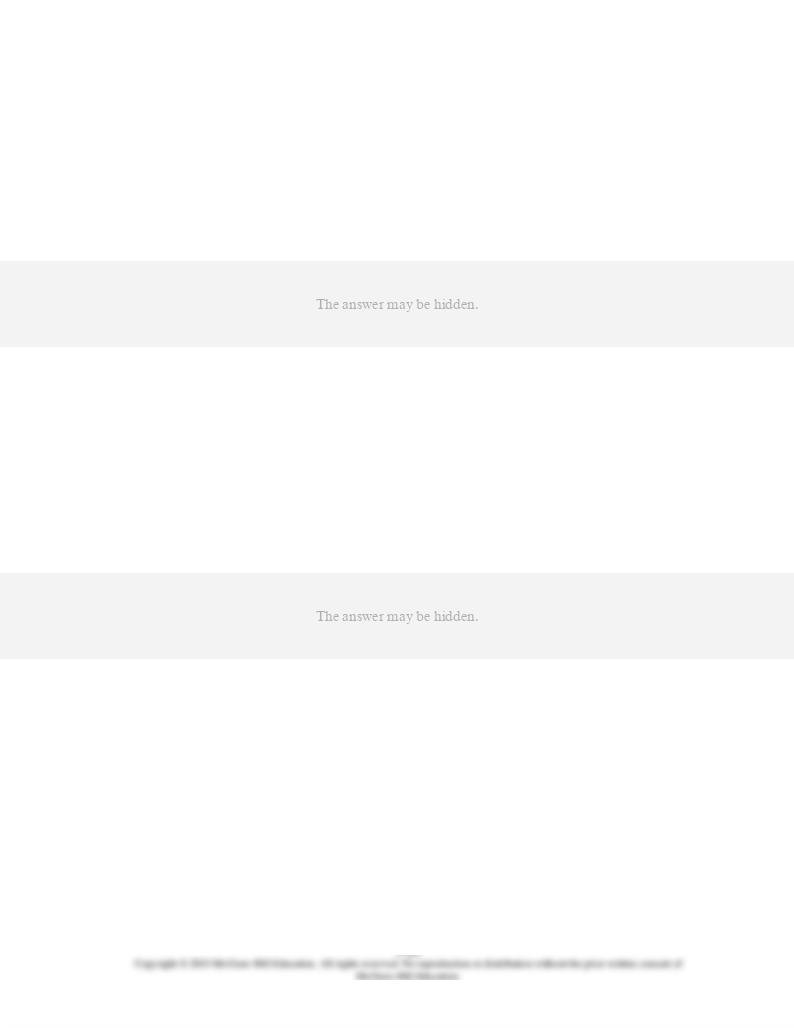
Blooms: Remember
Difficulty: 1 Easy
Learning Objective: 01-05 List the categories of scarce resources and delineate the nature of society's economizing
problem.
Topic: Society's economizing problem
89.
Which of the following is
not
a main function of the entrepreneur?
AACSB: Analytic
Accessibility: Keyboard Navigation
Blooms: Remember
Difficulty: 1 Easy
Learning Objective: 01-05 List the categories of scarce resources and delineate the nature of society's economizing
problem.
Topic: Society's economizing problem
90.
The process of producing and accumulating capital goods is called:
AACSB: Analytic
Accessibility: Keyboard Navigation
Blooms: Remember
Difficulty: 1 Easy
Learning Objective: 01-05 List the categories of scarce resources and delineate the nature of society's economizing
problem.
Topic: Society's economizing problem
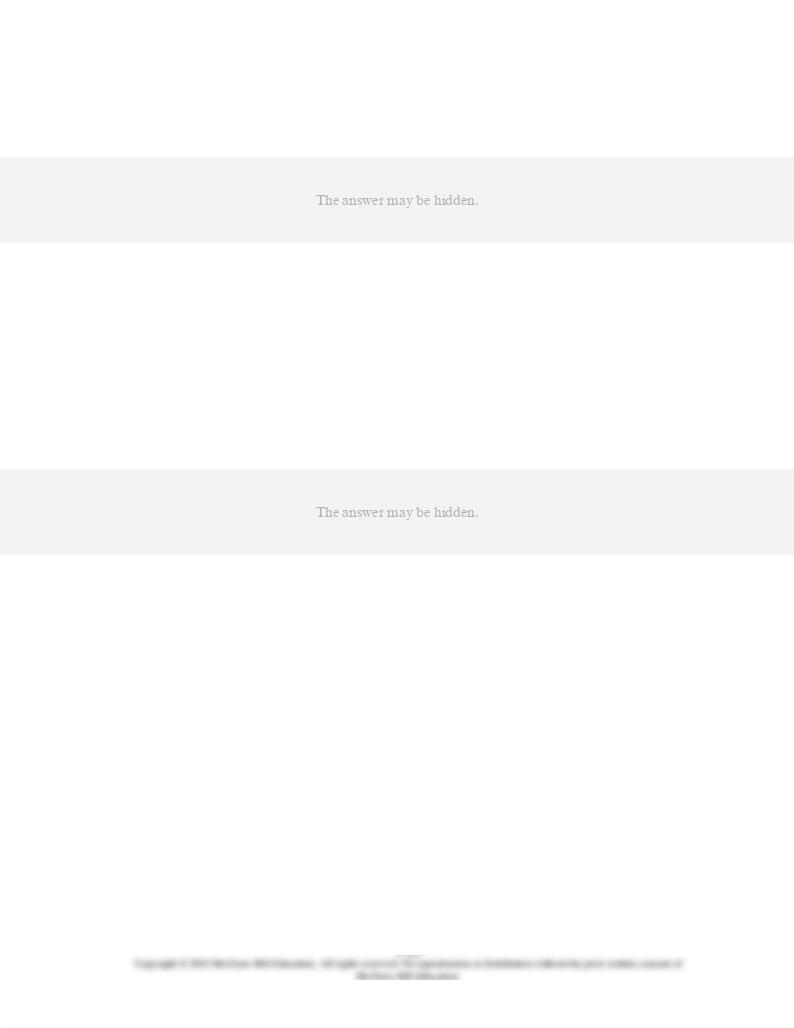
91.
Which of the following is
not
considered by economists to be an economic resource?
AACSB: Analytic
Accessibility: Keyboard Navigation
Blooms: Remember
Difficulty: 1 Easy
Learning Objective: 01-05 List the categories of scarce resources and delineate the nature of society's economizing
problem.
Topic: Society's economizing problem
92.
Which of the following would
not
be classified as an economic resource by economists?
AACSB: Analytic
Accessibility: Keyboard Navigation
Blooms: Remember
Difficulty: 1 Easy
Learning Objective: 01-05 List the categories of scarce resources and delineate the nature of society's economizing
problem.
Topic: Society's economizing problem

93.
The production possibilities curve illustrates the basic principle that:
AACSB: Analytic
Accessibility: Keyboard Navigation
Blooms: Understand
Difficulty: 2 Medium
Learning Objective: 01-06 Apply production possibilities analysis; increasing opportunity costs; and economic growth.
Topic: Production possibilities model
94.
Which of the following will
not
produce an outward shift of the production possibilities
curve?
AACSB: Analytic
Accessibility: Keyboard Navigation
Blooms: Apply
Difficulty: 2 Medium
Learning Objective: 01-06 Apply production possibilities analysis; increasing opportunity costs; and economic growth.
Topic: Production possibilities model

95.
Unemployment:
AACSB: Analytic
Accessibility: Keyboard Navigation
Blooms: Remember
Difficulty: 1 Easy
Learning Objective: 01-06 Apply production possibilities analysis; increasing opportunity costs; and economic growth.
Topic: Production possibilities model
96.
If the production possibilities curve is a straight line:
AACSB: Analytic
Accessibility: Keyboard Navigation
Blooms: Understand
Difficulty: 2 Medium
Learning Objective: 01-06 Apply production possibilities analysis; increasing opportunity costs; and economic growth.
Topic: Production possibilities model
97.
A production possibilities curve illustrates:
AACSB: Analytic
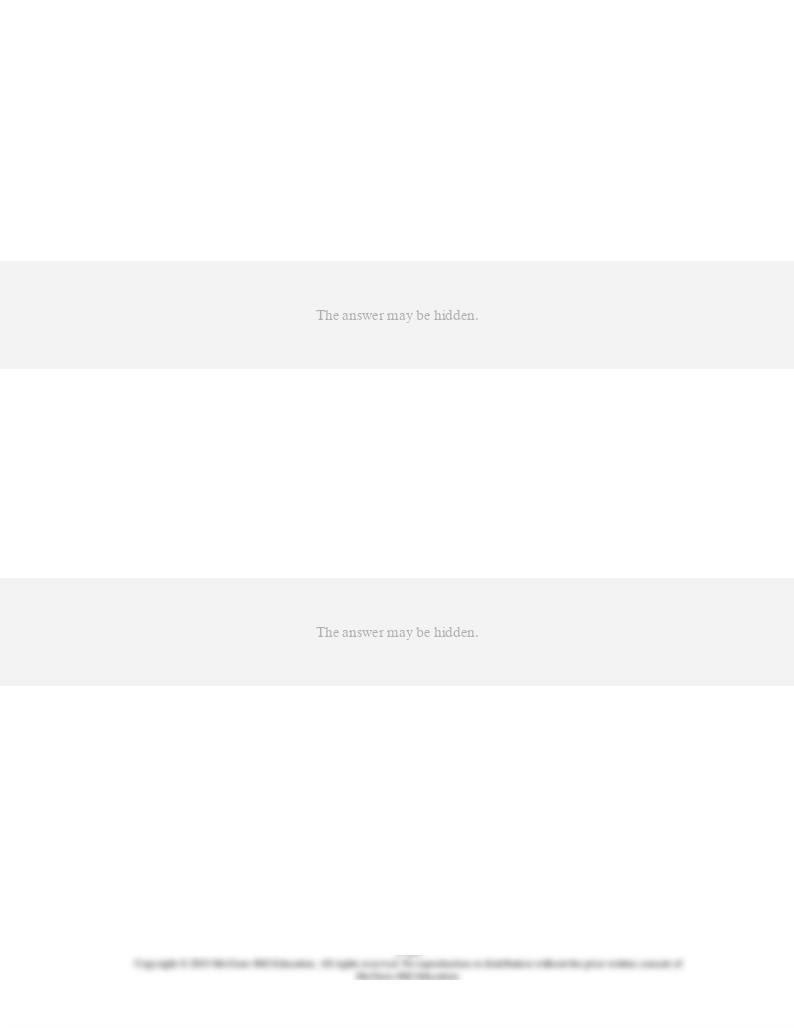
Accessibility: Keyboard Navigation
Blooms: Understand
Difficulty: 2 Medium
Learning Objective: 01-06 Apply production possibilities analysis; increasing opportunity costs; and economic growth.
Topic: Production possibilities model
98.
A production possibilities curve shows:
AACSB: Analytic
Accessibility: Keyboard Navigation
Blooms: Remember
Difficulty: 1 Easy
Learning Objective: 01-06 Apply production possibilities analysis; increasing opportunity costs; and economic growth.
Topic: Production possibilities model
99.
A nation's production possibilities curve is bowed out from the origin because:
AACSB: Analytic
Accessibility: Keyboard Navigation
Blooms: Understand
Difficulty: 2 Medium
Learning Objective: 01-06 Apply production possibilities analysis; increasing opportunity costs; and economic growth.
Topic: Production possibilities model
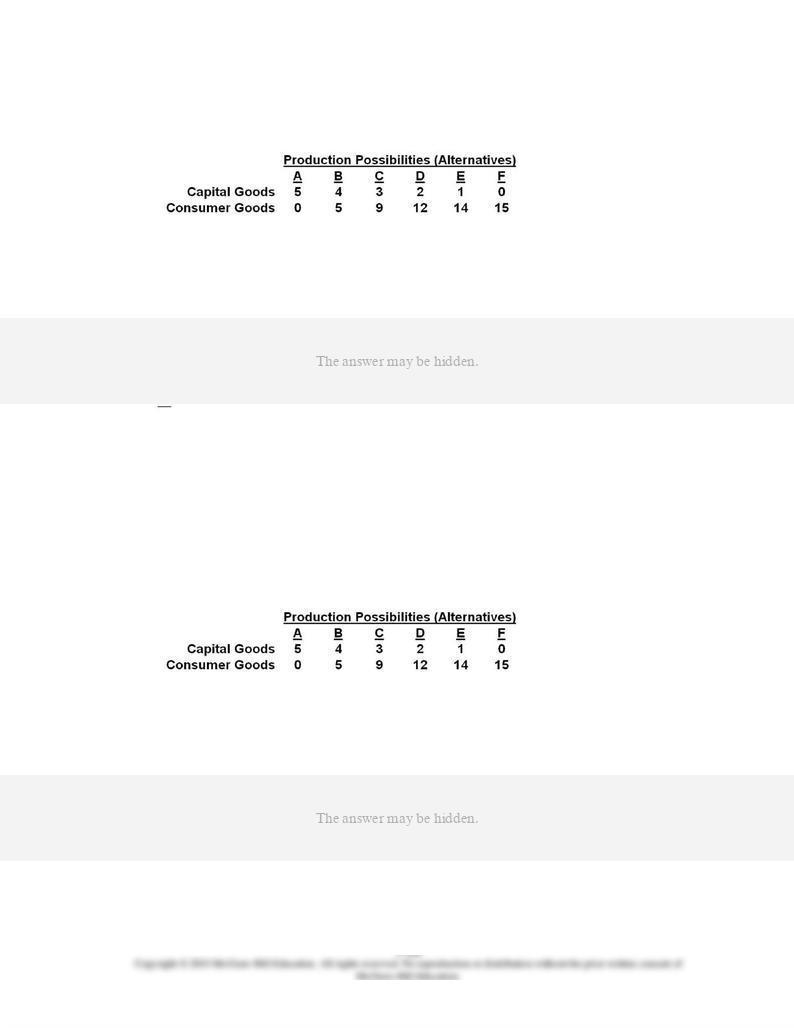
100.
Answer the question on the basis of the data given in the following production possibilities
table:
Refer to the table. If the economy is producing at production alternative C, the opportunity
cost of the tenth unit of consumer goods will be:
AACSB: Reflective Thinking
Blooms: Apply
Difficulty: 3 Hard
Learning Objective: 01-06 Apply production possibilities analysis; increasing opportunity costs; and economic growth.
Topic: Production possibilities model
Type: Table
101.
Answer the question on the basis of the data given in the following production possibilities
table:
Refer to the table. As compared to production alternative D, the choice of alternative C
would:
AACSB: Reflective Thinking
Blooms: Analyze

Difficulty: 3 Hard
Learning Objective: 01-06 Apply production possibilities analysis; increasing opportunity costs; and economic growth.
Topic: Production possibilities model
Type: Table
102.
Answer the question on the basis of the data given in the following production possibilities
table:
Refer to the table. A total output of 3 units of capital goods and 4 units of consumer
goods:
AACSB: Reflective Thinking
Blooms: Understand
Difficulty: 2 Medium
Learning Objective: 01-06 Apply production possibilities analysis; increasing opportunity costs; and economic growth.
Topic: Production possibilities model
Type: Table

103.
Answer the question on the basis of the data given in the following production possibilities
table:
Refer to the table. For this economy to produce a total output of 3 units of capital goods
and 13 units of consumer goods, it must:
AACSB: Reflective Thinking
Blooms: Understand
Difficulty: 2 Medium
Learning Objective: 01-06 Apply production possibilities analysis; increasing opportunity costs; and economic growth.
Topic: Production possibilities model
Type: Table

104.
Answer the question on the basis of the data given in the following production possibilities
table:
Refer to the table. For these data, the law of increasing opportunity costs is reflected in
the fact that:
AACSB: Reflective Thinking
Blooms: Understand
Difficulty: 2 Medium
Learning Objective: 01-06 Apply production possibilities analysis; increasing opportunity costs; and economic growth.
Topic: Production possibilities model
Type: Table
105.
When an economy is operating under conditions of full employment, the production of
more of commodity A will mean the production of less of commodity B because:
AACSB: Reflective Thinking
Accessibility: Keyboard Navigation
Blooms: Apply
Difficulty: 2 Medium
Learning Objective: 01-06 Apply production possibilities analysis; increasing opportunity costs; and economic growth.
Topic: Production possibilities model

106.
Assume that a change in government policy results in greater production of both consumer
goods and investment goods. We can conclude that:
AACSB: Reflective Thinking
Accessibility: Keyboard Navigation
Blooms: Analyze
Difficulty: 3 Hard
Learning Objective: 01-06 Apply production possibilities analysis; increasing opportunity costs; and economic growth.
Topic: Production possibilities model
107.
The production possibilities curve:
AACSB: Analytic
Accessibility: Keyboard Navigation
Blooms: Remember
Difficulty: 1 Easy
Learning Objective: 01-06 Apply production possibilities analysis; increasing opportunity costs; and economic growth.
Topic: Production possibilities model
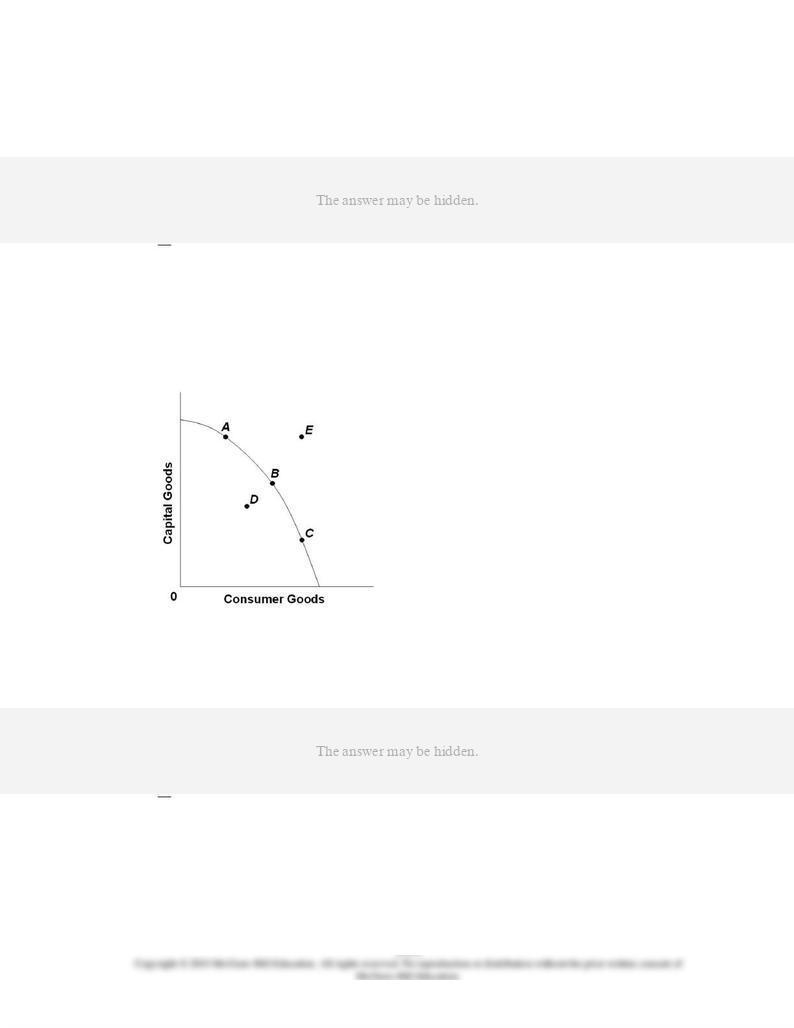
108.
Any point inside the production possibilities curve indicates:
AACSB: Analytic
Accessibility: Keyboard Navigation
Blooms: Understand
Difficulty: 2 Medium
Learning Objective: 01-06 Apply production possibilities analysis; increasing opportunity costs; and economic growth.
Topic: Production possibilities model
109.
Refer to the diagram. Other things equal, this economy will achieve the most rapid rate of
growth if:
AACSB: Reflective Thinking
Blooms: Analyze
Difficulty: 3 Hard
Learning Objective: 01-06 Apply production possibilities analysis; increasing opportunity costs; and economic growth.
Topic: Production possibilities model
Type: Graph

110.
Refer to the diagram. This economy will experience unemployment if it produces at point:
AACSB: Reflective Thinking
Blooms: Understand
Difficulty: 2 Medium
Learning Objective: 01-06 Apply production possibilities analysis; increasing opportunity costs; and economic growth.
Topic: Production possibilities model
Type: Graph
111.
Which of the following is assumed in constructing a typical production possibilities curve?
AACSB: Analytic
Accessibility: Keyboard Navigation
Blooms: Remember
Difficulty: 1 Easy
Learning Objective: 01-06 Apply production possibilities analysis; increasing opportunity costs; and economic growth.
Topic: Production possibilities model
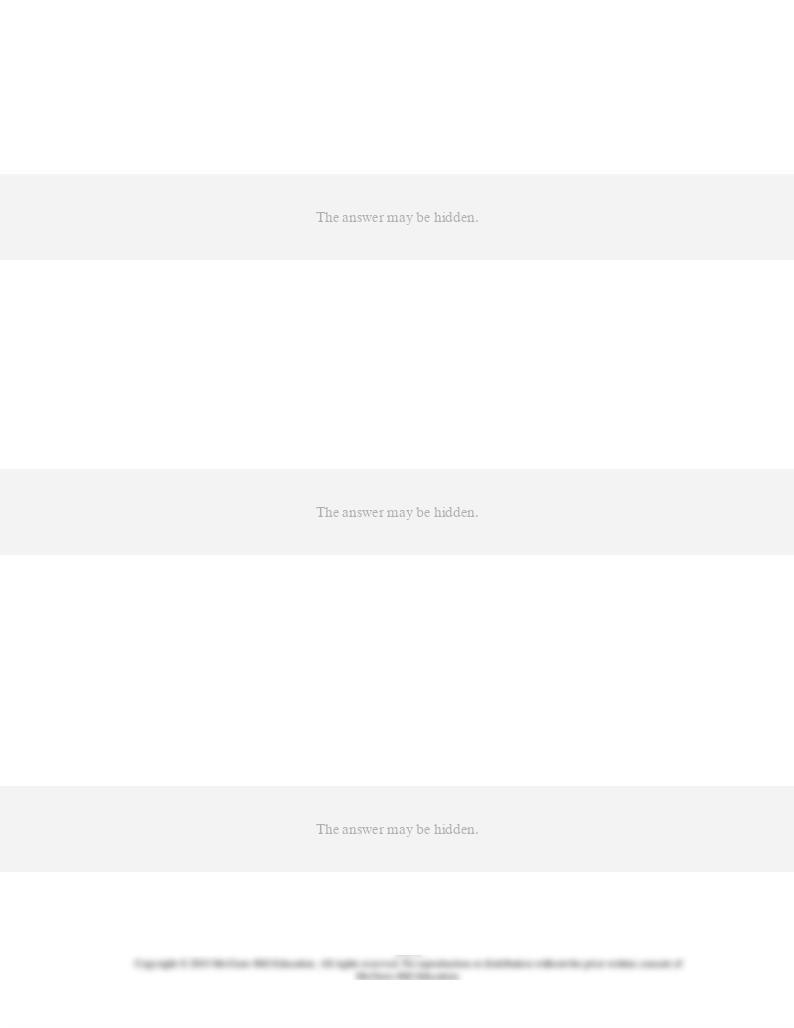
112.
The typical production possibilities curve is:
AACSB: Analytic
Accessibility: Keyboard Navigation
Blooms: Remember
Difficulty: 1 Easy
Learning Objective: 01-06 Apply production possibilities analysis; increasing opportunity costs; and economic growth.
Topic: Production possibilities model
113.
The slope of the typical production possibilities curve:
AACSB: Analytic
Accessibility: Keyboard Navigation
Blooms: Understand
Difficulty: 2 Medium
Learning Objective: 01-06 Apply production possibilities analysis; increasing opportunity costs; and economic growth.
Topic: Production possibilities model
114.
Assume an economy is incurring unemployment. The effect of resolving this problem will
be to:
AACSB: Reflective Thinking
Accessibility: Keyboard Navigation
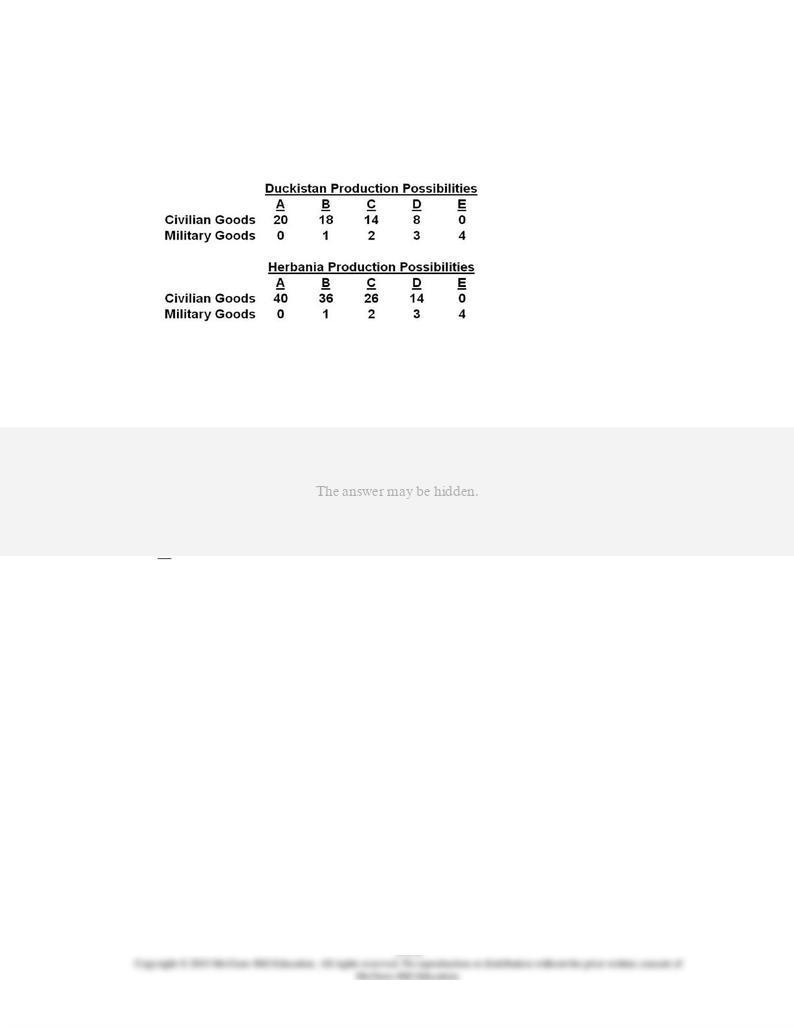
Blooms: Apply
Difficulty: 2 Medium
Learning Objective: 01-06 Apply production possibilities analysis; increasing opportunity costs; and economic growth.
Topic: Production possibilities model
115.
Refer to the tables. Suppose that the amount and quality of resources are the same in
both countries. We can conclude that:
AACSB: Reflective Thinking
Blooms: Understand
Difficulty: 2 Medium
Learning Objective: 01-06 Apply production possibilities analysis; increasing opportunity costs; and economic growth.
Topic: Production possibilities model
Type: Table
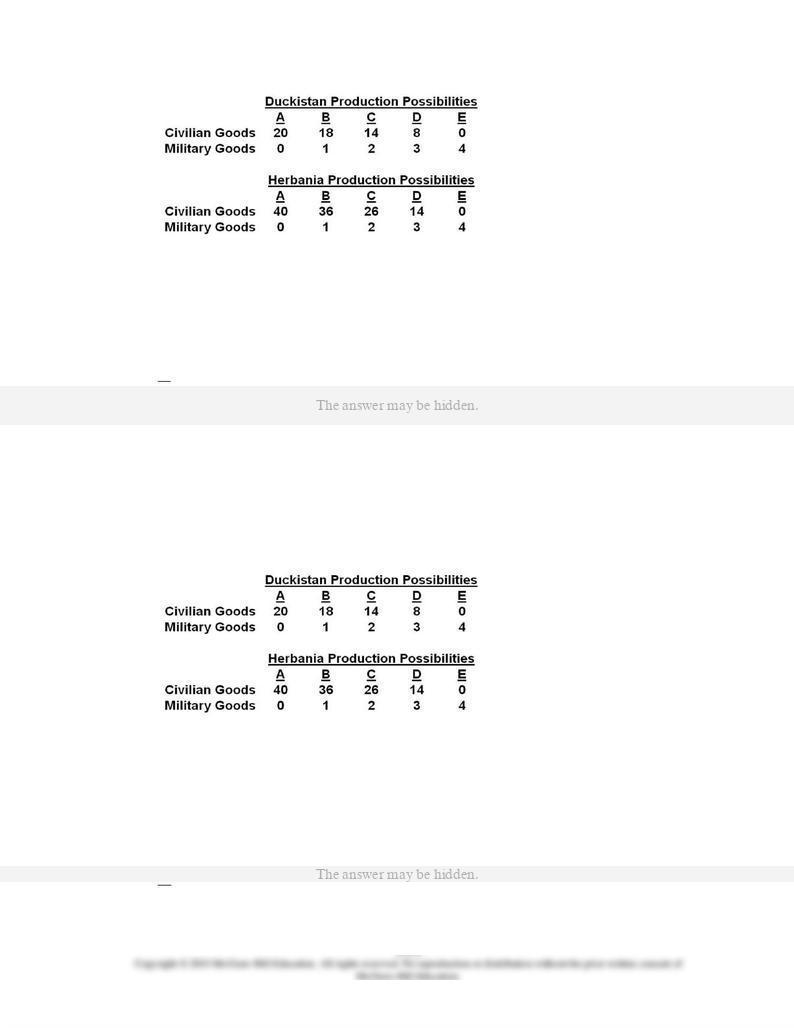
116.
Refer to the tables. Suppose that technology and the quality of resources are the same in
both countries. We can conclude that:
A.
Duckistan has more resources than Herbania.
B.
Herbania has more resources than Duckistan.
AACSB: Reflective Thinking
Blooms: Understand
Difficulty: 2 Medium
Learning Objective: 01-06 Apply production possibilities analysis; increasing opportunity costs; and economic growth.
Topic: Production possibilities model
Type: Table
117.
Refer to the tables. Opportunity costs of producing military goods are:
A.
increasing in Duckistan but constant in Herbania.
B.
constant in both Duckistan and Herbania.
C.
larger in Duckistan than in Herbania.
AACSB: Reflective Thinking
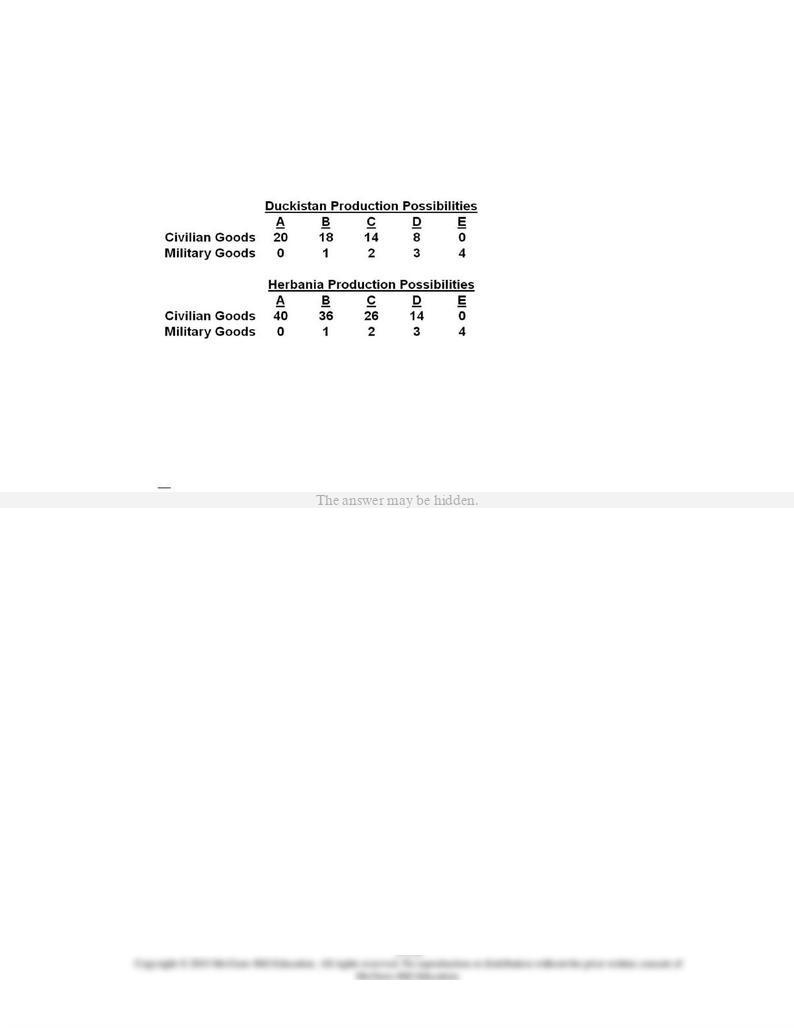
Blooms: Understand
Difficulty: 2 Medium
Learning Objective: 01-06 Apply production possibilities analysis; increasing opportunity costs; and economic growth.
Topic: Production possibilities model
Type: Table
118.
Refer to the tables. Opportunity costs are:
A.
constant in both Duckistan and Herbania.
B.
larger in Duckistan than in Herbania.
C.
increasing in both Duckistan and Herbania.
AACSB: Reflective Thinking
Blooms: Understand
Difficulty: 2 Medium
Learning Objective: 01-06 Apply production possibilities analysis; increasing opportunity costs; and economic growth.
Topic: Production possibilities model
Type: Table
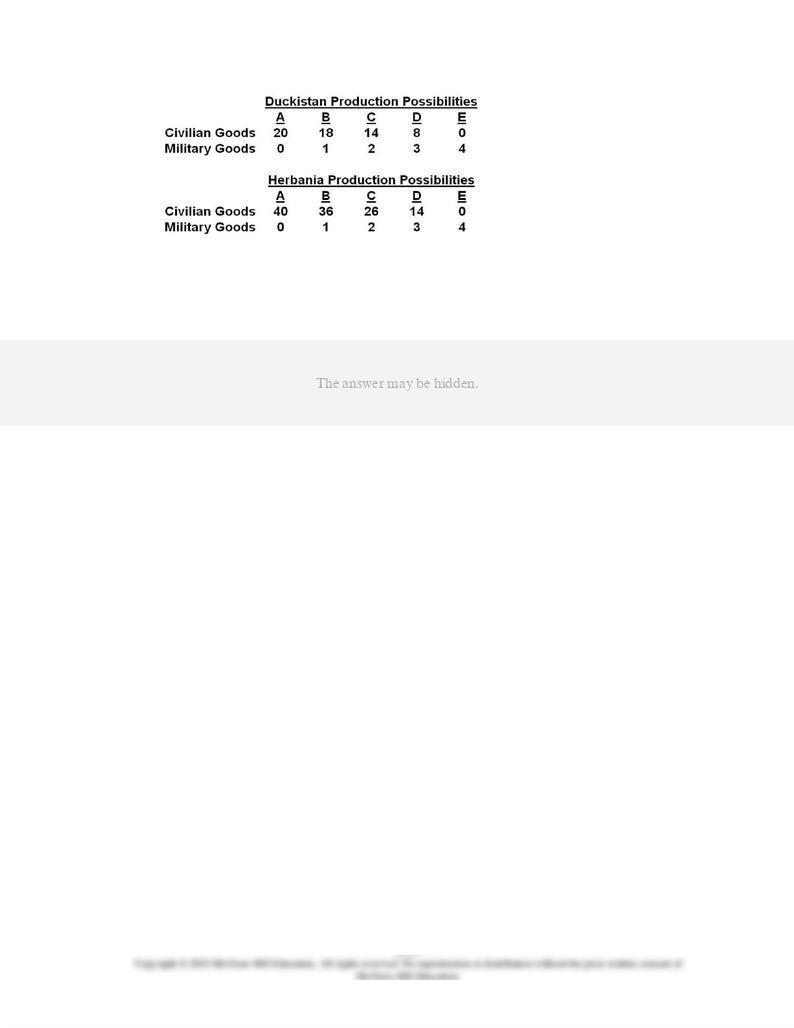
119.
Refer to the tables. Suppose that Duckistan and Herbania are each producing 14 units of
civilian goods and 2 units of military goods. Then:
AACSB: Reflective Thinking
Blooms: Understand
Difficulty: 2 Medium
Learning Objective: 01-06 Apply production possibilities analysis; increasing opportunity costs; and economic growth.
Topic: Production possibilities model
Type: Table
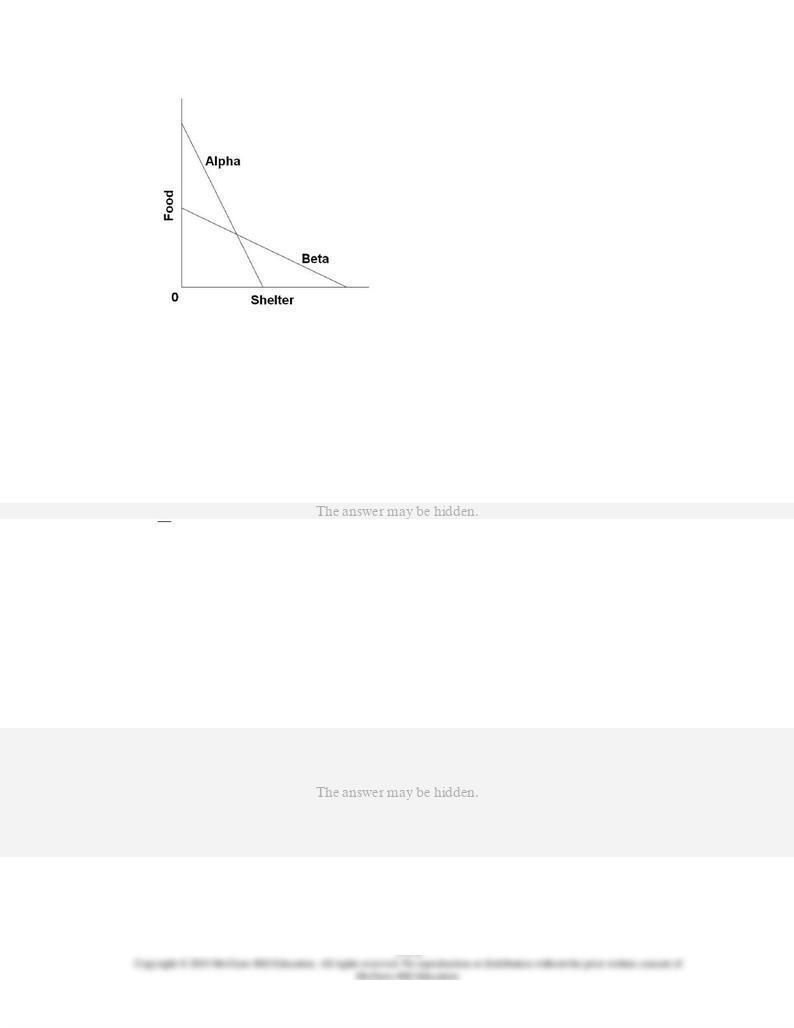
120.
In the figure are two linear production possibilities curves for countries Alpha and Beta.
We can conclude that:
A.
different value systems make it impossible to compare opportunity costs in the two
countries.
B.
the opportunity cost of shelter is greater in Beta than it is in Alpha.
C.
the opportunity cost of food is greater in Alpha than it is in Beta.
AACSB: Reflective Thinking
Blooms: Analyze
Difficulty: 3 Hard
Learning Objective: 01-06 Apply production possibilities analysis; increasing opportunity costs; and economic growth.
Topic: Production possibilities model
Type: Graph
121.
Which of the following is
not
correct? A typical production possibilities curve:
AACSB: Analytic
Accessibility: Keyboard Navigation
Blooms: Remember
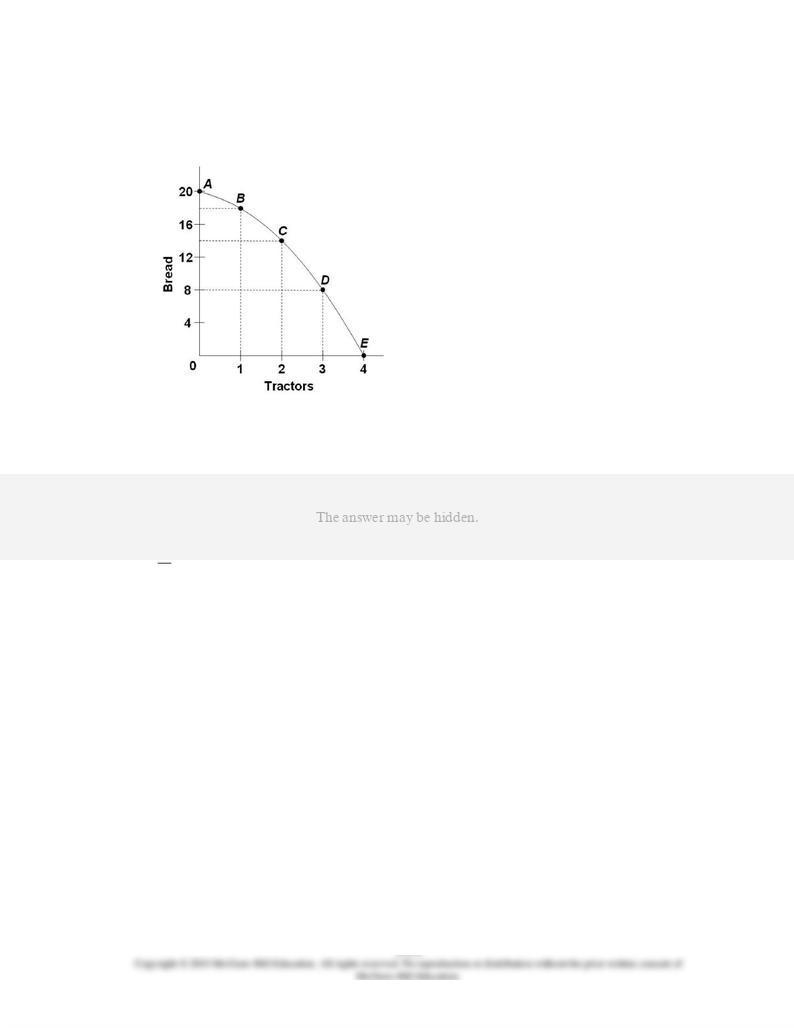
Difficulty: 1 Easy
Learning Objective: 01-06 Apply production possibilities analysis; increasing opportunity costs; and economic growth.
Topic: Production possibilities model
122.
Refer to the diagram. This production possibilities curve is constructed so that:
AACSB: Reflective Thinking
Blooms: Understand
Difficulty: 2 Medium
Learning Objective: 01-06 Apply production possibilities analysis; increasing opportunity costs; and economic growth.
Topic: Production possibilities model
Type: Graph

123.
Refer to the diagram. Which of the following is a normative statement?
AACSB: Analytic
Blooms: Understand
Difficulty: 2 Medium
Learning Objective: 01-03 Distinguish microeconomics from macroeconomics and positive economics from normative
economics.
Learning Objective: 01-06 Apply production possibilities analysis; increasing opportunity costs; and economic growth.
Topic: Positive and normative economics
Topic: Production possibilities model
Type: Graph

124.
Refer to the diagram. Which of the following is a positive statement?
AACSB: Analytic
Blooms: Understand
Difficulty: 2 Medium
Learning Objective: 01-03 Distinguish microeconomics from macroeconomics and positive economics from normative
economics.
Learning Objective: 01-06 Apply production possibilities analysis; increasing opportunity costs; and economic growth.
Topic: Positive and normative economics
Topic: Production possibilities model
Type: Graph
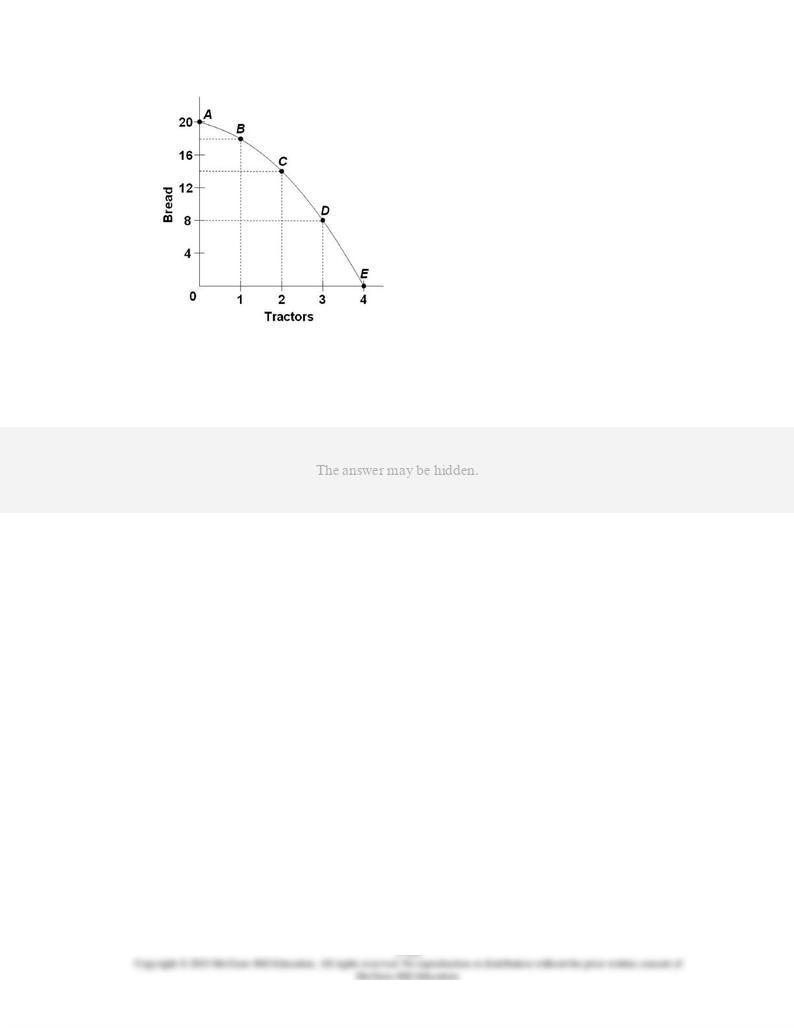
125.
Refer to the diagram. Starting at point
A
, the opportunity cost of producing each
successive unit of tractors is:
AACSB: Reflective Thinking
Blooms: Apply
Difficulty: 2 Medium
Learning Objective: 01-06 Apply production possibilities analysis; increasing opportunity costs; and economic growth.
Topic: Production possibilities model
Type: Graph

126.
Refer to the diagram. Starting at point
E
, the production of successive units of bread will
cost:
AACSB: Reflective Thinking
Blooms: Apply
Difficulty: 2 Medium
Learning Objective: 01-06 Apply production possibilities analysis; increasing opportunity costs; and economic growth.
Topic: Production possibilities model
Type: Graph
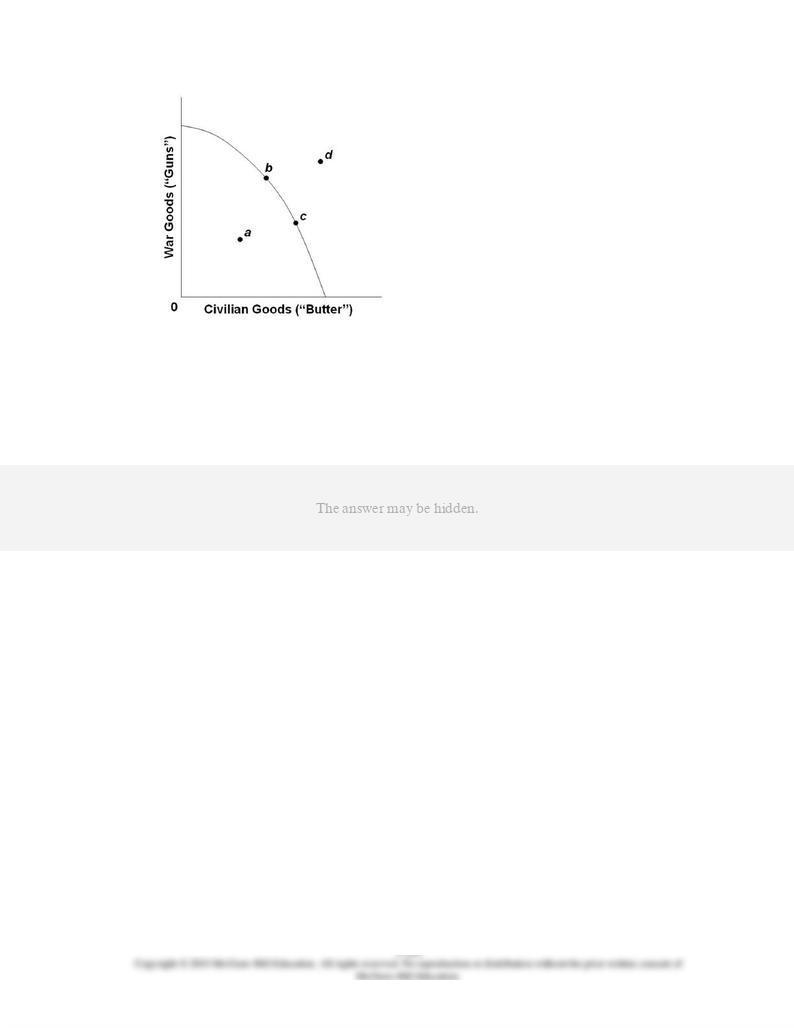
127.
Refer to the production possibilities curve. At the onset of the Second World War, the
United States had large amounts of idle human and property resources. Its economic
adjustment from peacetime to wartime can best be described by the movement from
point:
AACSB: Reflective Thinking
Blooms: Analyze
Difficulty: 3 Hard
Learning Objective: 01-06 Apply production possibilities analysis; increasing opportunity costs; and economic growth.
Topic: Production possibilities model
Type: Graph
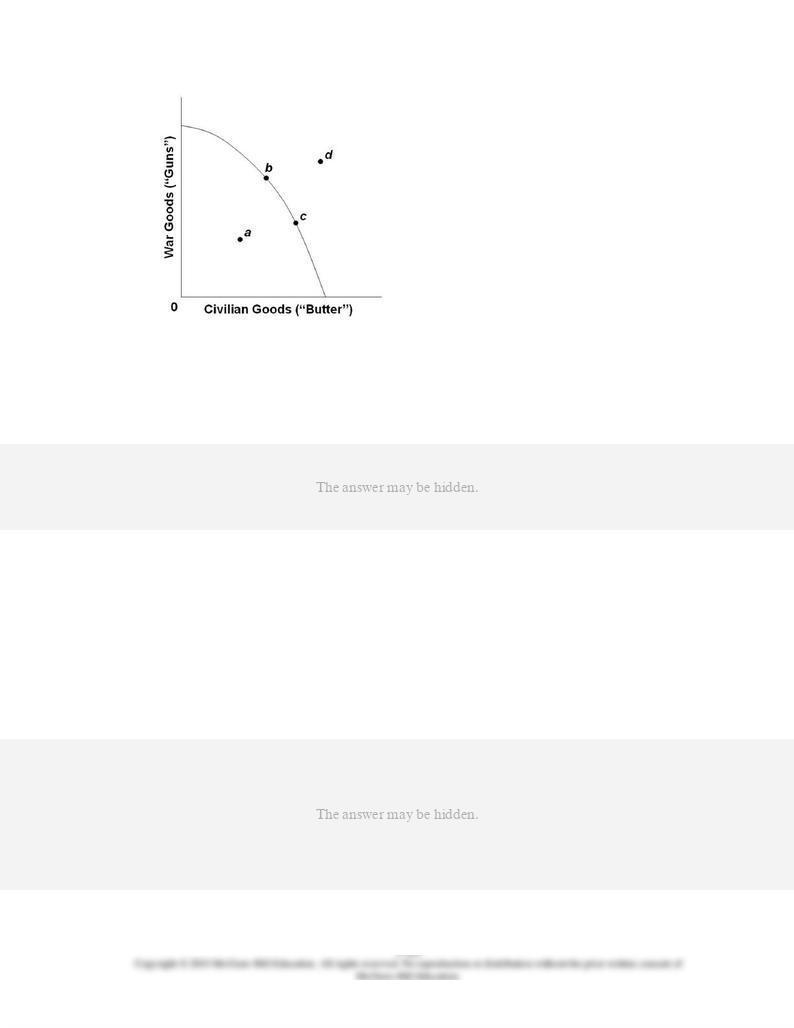
128.
Refer to the production possibilities curve. At the onset of the Second World War, the
Soviet Union was already at full employment. Its economic adjustment from peacetime to
wartime can best be described by the movement from point:
AACSB: Reflective Thinking
Blooms: Analyze
Difficulty: 3 Hard
Learning Objective: 01-06 Apply production possibilities analysis; increasing opportunity costs; and economic growth.
Topic: Production possibilities model
Type: Graph
129.
The production possibilities curve shows:
AACSB: Analytic
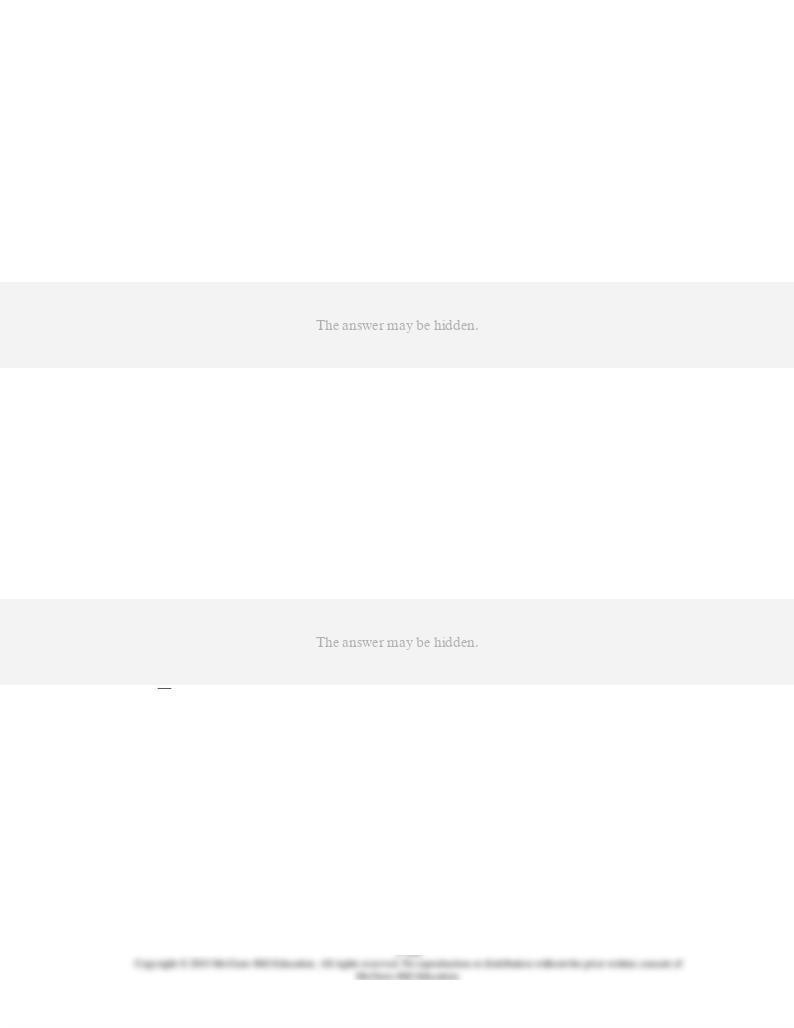
Accessibility: Keyboard Navigation
Blooms: Remember
Difficulty: 1 Easy
Learning Objective: 01-06 Apply production possibilities analysis; increasing opportunity costs; and economic growth.
Topic: Production possibilities model
130.
The negative slope of the production possibilities curve is a graphical way of indicating
that:
AACSB: Analytic
Accessibility: Keyboard Navigation
Blooms: Understand
Difficulty: 2 Medium
Learning Objective: 01-06 Apply production possibilities analysis; increasing opportunity costs; and economic growth.
Topic: Production possibilities model
131.
If an economy is operating
on
its production possibilities curve for consumer goods and
capital goods, this means that:
AACSB: Analytic
Accessibility: Keyboard Navigation
Blooms: Understand
Difficulty: 2 Medium
Learning Objective: 01-06 Apply production possibilities analysis; increasing opportunity costs; and economic growth.
Topic: Production possibilities model
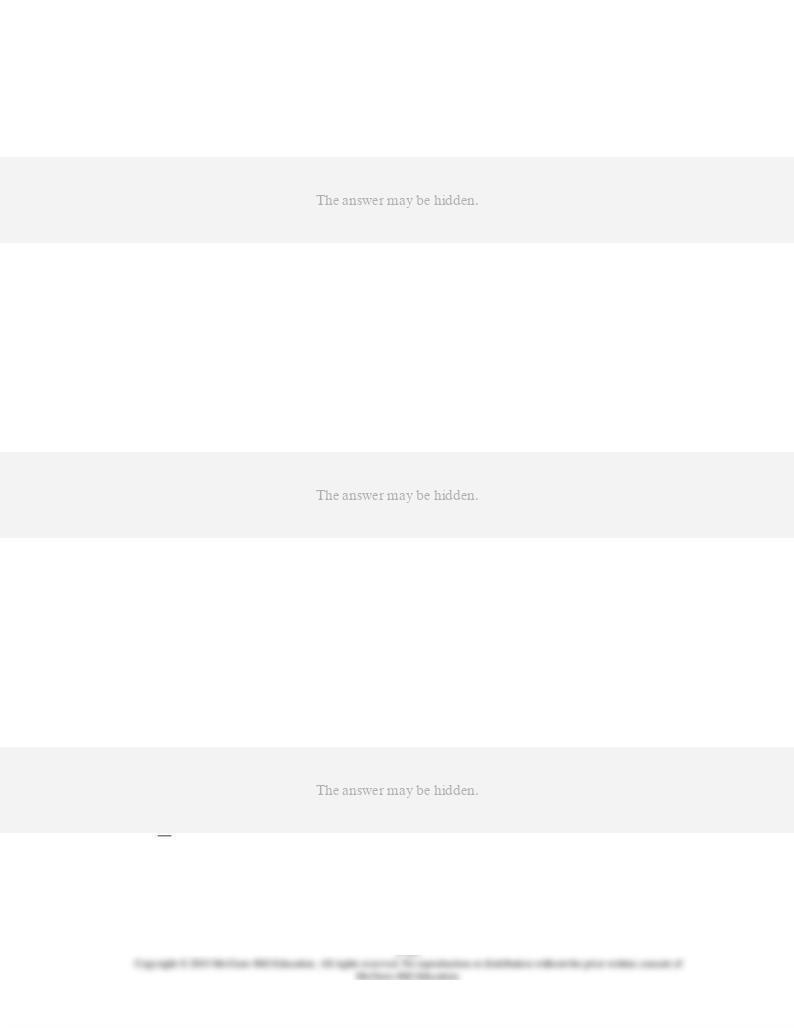
132.
The construction of a production possibilities curve assumes:
AACSB: Analytic
Accessibility: Keyboard Navigation
Blooms: Remember
Difficulty: 1 Easy
Learning Objective: 01-06 Apply production possibilities analysis; increasing opportunity costs; and economic growth.
Topic: Production possibilities model
133.
A typical concave (bowed out from the origin) production possibilities curve implies:
AACSB: Analytic
Accessibility: Keyboard Navigation
Blooms: Understand
Difficulty: 2 Medium
Learning Objective: 01-06 Apply production possibilities analysis; increasing opportunity costs; and economic growth.
Topic: Production possibilities model
134.
The production possibilities curve tells us:
AACSB: Analytic
Accessibility: Keyboard Navigation
Blooms: Remember
Difficulty: 1 Easy
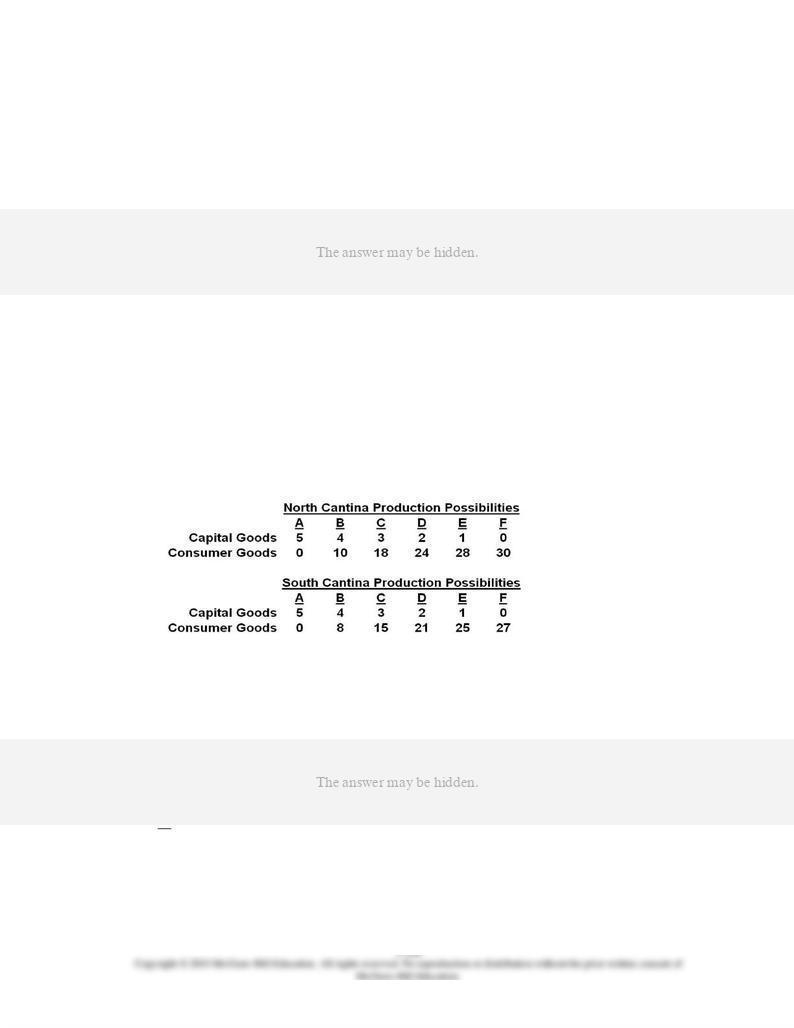
Learning Objective: 01-06 Apply production possibilities analysis; increasing opportunity costs; and economic growth.
Topic: Production possibilities model
135.
The production possibilities curve has:
AACSB: Analytic
Accessibility: Keyboard Navigation
Blooms: Remember
Difficulty: 1 Easy
Learning Objective: 01-06 Apply production possibilities analysis; increasing opportunity costs; and economic growth.
Topic: Production possibilities model
136.
Answer the question on the basis of the following production possibilities tables for two
countries, North Cantina and South Cantina:
Refer to the tables. If South Cantina is producing at production alternative D, the
opportunity cost of the third unit of capital goods will be:
AACSB: Reflective Thinking
Blooms: Apply
Difficulty: 2 Medium
Learning Objective: 01-06 Apply production possibilities analysis; increasing opportunity costs; and economic growth.

Topic: Production possibilities model
Type: Table
137.
Answer the question on the basis of the following production possibilities tables for two
countries, North Cantina and South Cantina:
Refer to the tables. If North Cantina is producing at production alternative B, the
opportunity cost of the eleventh unit of consumer goods will be:
AACSB: Reflective Thinking
Blooms: Apply
Difficulty: 2 Medium
Learning Objective: 01-06 Apply production possibilities analysis; increasing opportunity costs; and economic growth.
Topic: Production possibilities model
Type: Table

138.
Answer the question on the basis of the following production possibilities tables for two
countries, North Cantina and South Cantina:
Refer to the tables. Suppose that North Cantina is producing 2 units of capital goods and
17 units of consumer goods while South Cantina is producing 2 units of capital goods and
21 units of consumer goods. We can conclude that:
AACSB: Reflective Thinking
Blooms: Understand
Difficulty: 2 Medium
Learning Objective: 01-06 Apply production possibilities analysis; increasing opportunity costs; and economic growth.
Topic: Production possibilities model
Type: Table
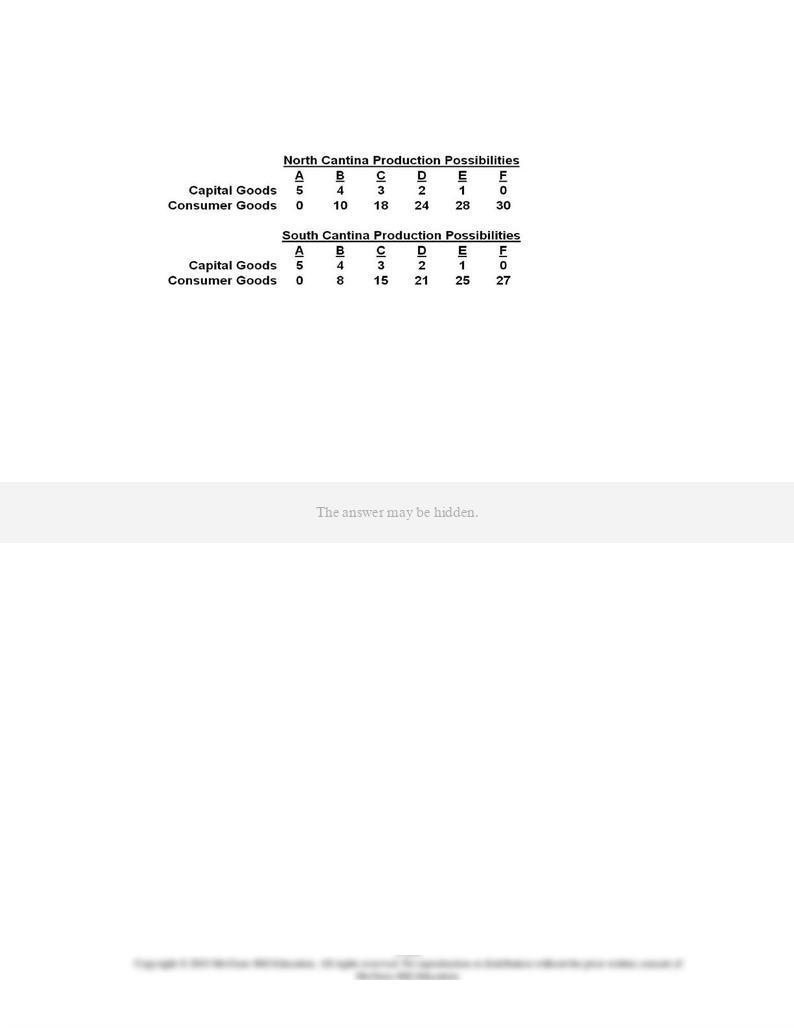
139.
Answer the question on the basis of the following production possibilities tables for two
countries, North Cantina and South Cantina:
Refer to the tables. Suppose that resources in North Cantina and South Cantina are
identical in quantity and quality. We can conclude that:
A.
South Cantina has better technology than North Cantina in producing both capital and
consumer goods.
B.
North Cantina has better technology than South Cantina in producing both capital and
consumer goods.
AACSB: Reflective Thinking
Blooms: Analyze
Difficulty: 3 Hard
Learning Objective: 01-06 Apply production possibilities analysis; increasing opportunity costs; and economic growth.
Topic: Production possibilities model
Type: Table

140.
Answer the question on the basis of the following production possibilities tables for two
countries, North Cantina and South Cantina:
Refer to the tables. The opportunity cost of the fifth unit of capital goods:
A.
is higher in North Cantina than in South Cantina.
B.
is the same in North Cantina and South Cantina.
AACSB: Reflective Thinking
Blooms: Analyze
Difficulty: 3 Hard
Learning Objective: 01-06 Apply production possibilities analysis; increasing opportunity costs; and economic growth.
Topic: Production possibilities model
Type: Table
141.
If an economy is operating inside its production possibilities curve for consumer goods and
capital goods, it:
AACSB: Reflective Thinking
Accessibility: Keyboard Navigation
Blooms: Understand
Difficulty: 2 Medium
Learning Objective: 01-06 Apply production possibilities analysis; increasing opportunity costs; and economic growth.
Topic: Production possibilities model

142.
Refer to the diagram. Points
A
,
B
,
C
,
D
, and
E
show:
AACSB: Analytic
Blooms: Understand
Difficulty: 2 Medium
Learning Objective: 01-06 Apply production possibilities analysis; increasing opportunity costs; and economic growth.
Topic: Production possibilities model
Type: Graph

143.
Refer to the diagram. If society is currently producing 9 units of bicycles and 4 units of
computers and it now decides to increase computer output to 6, the cost:
AACSB: Reflective Thinking
Blooms: Apply
Difficulty: 2 Medium
Learning Objective: 01-06 Apply production possibilities analysis; increasing opportunity costs; and economic growth.
Topic: Production possibilities model
Type: Graph
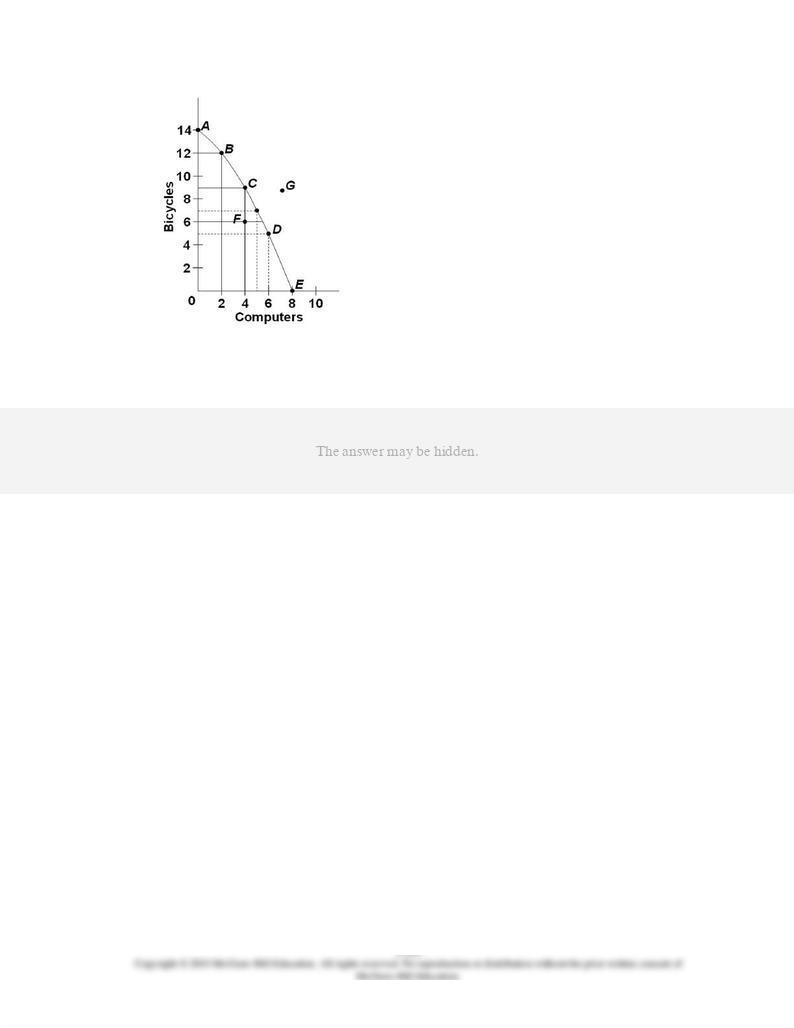
144.
Refer to the diagram. The combination of computers and bicycles shown by point
G
is:
AACSB: Analytic
Blooms: Understand
Difficulty: 2 Medium
Learning Objective: 01-06 Apply production possibilities analysis; increasing opportunity costs; and economic growth.
Topic: Production possibilities model
Type: Graph

145.
Refer to the diagram. If society is currently producing the combination of bicycles and
computers shown by point
D
, the production of 2 more units of bicycles:
AACSB: Reflective Thinking
Blooms: Apply
Difficulty: 2 Medium
Learning Objective: 01-06 Apply production possibilities analysis; increasing opportunity costs; and economic growth.
Topic: Production possibilities model
Type: Graph
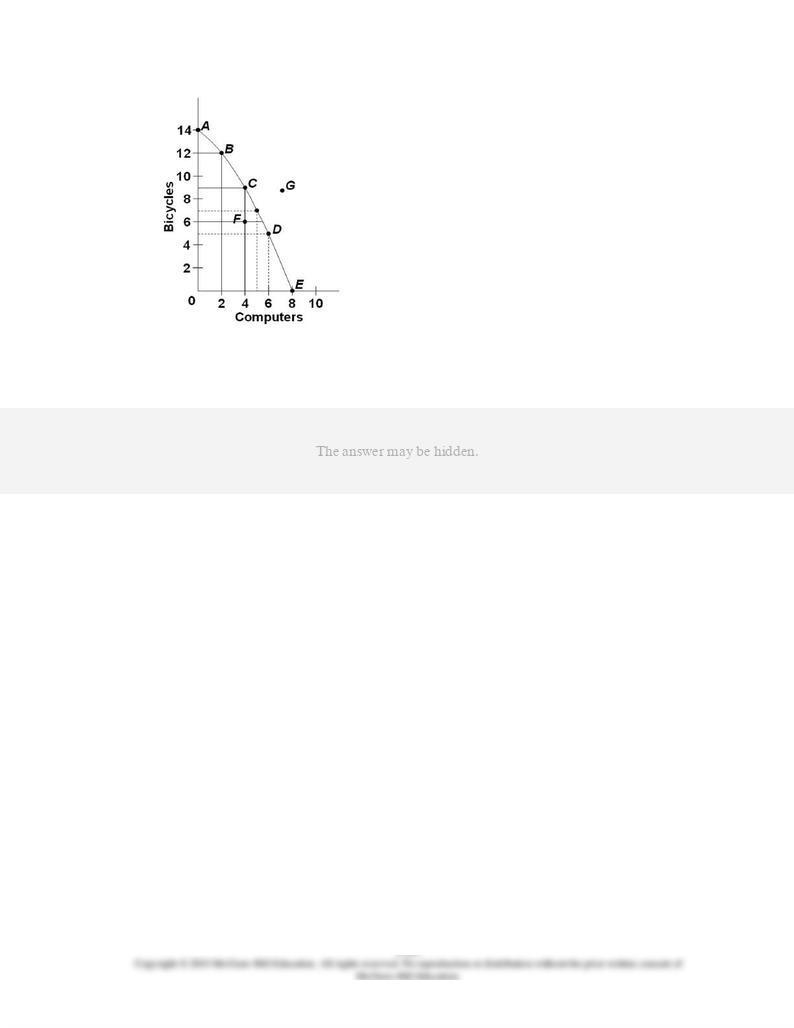
146.
Refer to the diagram. The combination of computers and bicycles shown by point
F
:
AACSB: Analytic
Blooms: Understand
Difficulty: 2 Medium
Learning Objective: 01-06 Apply production possibilities analysis; increasing opportunity costs; and economic growth.
Topic: Production possibilities model
Type: Graph
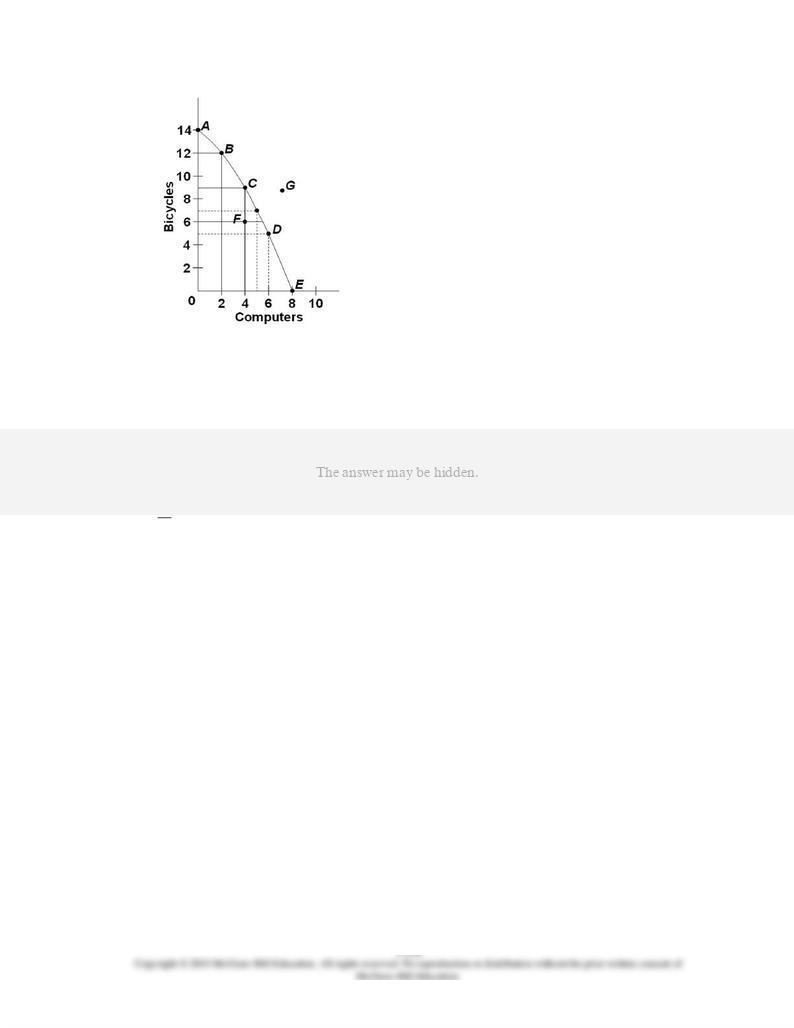
147.
Refer to the diagram. The movement down the production possibilities curve from point
A
to point
E
suggests that the production of:
AACSB: Reflective Thinking
Blooms: Understand
Difficulty: 2 Medium
Learning Objective: 01-06 Apply production possibilities analysis; increasing opportunity costs; and economic growth.
Topic: Production possibilities model
Type: Graph

148.
Refer to the diagram. As it relates to production possibilities analysis, the law of increasing
opportunity cost is reflected in curve:
AACSB: Analytic
Blooms: Understand
Difficulty: 2 Medium
Learning Objective: 01-06 Apply production possibilities analysis; increasing opportunity costs; and economic growth.
Topic: Production possibilities model
Type: Graph
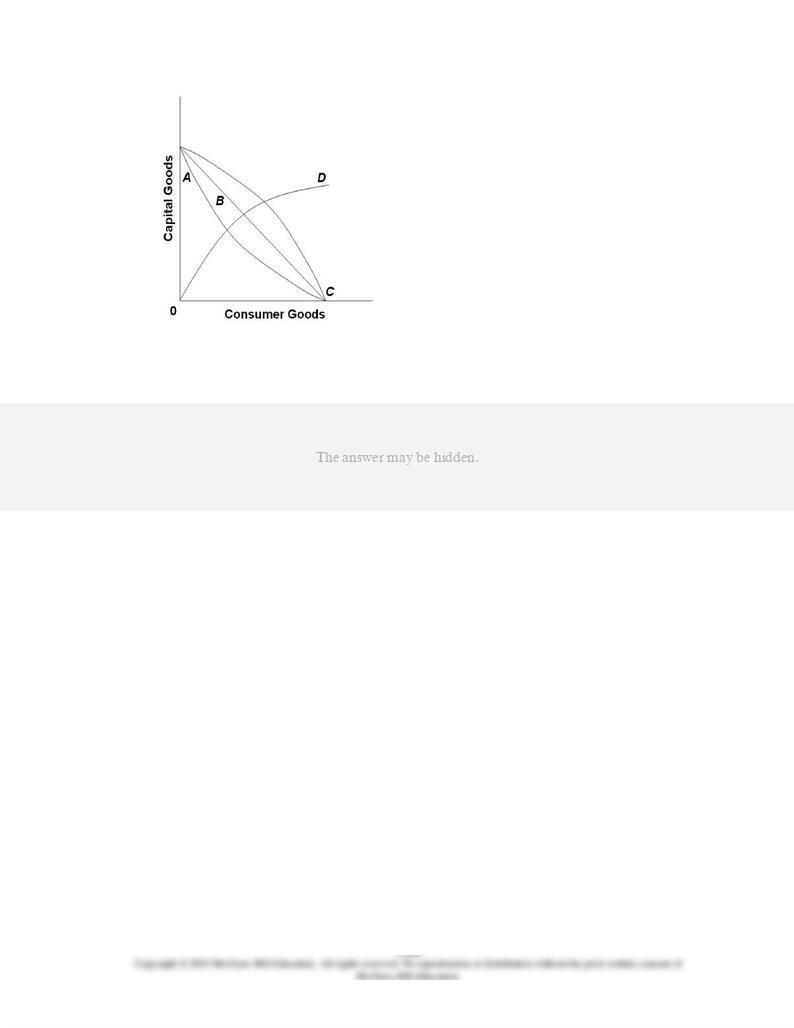
149.
Refer to the diagram. Curve
B
is a:
AACSB: Analytic
Blooms: Understand
Difficulty: 2 Medium
Learning Objective: 01-06 Apply production possibilities analysis; increasing opportunity costs; and economic growth.
Topic: Production possibilities model
Type: Graph
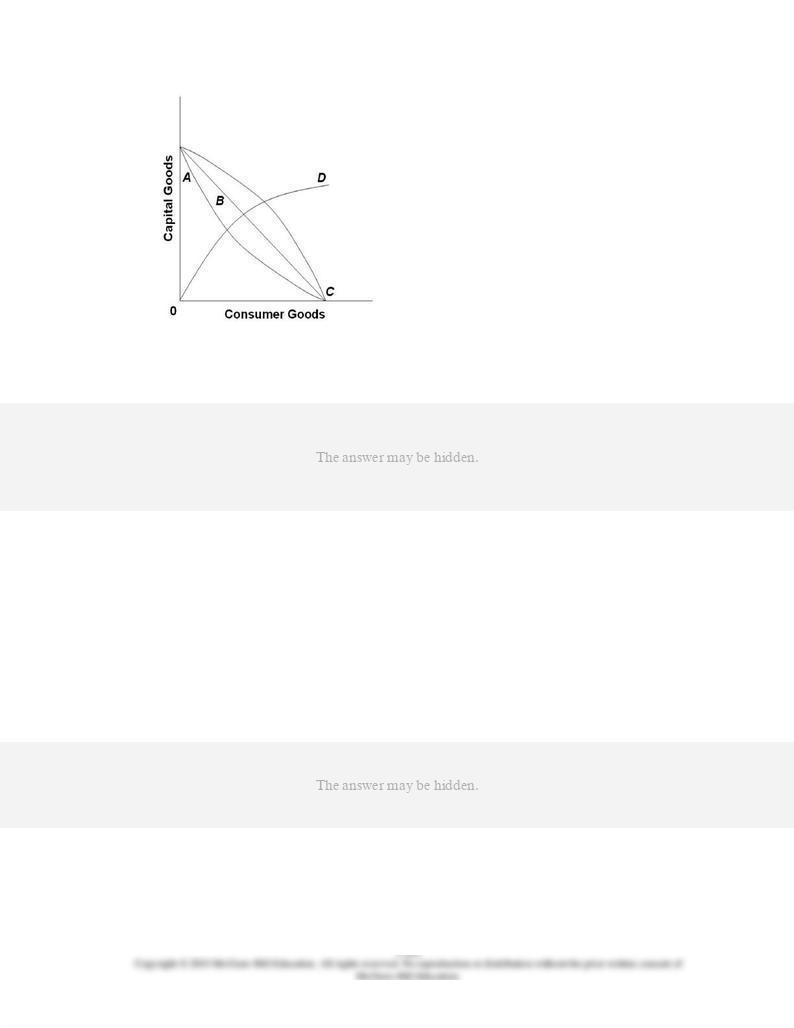
150.
Refer to the diagram. All other things equal, curve
C
:
AACSB: Reflective Thinking
Blooms: Understand
Difficulty: 2 Medium
Learning Objective: 01-06 Apply production possibilities analysis; increasing opportunity costs; and economic growth.
Topic: Production possibilities model
Type: Graph
151.
The fact that the slope of the production possibilities curve becomes steeper as we move
down along the curve indicates that:
AACSB: Analytic
Accessibility: Keyboard Navigation
Blooms: Understand
Difficulty: 2 Medium
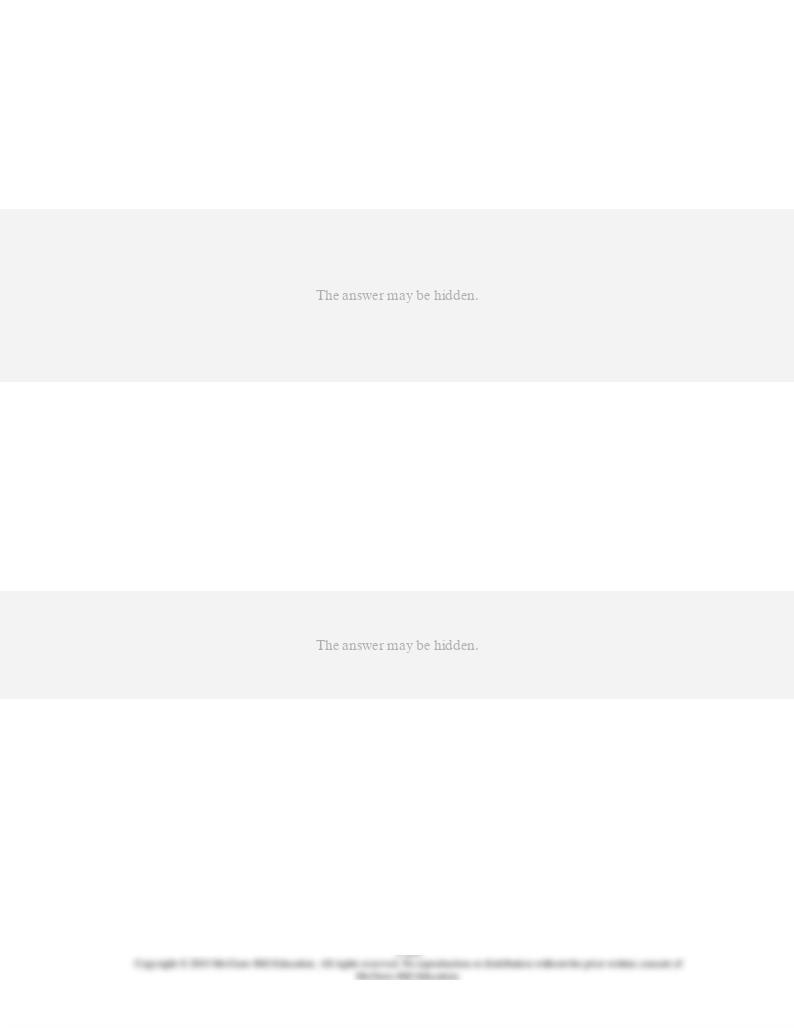
Learning Objective: 01-06 Apply production possibilities analysis; increasing opportunity costs; and economic growth.
Topic: Production possibilities model
152.
The law of increasing opportunity costs states that:
AACSB: Analytic
Accessibility: Keyboard Navigation
Blooms: Remember
Difficulty: 1 Easy
Learning Objective: 01-06 Apply production possibilities analysis; increasing opportunity costs; and economic growth.
Topic: Production possibilities model
153.
The concept of opportunity cost:
AACSB: Reflective Thinking
Accessibility: Keyboard Navigation
Blooms: Understand
Difficulty: 2 Medium
Learning Objective: 01-06 Apply production possibilities analysis; increasing opportunity costs; and economic growth.
Topic: Production possibilities model

154.
The law of increasing opportunity costs is reflected in a production possibilities curve that
is:
AACSB: Analytic
Accessibility: Keyboard Navigation
Blooms: Remember
Difficulty: 1 Easy
Learning Objective: 01-06 Apply production possibilities analysis; increasing opportunity costs; and economic growth.
Topic: Production possibilities model
155.
The point on the production possibilities curve that is most desirable can be found by:
AACSB: Analytic
Accessibility: Keyboard Navigation
Blooms: Remember
Difficulty: 1 Easy
Learning Objective: 01-06 Apply production possibilities analysis; increasing opportunity costs; and economic growth.
Topic: Production possibilities model
156.
The optimal point on a production possibilities curve is achieved where:
AACSB: Analytic
Accessibility: Keyboard Navigation
Blooms: Remember
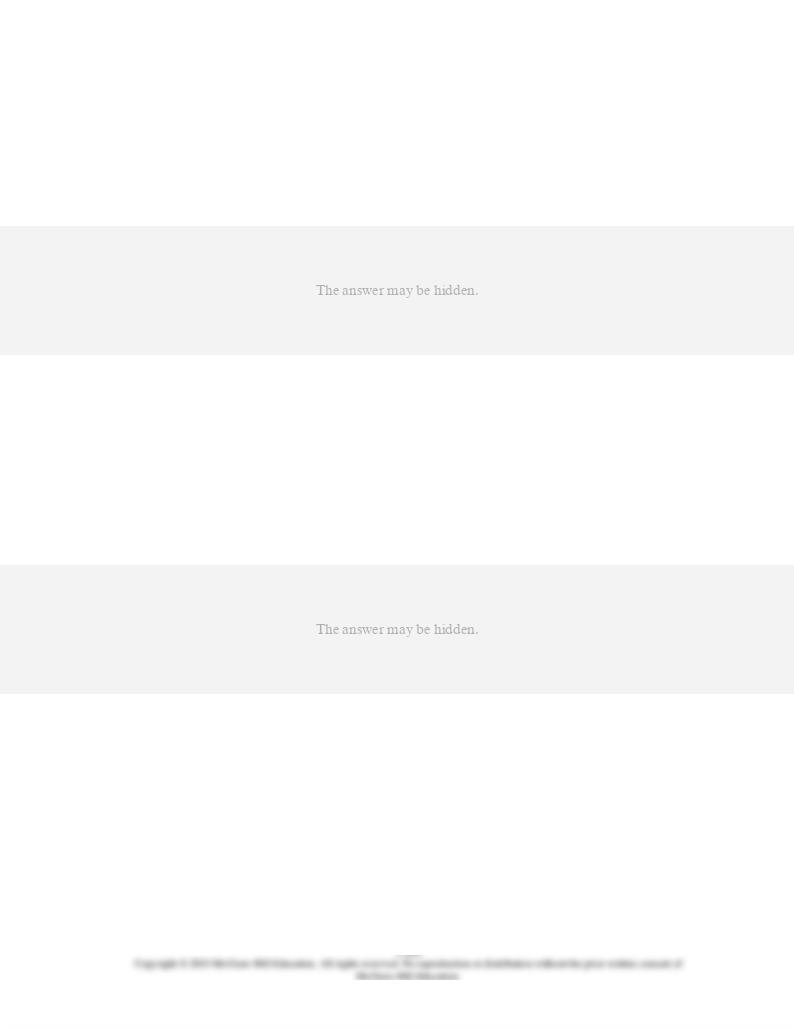
Difficulty: 1 Easy
Learning Objective: 01-06 Apply production possibilities analysis; increasing opportunity costs; and economic growth.
Topic: Production possibilities model
157.
The marginal benefit curve is:
AACSB: Analytic
Accessibility: Keyboard Navigation
Blooms: Remember
Difficulty: 1 Easy
Learning Objective: 01-06 Apply production possibilities analysis; increasing opportunity costs; and economic growth.
Topic: Production possibilities model
158.
The marginal cost curve is:
AACSB: Analytic
Accessibility: Keyboard Navigation
Blooms: Remember
Difficulty: 1 Easy
Learning Objective: 01-06 Apply production possibilities analysis; increasing opportunity costs; and economic growth.
Topic: Production possibilities model
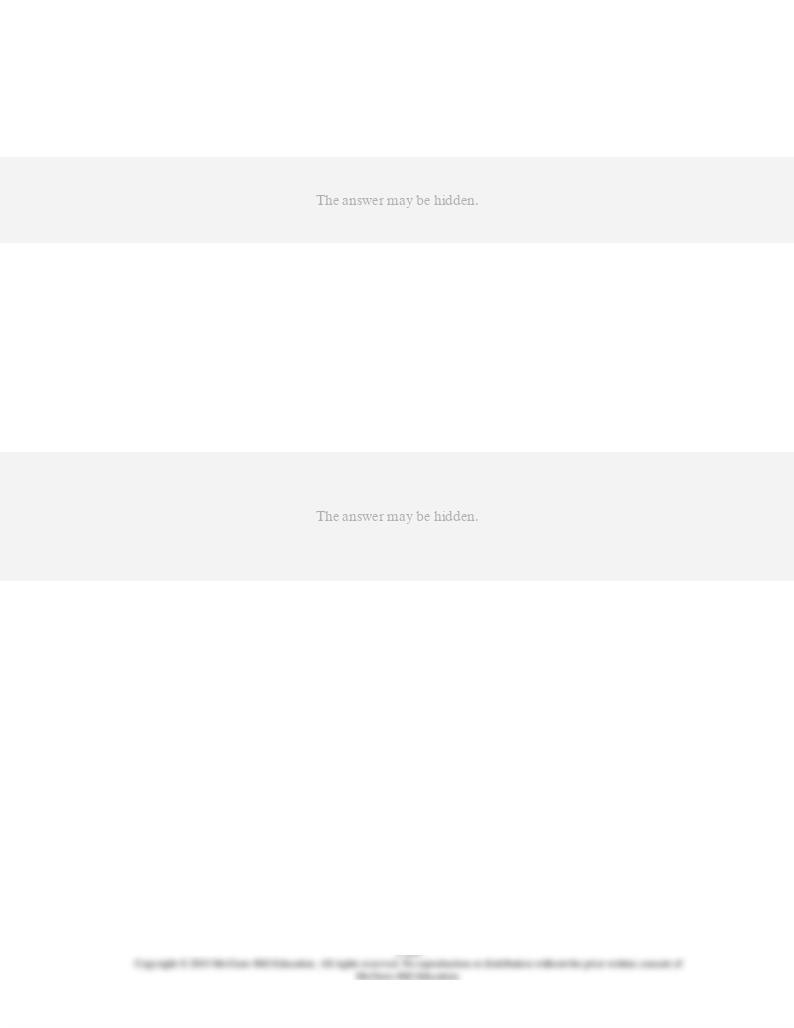
159.
The output of MP3 players should be:
AACSB: Reflective Thinking
Accessibility: Keyboard Navigation
Blooms: Apply
Difficulty: 2 Medium
Learning Objective: 01-06 Apply production possibilities analysis; increasing opportunity costs; and economic growth.
Topic: Production possibilities model
160.
If the output of product X is such that marginal benefit equals marginal cost:
AACSB: Reflective Thinking
Accessibility: Keyboard Navigation
Blooms: Understand
Difficulty: 2 Medium
Learning Objective: 01-06 Apply production possibilities analysis; increasing opportunity costs; and economic growth.
Topic: Production possibilities model
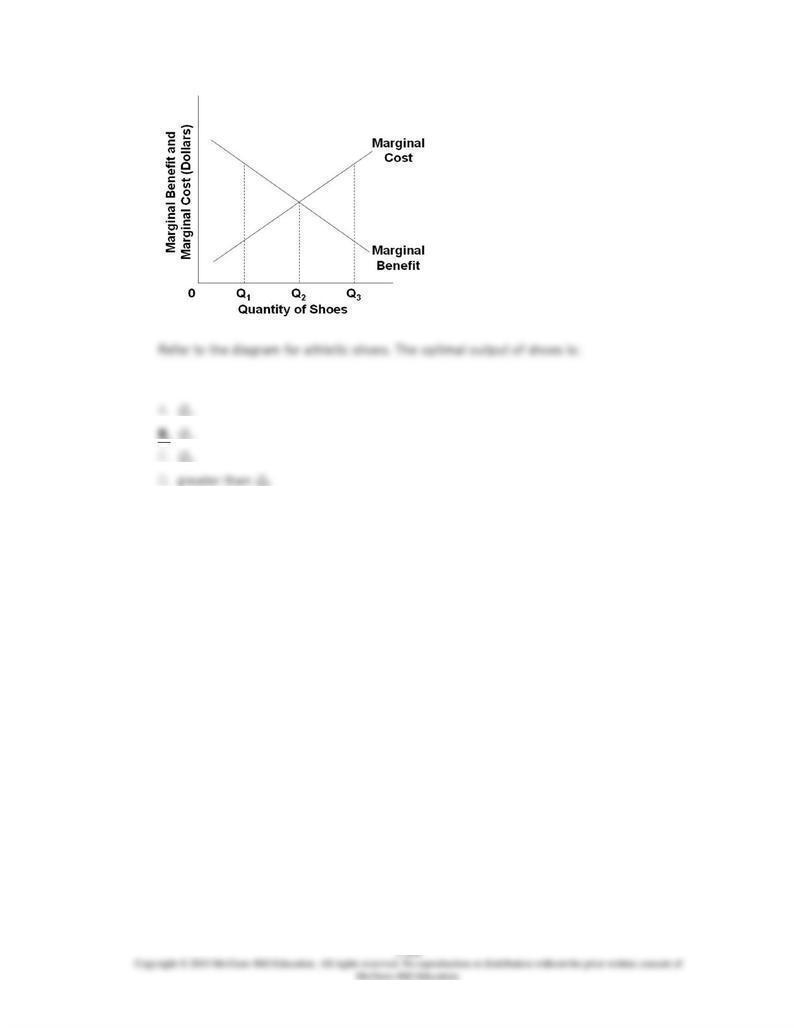
161.
1.
2.
3.
3.
AACSB: Reflective Thinking
Blooms: Analyze
Difficulty: 3 Hard
Learning Objective: 01-06 Apply production possibilities analysis; increasing opportunity costs; and economic growth.
Topic: Production possibilities model
Type: Graph
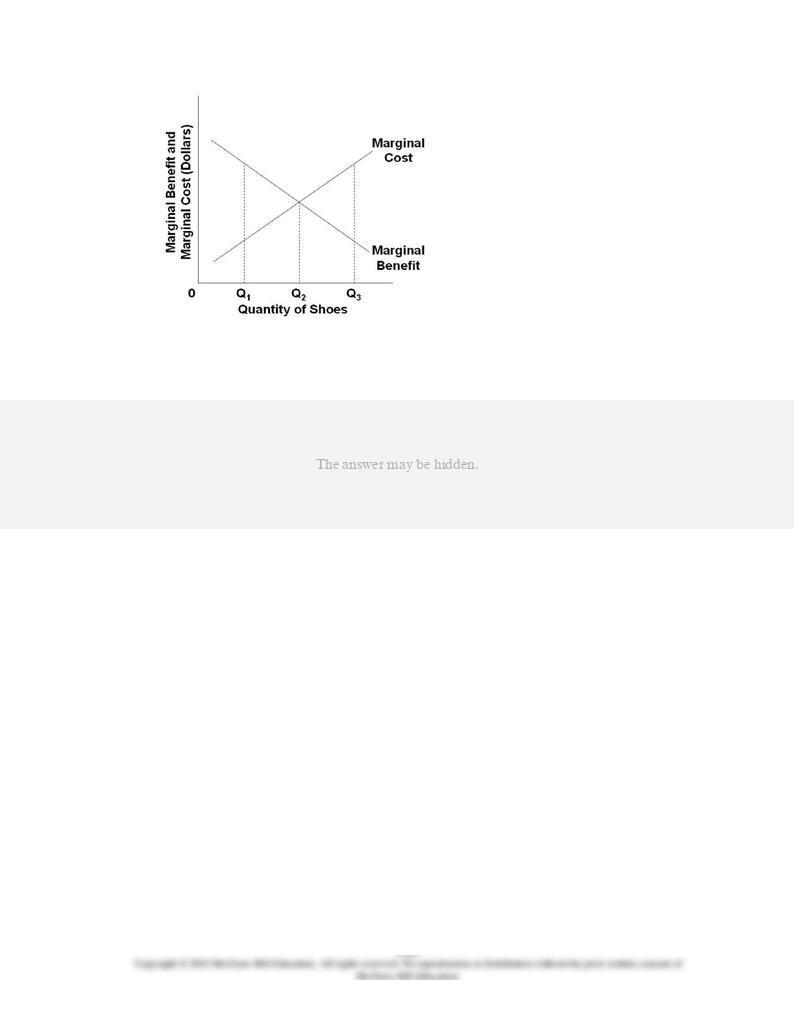
162.
Refer to the diagram for athletic shoes. If the current output of shoes is
Q
1, then:
AACSB: Reflective Thinking
Blooms: Analyze
Difficulty: 3 Hard
Learning Objective: 01-06 Apply production possibilities analysis; increasing opportunity costs; and economic growth.
Topic: Production possibilities model
Type: Graph

163.
Refer to the diagram for athletic shoes. If the current output of shoes is
Q
3, then:
AACSB: Reflective Thinking
Blooms: Analyze
Difficulty: 3 Hard
Learning Objective: 01-06 Apply production possibilities analysis; increasing opportunity costs; and economic growth.
Topic: Production possibilities model
Type: Graph

164.
Refer to the diagram for athletic shoes. If the current output of shoes is
Q
3, then:
AACSB: Reflective Thinking
Blooms: Analyze
Difficulty: 3 Hard
Learning Objective: 01-06 Apply production possibilities analysis; increasing opportunity costs; and economic growth.
Topic: Production possibilities model
Type: Graph
165.
Suppose that a fully employed economy produces only two goods, hamburgers and flat-
panel TVs. If the economy is currently producing more than the optimal quantity of
hamburgers, then to attain the optimal allocation of resources it should:
AACSB: Analytic
Accessibility: Keyboard Navigation
Blooms: Analyze
Difficulty: 3 Hard
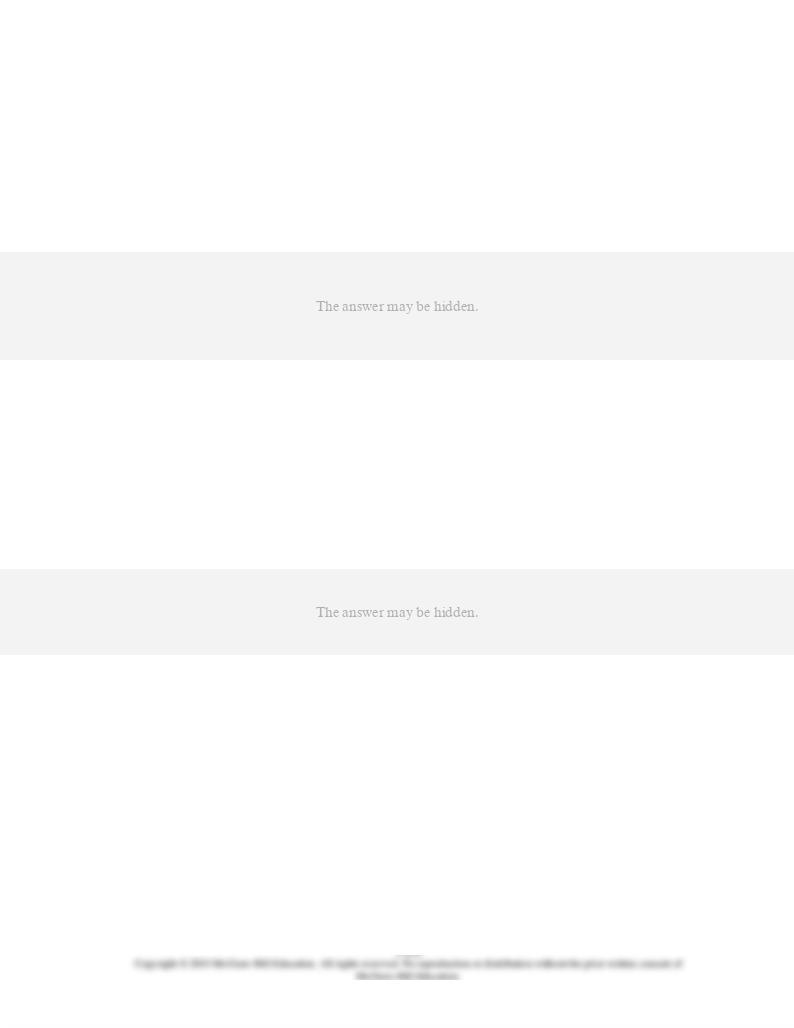
Learning Objective: 01-06 Apply production possibilities analysis; increasing opportunity costs; and economic growth.
Topic: Production possibilities model
166.
Suppose that an economy is producing on its production possibilities curve but is not
producing quantities of each good where the marginal benefit equals the marginal cost for
each good. This economy:
AACSB: Reflective Thinking
Accessibility: Keyboard Navigation
Blooms: Analyze
Difficulty: 3 Hard
Learning Objective: 01-06 Apply production possibilities analysis; increasing opportunity costs; and economic growth.
Topic: Production possibilities model
167.
The optimal allocation of resources is found:
AACSB: Analytic
Accessibility: Keyboard Navigation
Blooms: Remember
Difficulty: 1 Easy
Learning Objective: 01-06 Apply production possibilities analysis; increasing opportunity costs; and economic growth.
Topic: Production possibilities model

168.
Refer to the diagram. Technological advance in producing both capital goods and
consumer goods is shown by the shift of the production possibilities curve from AB to:
AACSB: Reflective Thinking
Blooms: Analyze
Difficulty: 3 Hard
Learning Objective: 01-07 Explain how economic growth and international trade increase consumption possibilities.
Topic: Unemployment, growth, and the future
Type: Graph
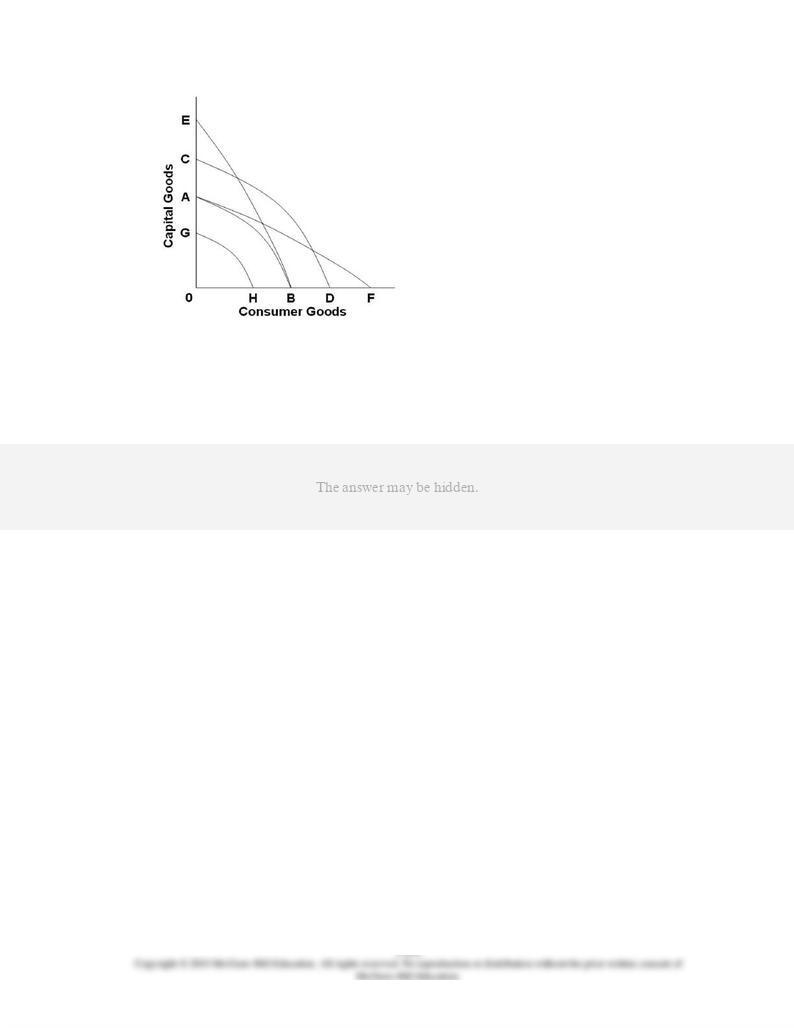
169.
Refer to the diagram. Technological advance that improves the ability to produce capital
goods but not consumer goods is shown by the shift of the production possibilities curve
from AB to:
AACSB: Reflective Thinking
Blooms: Analyze
Difficulty: 3 Hard
Learning Objective: 01-07 Explain how economic growth and international trade increase consumption possibilities.
Topic: Unemployment, growth, and the future
Type: Graph
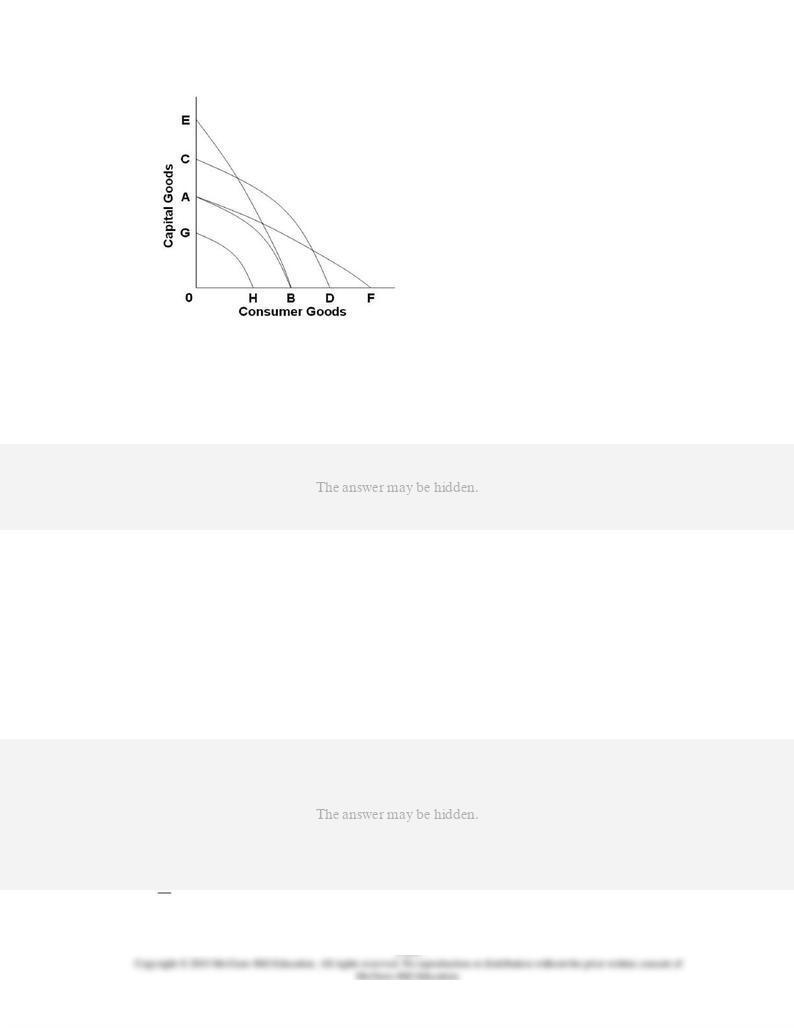
170.
Refer to the diagram. Technological advance that is useful in producing consumer goods
but not in producing capital goods is shown by the shift of the production possibilities
curve from AB to:
AACSB: Reflective Thinking
Blooms: Analyze
Difficulty: 3 Hard
Learning Objective: 01-07 Explain how economic growth and international trade increase consumption possibilities.
Topic: Unemployment, growth, and the future
Type: Graph
171.
The basic difference between consumer goods and capital goods is that:
AACSB: Analytic
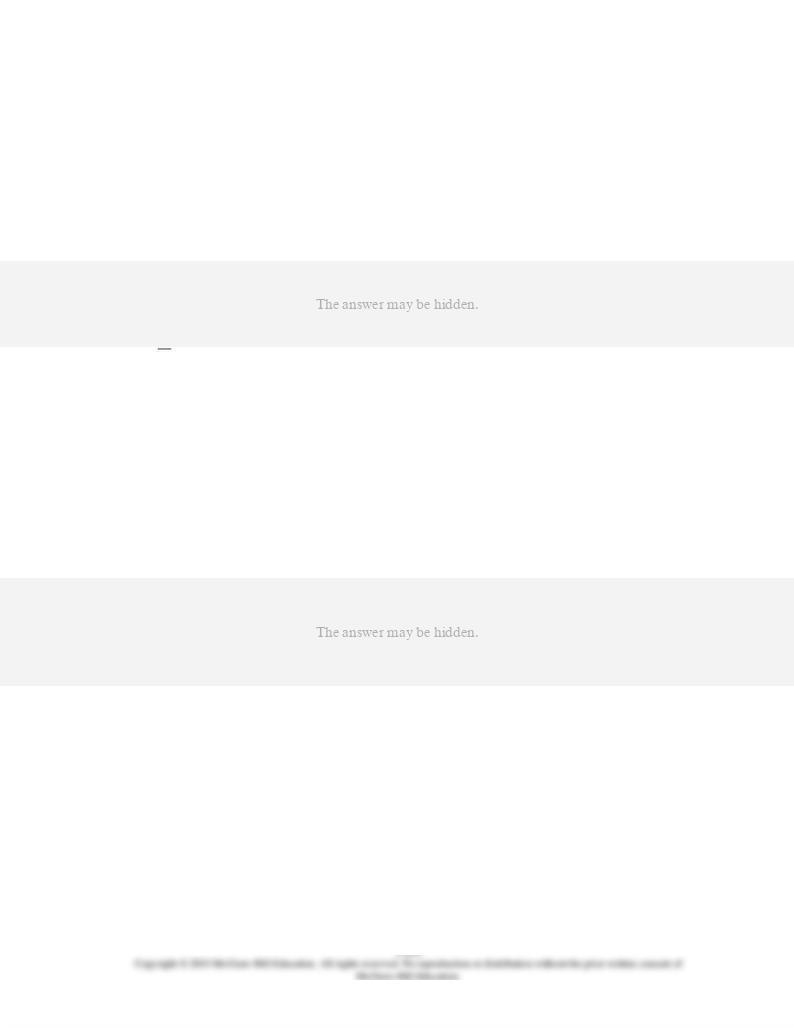
Accessibility: Keyboard Navigation
Blooms: Remember
Difficulty: 1 Easy
Learning Objective: 01-07 Explain how economic growth and international trade increase consumption possibilities.
Topic: Unemployment, growth, and the future
172.
Which of the following will shift the production possibilities curve to the right?
AACSB: Analytic
Accessibility: Keyboard Navigation
Blooms: Understand
Difficulty: 2 Medium
Learning Objective: 01-07 Explain how economic growth and international trade increase consumption possibilities.
Topic: Unemployment, growth, and the future
173.
Other things equal, which of the following would shift an economy's production
possibilities curve to the left?
AACSB: Reflective Thinking
Accessibility: Keyboard Navigation
Blooms: Analyze
Difficulty: 3 Hard
Learning Objective: 01-07 Explain how economic growth and international trade increase consumption possibilities.
Topic: Unemployment, growth, and the future
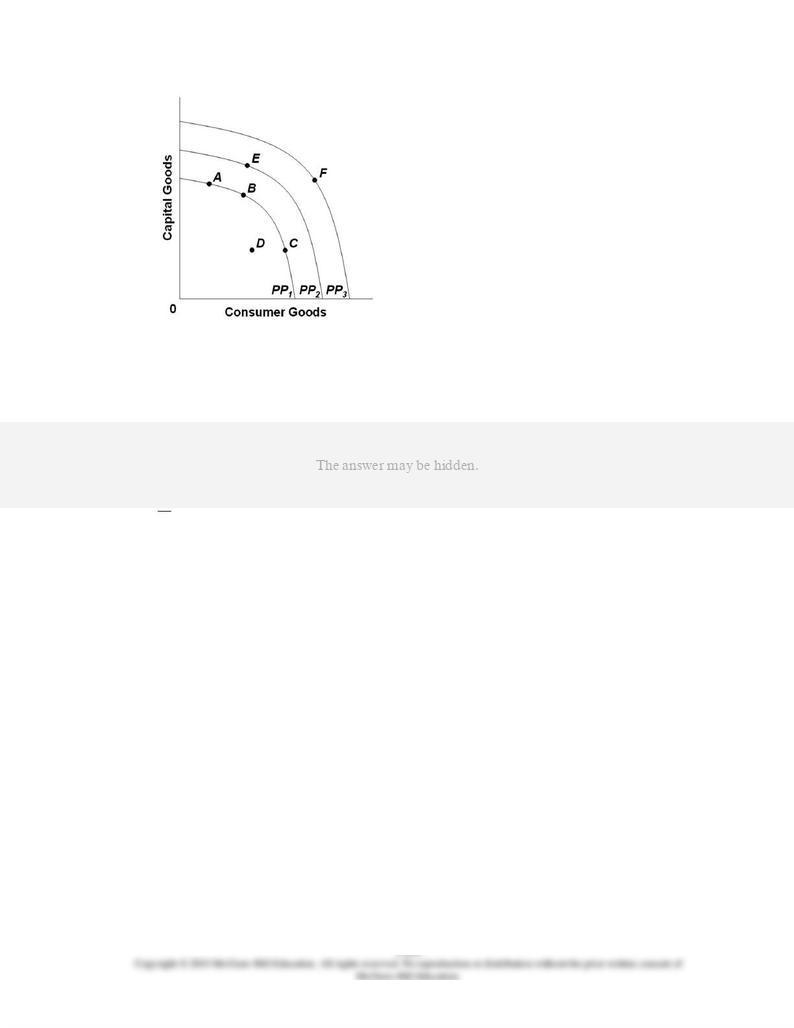
174.
Refer to the diagram. The concave shape of each production possibilities curve indicates
that:
AACSB: Analytic
Blooms: Understand
Difficulty: 2 Medium
Learning Objective: 01-07 Explain how economic growth and international trade increase consumption possibilities.
Topic: Unemployment, growth, and the future
Type: Graph
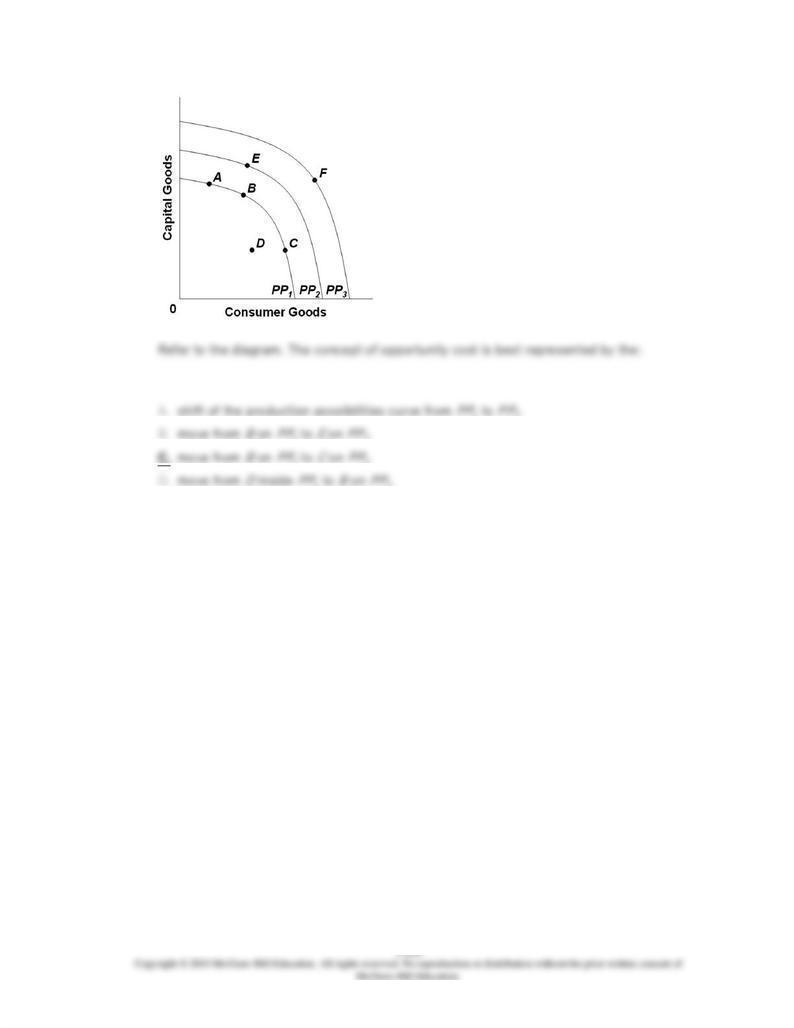
175.
1 to
2.
1 to
2.
1 to
1.
1 to
1.
AACSB: Analytic
Blooms: Understand
Difficulty: 2 Medium
Learning Objective: 01-07 Explain how economic growth and international trade increase consumption possibilities.
Topic: Unemployment, growth, and the future
Type: Graph
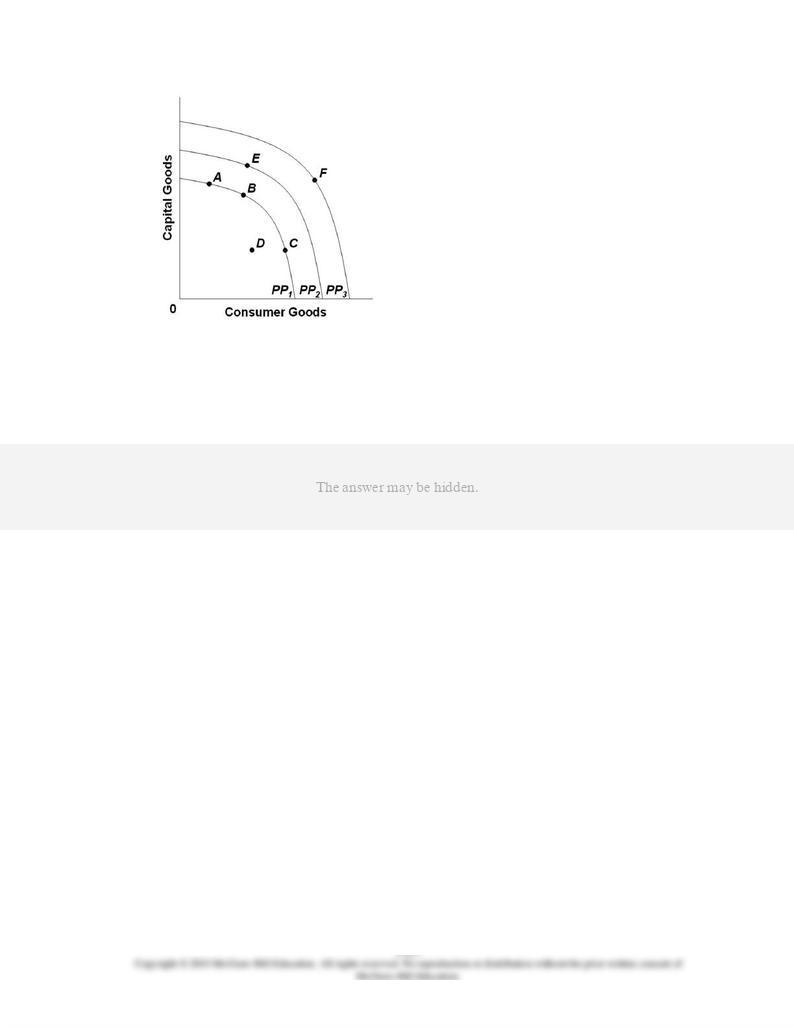
176.
Refer to the diagram. Other things equal, which of the following positions relative to
PP
1
would be the most likely to result in a future production possibilities curve of
PP
3 rather
than
PP
2?
AACSB: Reflective Thinking
Blooms: Analyze
Difficulty: 3 Hard
Learning Objective: 01-07 Explain how economic growth and international trade increase consumption possibilities.
Topic: Unemployment, growth, and the future
Type: Graph
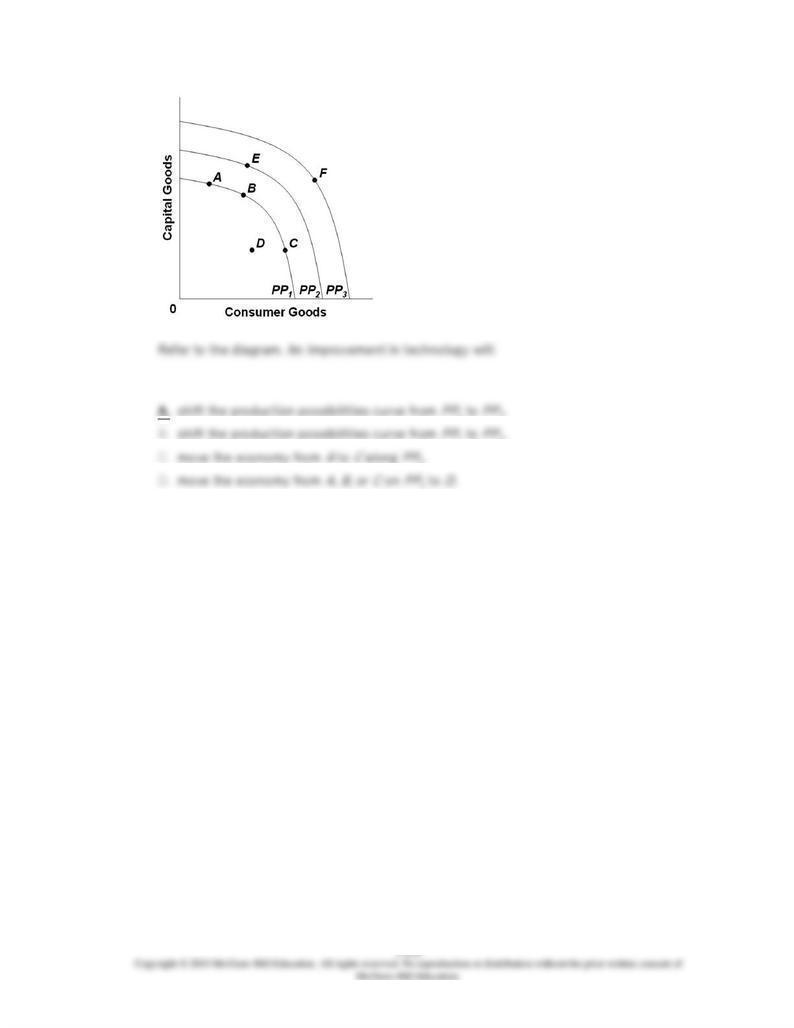
177.
1 to
2.
2 to
1.
1.
AACSB: Reflective Thinking
Blooms: Analyze
Difficulty: 3 Hard
Learning Objective: 01-07 Explain how economic growth and international trade increase consumption possibilities.
Topic: Unemployment, growth, and the future
Type: Graph

178.
Refer to the diagram. Which one of the following would shift the production possibilities
curve from
PP
1 to
PP
2?
AACSB: Reflective Thinking
Blooms: Analyze
Difficulty: 3 Hard
Learning Objective: 01-07 Explain how economic growth and international trade increase consumption possibilities.
Topic: Unemployment, growth, and the future
Type: Graph
179.
Which of the following statements, if any, is correct for a nation that is producing only
consumer and capital goods?
AACSB: Analytic
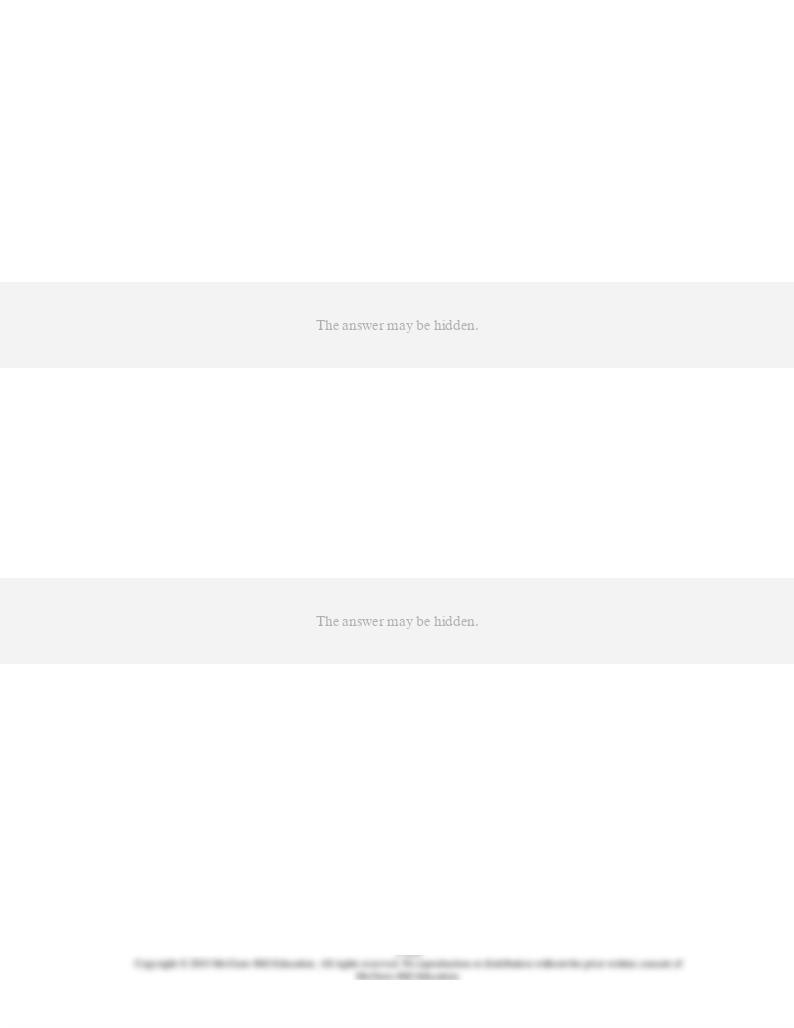
Accessibility: Keyboard Navigation
Blooms: Understand
Difficulty: 2 Medium
Learning Objective: 01-07 Explain how economic growth and international trade increase consumption possibilities.
Topic: Unemployment, growth, and the future
180.
All of the following could immediately or eventually lead to an inward shift of a nation's
production possibilities curve,
except
:
AACSB: Reflective Thinking
Accessibility: Keyboard Navigation
Blooms: Apply
Difficulty: 2 Medium
Learning Objective: 01-07 Explain how economic growth and international trade increase consumption possibilities.
Topic: Unemployment, growth, and the future
181.
A nation's production possibilities curve might shift to the left (inward) as a result of:
AACSB: Analytic
Accessibility: Keyboard Navigation
Blooms: Understand
Difficulty: 2 Medium
Learning Objective: 01-07 Explain how economic growth and international trade increase consumption possibilities.
Topic: Unemployment, growth, and the future
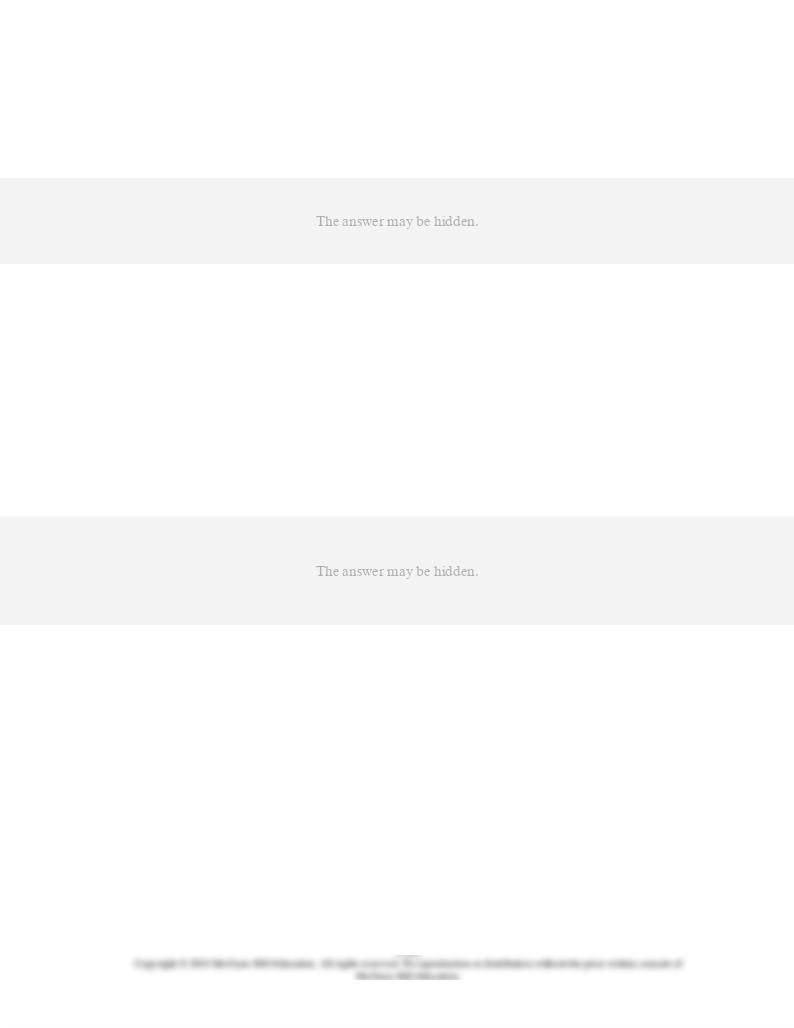
182.
Which of the following will enable a nation to obtain a combination of consumer goods and
capital goods outside its production possibilities curve?
AACSB: Analytic
Accessibility: Keyboard Navigation
Blooms: Remember
Difficulty: 1 Easy
Learning Objective: 01-07 Explain how economic growth and international trade increase consumption possibilities.
Topic: Unemployment, growth, and the future
183.
Suppose that Scoobania, which has full employment, can obtain 1 unit of capital goods by
sacrificing 2 units of consumer goods domestically but can obtain 1 unit of capital goods
from another country by trading 1 unit of consumer goods for it. This reality illustrates:
AACSB: Reflective Thinking
Accessibility: Keyboard Navigation
Blooms: Analyze
Difficulty: 3 Hard
Learning Objective: 01-07 Explain how economic growth and international trade increase consumption possibilities.
Topic: Unemployment, growth, and the future
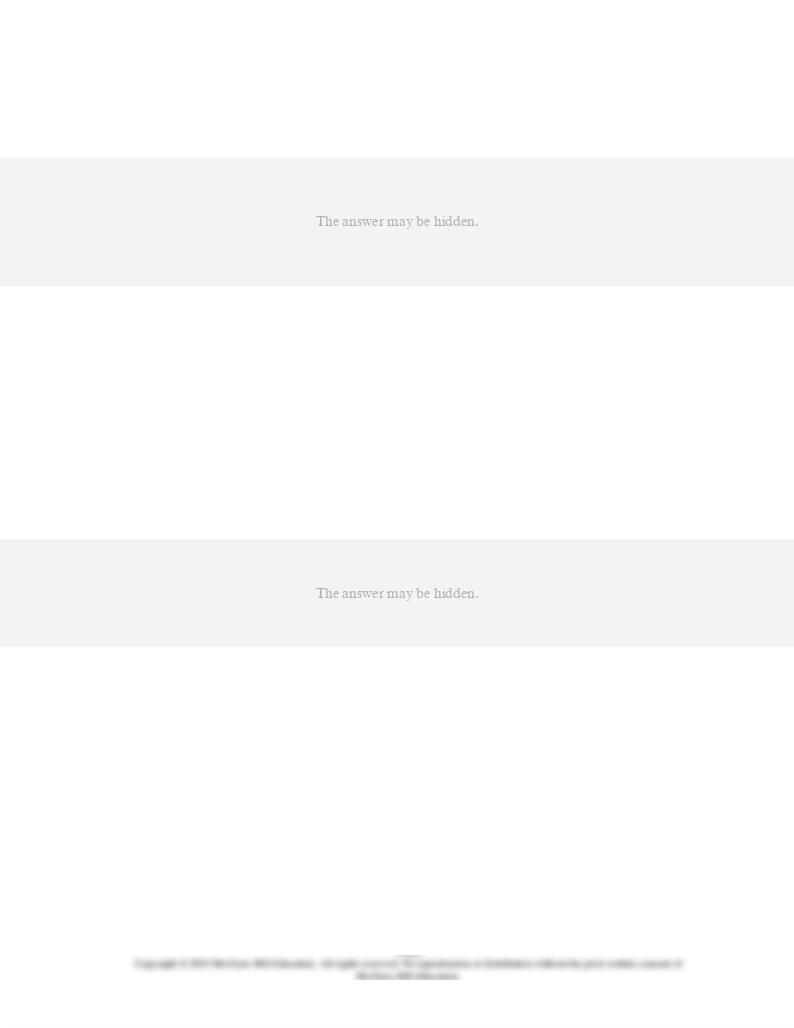
184.
Through specialization and international trade, a nation:
AACSB: Analytic
Accessibility: Keyboard Navigation
Blooms: Remember
Difficulty: 1 Easy
Learning Objective: 01-07 Explain how economic growth and international trade increase consumption possibilities.
Topic: Unemployment, growth, and the future
185.
Some agricultural sub-Saharan nations of Africa have overfarmed and overgrazed their
land to the extent that significant portions of it have turned into desert. This suggests
that:
AACSB: Reflective Thinking
Accessibility: Keyboard Navigation
Blooms: Apply
Difficulty: 2 Medium
Learning Objective: 01-07 Explain how economic growth and international trade increase consumption possibilities.
Topic: Unemployment, growth, and the future
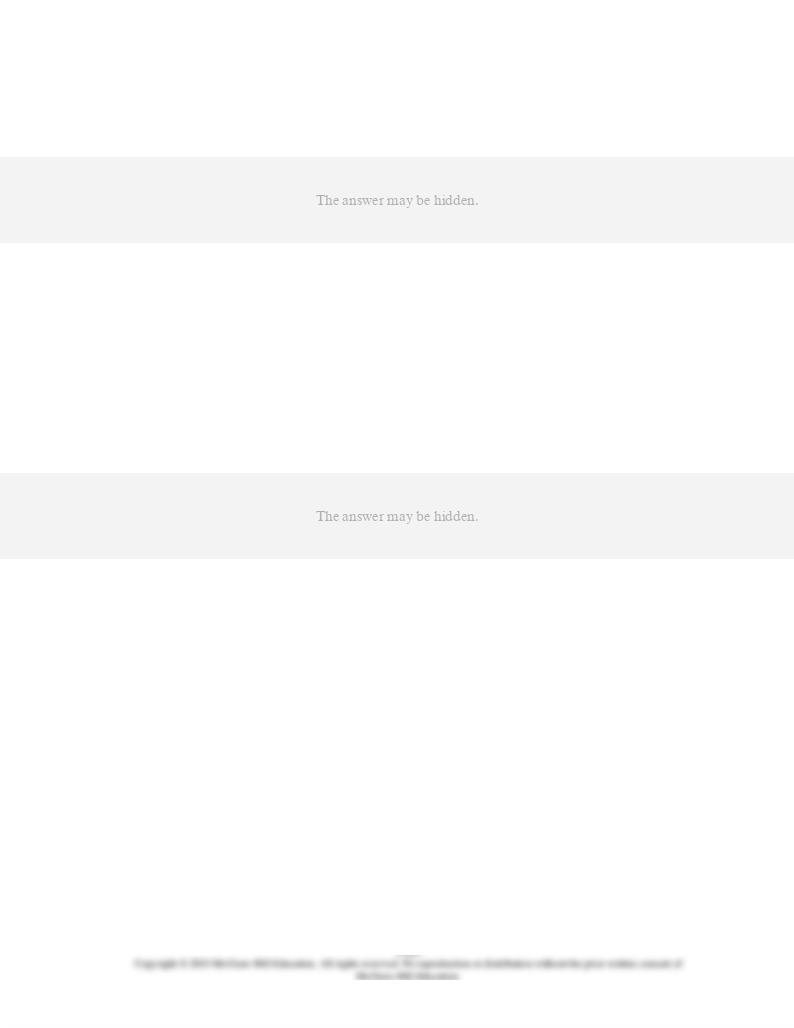
186.
If all discrimination in the United States were eliminated, the economy would:
AACSB: Reflective Thinking
Accessibility: Keyboard Navigation
Blooms: Apply
Difficulty: 2 Medium
Learning Objective: 01-07 Explain how economic growth and international trade increase consumption possibilities.
Topic: Unemployment, growth, and the future
187.
A country can achieve some combination of goods outside its production possibilities
curve by:
AACSB: Analytic
Accessibility: Keyboard Navigation
Blooms: Remember
Difficulty: 1 Easy
Learning Objective: 01-07 Explain how economic growth and international trade increase consumption possibilities.
Topic: Unemployment, growth, and the future
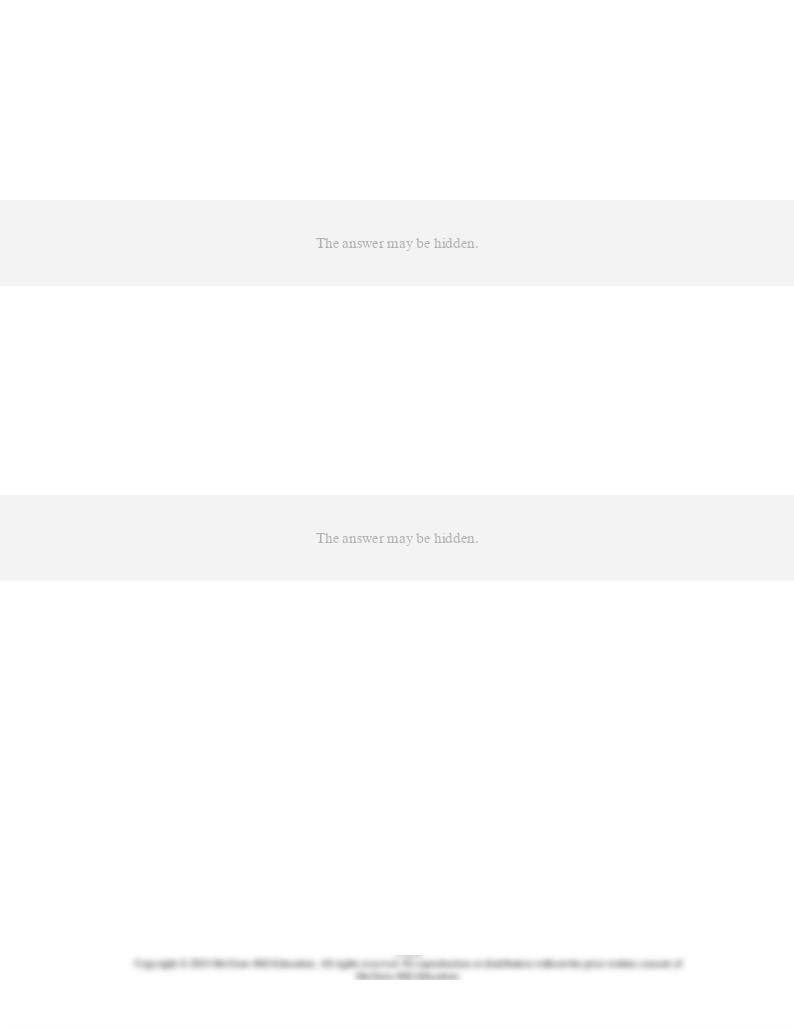
188.
In recent years the economy of Japan has grown, despite the fact that the population of
Japan has declined. Which of the following would best explain Japan's economic growth
despite having a smaller population?
AACSB: Reflective Thinking
Accessibility: Keyboard Navigation
Blooms: Apply
Difficulty: 2 Medium
Learning Objective: 01-07 Explain how economic growth and international trade increase consumption possibilities.
Topic: Unemployment, growth, and the future
189.
(Consider This) Free products offered by firms:
AACSB: Analytic
Accessibility: Keyboard Navigation
Blooms: Understand
Difficulty: 2 Medium
Learning Objective: 01-01 Define economics and the features of the economic perspective.
Topic: Economic perspective
Topic: Economics
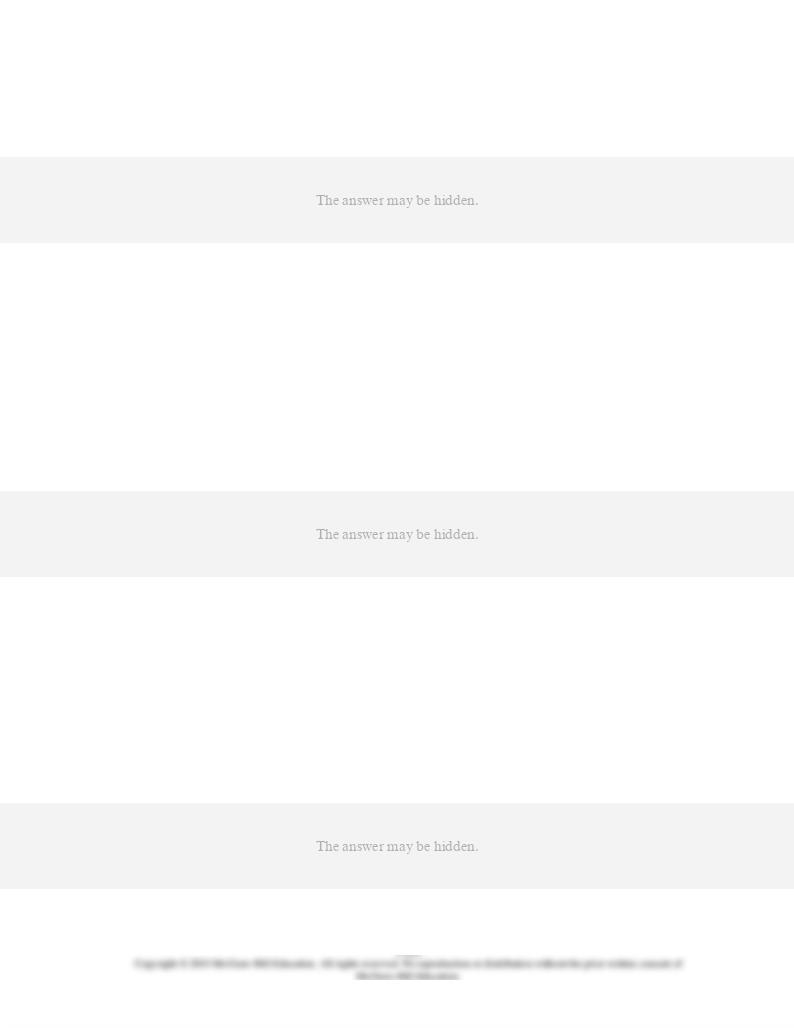
190.
(Consider This) The assertion by economists that "there is no free lunch":
AACSB: Analytic
Accessibility: Keyboard Navigation
Blooms: Understand
Difficulty: 2 Medium
Learning Objective: 01-01 Define economics and the features of the economic perspective.
Topic: Economic perspective
Topic: Economics
191.
(Consider This) The economic perspective used in customer decision making at fast-food
restaurants is reflected in:
AACSB: Analytic
Accessibility: Keyboard Navigation
Blooms: Understand
Difficulty: 2 Medium
Learning Objective: 01-01 Define economics and the features of the economic perspective.
Topic: Economic perspective
Topic: Economics
192.
(Consider This) At fast-food restaurants:
AACSB: Analytic
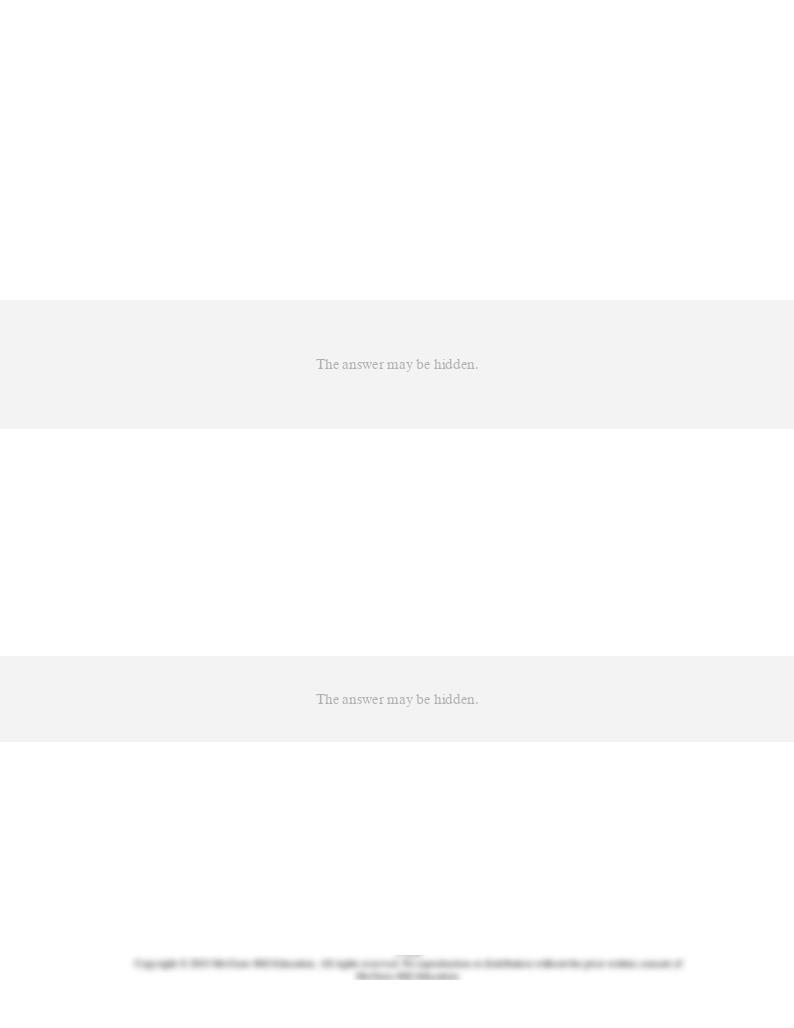
Accessibility: Keyboard Navigation
Blooms: Understand
Difficulty: 2 Medium
Learning Objective: 01-01 Define economics and the features of the economic perspective.
Topic: Economic perspective
Topic: Economics
193.
(Consider This) Consumers might leave a fast-food restaurant without being served
because:
AACSB: Reflective Thinking
Accessibility: Keyboard Navigation
Blooms: Apply
Difficulty: 2 Medium
Learning Objective: 01-01 Define economics and the features of the economic perspective.
Topic: Economic perspective
Topic: Economics
194.
(Consider This) A direct cost of going to college is:
AACSB: Analytic
Accessibility: Keyboard Navigation
Blooms: Remember
Difficulty: 1 Easy
Learning Objective: 01-01 Define economics and the features of the economic perspective.
Topic: Economic perspective
Topic: Economics

195.
(Consider This) An exception to the advice "go to college, stay in college, and earn a
degree" occurs when:
AACSB: Analytic
Accessibility: Keyboard Navigation
Blooms: Understand
Difficulty: 2 Medium
Learning Objective: 01-01 Define economics and the features of the economic perspective.
Topic: Economic perspective
Topic: Economics
196.
(Consider This) Refer to the diagram. The direct economic impact of the destruction and
loss of lives caused by the terrorist attacks of September 11, 2001, is illustrated by the:
AACSB: Reflective Thinking
Blooms: Analyze
Difficulty: 3 Hard

Learning Objective: 01-06 Apply production possibilities analysis; increasing opportunity costs; and economic growth.
Topic: Production possibilities model
Type: Graph
197.
(Consider This) Refer to the diagram. The U.S. response to the events of September 11,
2001, is illustrated by the:
AACSB: Reflective Thinking
Blooms: Analyze
Difficulty: 3 Hard
Learning Objective: 01-06 Apply production possibilities analysis; increasing opportunity costs; and economic growth.
Topic: Production possibilities model
Type: Graph

198.
(Consider This) Refer to the diagram. Suppose that point
y
represents the optimal
combination of civilian goods and defense goods. We can conclude that at
y
the marginal
benefit of defense goods:
AACSB: Analytic
Blooms: Understand
Difficulty: 2 Medium
Learning Objective: 01-06 Apply production possibilities analysis; increasing opportunity costs; and economic growth.
Topic: Production possibilities model
Type: Graph
199.
(Consider This) In response to the terrorist attacks of September 11, 2001, the government
decided to allocate more resources toward defense goods. The government's decision
reflects their assessment that:
AACSB: Analytic

Accessibility: Keyboard Navigation
Blooms: Understand
Difficulty: 2 Medium
Learning Objective: 01-06 Apply production possibilities analysis; increasing opportunity costs; and economic growth.
Topic: Production possibilities model
200.
(Last Word) The fallacy of composition states that:
AACSB: Analytic
Accessibility: Keyboard Navigation
Blooms: Remember
Difficulty: 1 Easy
Learning Objective: 01-02 Describe the role of economic theory in economics.
Topic: Theories, principles, and models
201.
(Last Word) The "after this, therefore because of this" fallacy states that:
AACSB: Analytic
Accessibility: Keyboard Navigation
Blooms: Remember
Difficulty: 1 Easy
Learning Objective: 01-02 Describe the role of economic theory in economics.
Topic: Theories, principles, and models
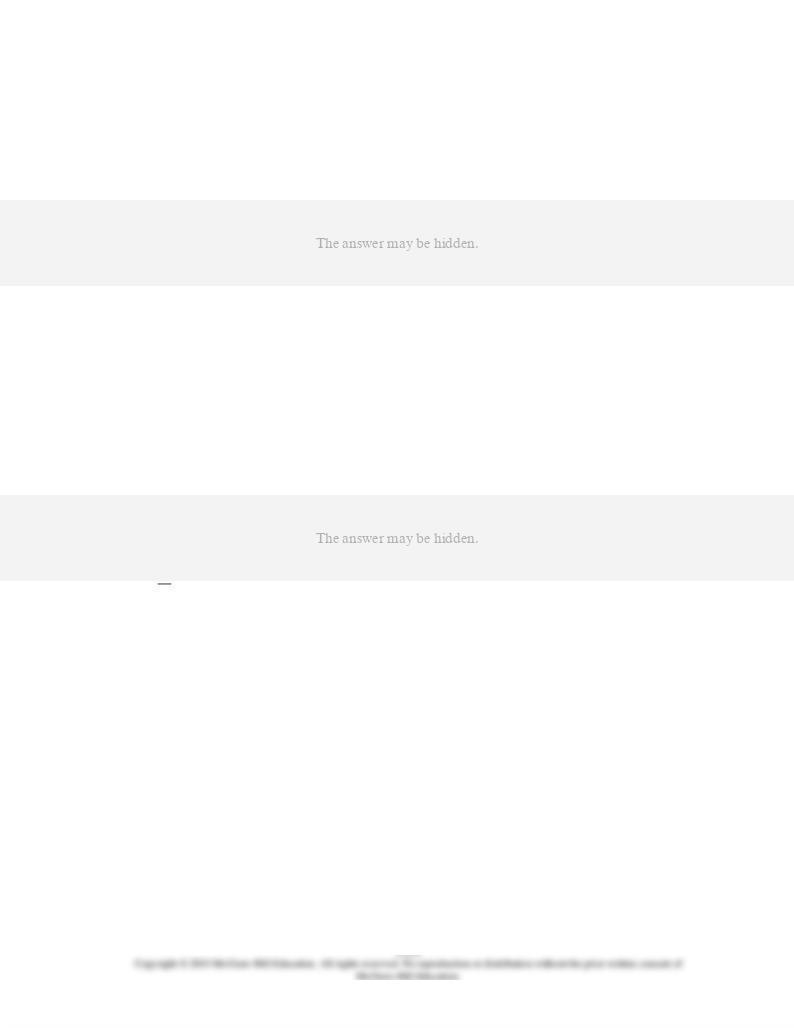
202.
(Last Word) The safest way for an individual to leave a burning theater is to run for the
nearest exit; it is therefore also the best means of escape for a large audience. This
assertion illustrates the:
AACSB: Reflective Thinking
Accessibility: Keyboard Navigation
Blooms: Apply
Difficulty: 2 Medium
Learning Objective: 01-02 Describe the role of economic theory in economics.
Topic: Theories, principles, and models
203.
(Last Word) The
post
hoc,
ergo
propter
hoc
fallacy suggests that:
AACSB: Analytic
Accessibility: Keyboard Navigation
Blooms: Understand
Difficulty: 2 Medium
Learning Objective: 01-02 Describe the role of economic theory in economics.
Topic: Theories, principles, and models
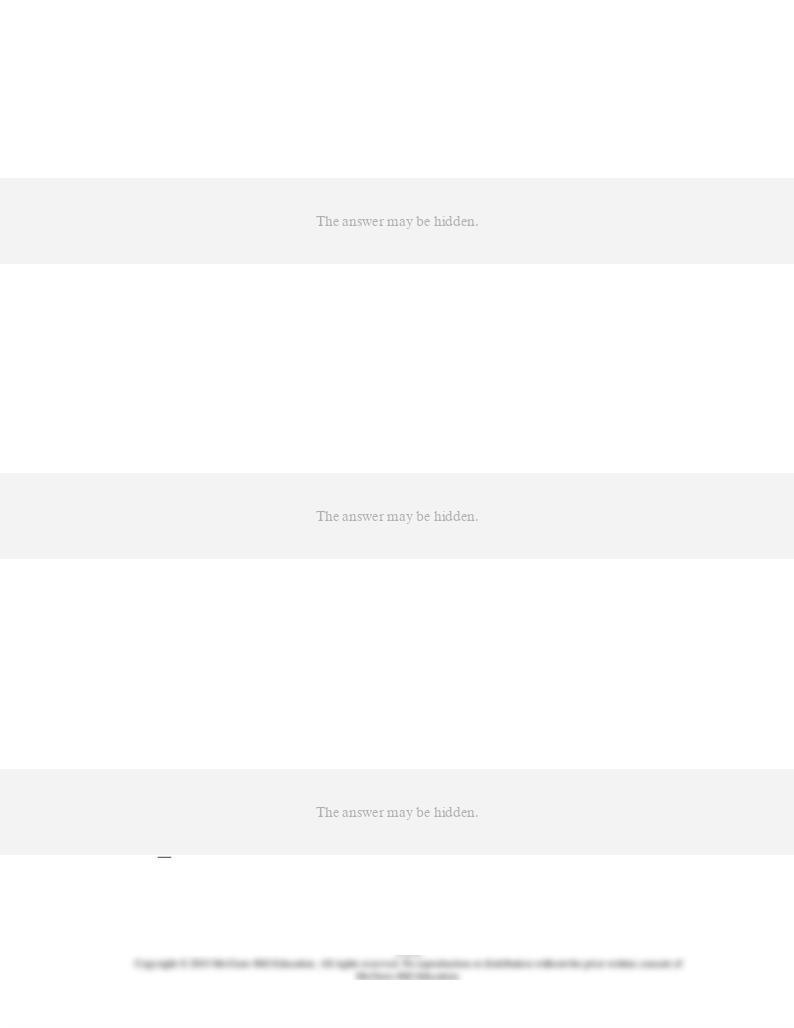
204.
(Last Word) Which of the following has to do with the problem of distinguishing cause and
effect in economic reasoning?
AACSB: Analytic
Accessibility: Keyboard Navigation
Blooms: Understand
Difficulty: 2 Medium
Learning Objective: 01-02 Describe the role of economic theory in economics.
Topic: Theories, principles, and models
205.
(Last Word) Which of the following best illustrates the
post
hoc,
ergo
propter
hoc
fallacy?
AACSB: Reflective Thinking
Accessibility: Keyboard Navigation
Blooms: Apply
Difficulty: 2 Medium
Learning Objective: 01-02 Describe the role of economic theory in economics.
Topic: Theories, principles, and models
206.
(Last Word) The fallacy of composition is essentially the error of:
AACSB: Analytic
Accessibility: Keyboard Navigation
Blooms: Understand
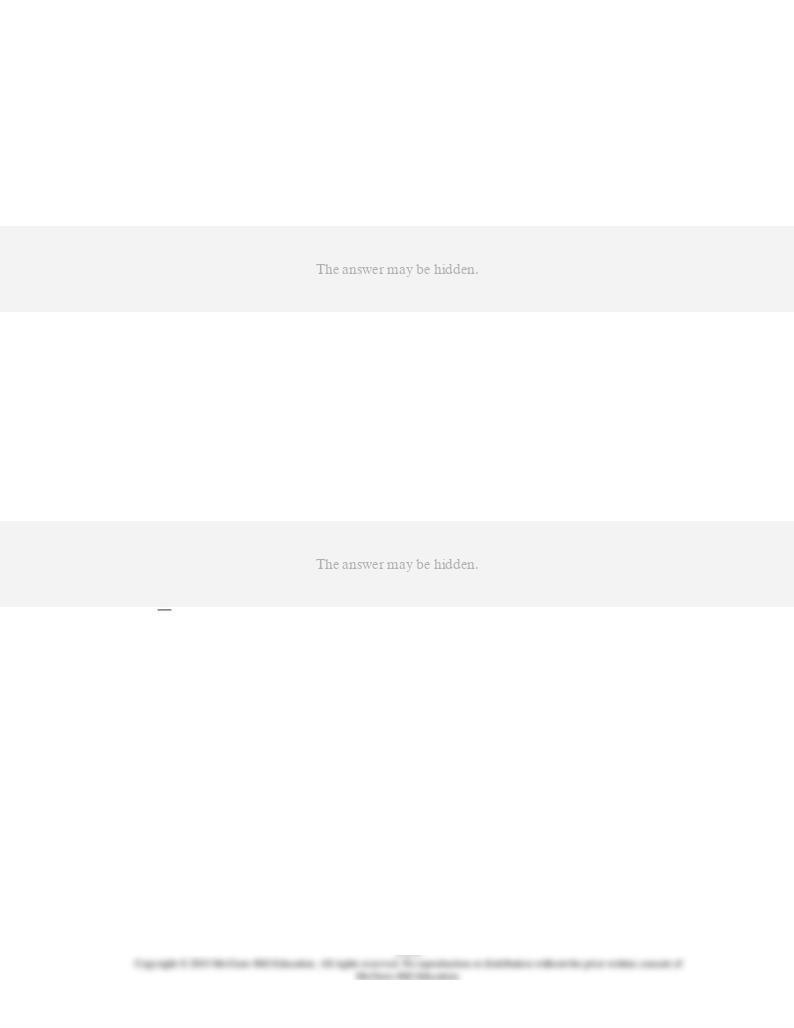
Difficulty: 2 Medium
Learning Objective: 01-02 Describe the role of economic theory in economics.
Topic: Theories, principles, and models
207.
(Last Word) The
post
hoc
fallacy and the correlation problem both relate to:
AACSB: Analytic
Accessibility: Keyboard Navigation
Blooms: Understand
Difficulty: 2 Medium
Learning Objective: 01-02 Describe the role of economic theory in economics.
Topic: Theories, principles, and models
208.
(Last Word) If variables
X
and
Y
are positively correlated, this means that:
AACSB: Analytic
Accessibility: Keyboard Navigation
Blooms: Understand
Difficulty: 2 Medium
Learning Objective: 01-02 Describe the role of economic theory in economics.
Topic: Theories, principles, and models
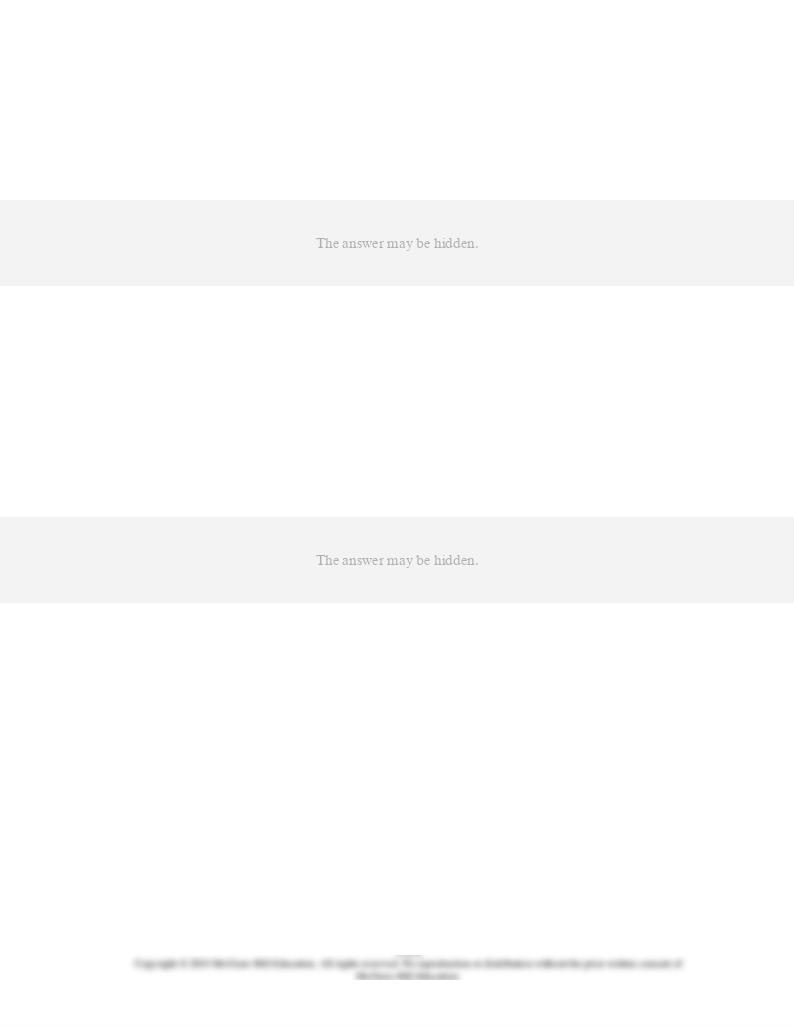
209.
(Last Word) "The government deregulated the electricity industry in California and a
shortage of electricity soon occurred. It is clear that the deregulation caused the
shortage." This statement needs careful analysis because it may reflect the:
AACSB: Reflective Thinking
Accessibility: Keyboard Navigation
Blooms: Apply
Difficulty: 2 Medium
Learning Objective: 01-02 Describe the role of economic theory in economics.
Topic: Theories, principles, and models
210.
(Last Word) A caller to a radio talk show states that oil companies are "greedy price
gougers." This is an example of:
AACSB: Reflective Thinking
Accessibility: Keyboard Navigation
Blooms: Apply
Difficulty: 2 Medium
Learning Objective: 01-02 Describe the role of economic theory in economics.
Topic: Theories, principles, and models
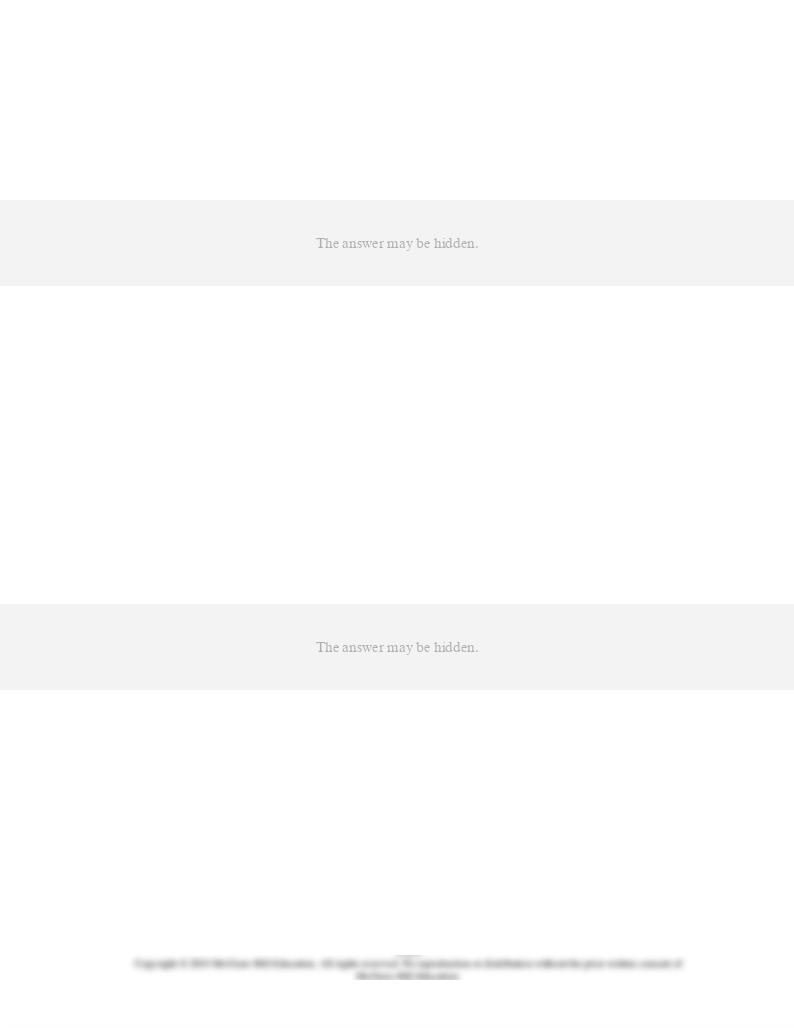
211.
(Last Word) A caller to a radio talk show states that protesters against globalization are a
collection of "anarchist punks, naïve college students, and trade union radicals." This is an
example of:
AACSB: Reflective Thinking
Accessibility: Keyboard Navigation
Blooms: Apply
Difficulty: 2 Medium
Learning Objective: 01-02 Describe the role of economic theory in economics.
Topic: Theories, principles, and models
212.
(Last Word) A study found that the incidence of skin cancer increases along with the
amount of time people work under fluorescent light, leading some people to conclude that
fluorescent lighting is a cause of skin cancer. But further analysis found that people who
work in offices, where fluorescent light is common, suffer more sunburn on their vacations
than other workers. The sunburns, not the fluorescent light, were the cause of the higher
incidence of skin cancer. The original conclusion illustrates:
AACSB: Reflective Thinking
Accessibility: Keyboard Navigation
Blooms: Apply
Difficulty: 2 Medium
Learning Objective: 01-02 Describe the role of economic theory in economics.
Topic: Theories, principles, and models
True / False Questions

213.
An economic model is an ideal or utopian type of economy that society should strive to
obtain through economic policy.
AACSB: Analytic
Accessibility: Keyboard Navigation
Blooms: Remember
Difficulty: 1 Easy
Learning Objective: 01-02 Describe the role of economic theory in economics.
Topic: Theories, principles, and models
214.
Because economic generalizations are simplifications from reality, they are impractical
and useless.
AACSB: Analytic
Accessibility: Keyboard Navigation
Blooms: Understand
Difficulty: 2 Medium
Learning Objective: 01-02 Describe the role of economic theory in economics.
Topic: Theories, principles, and models
215.
If economic theories are solidly based on relevant facts, then appropriate economic policy
becomes obvious and uncontroversial.
AACSB: Analytic
Accessibility: Keyboard Navigation
Blooms: Understand
Difficulty: 2 Medium
Learning Objective: 01-02 Describe the role of economic theory in economics.
Topic: Theories, principles, and models
216.
Normative statements are expressions of facts.
AACSB: Analytic
Accessibility: Keyboard Navigation
Blooms: Remember
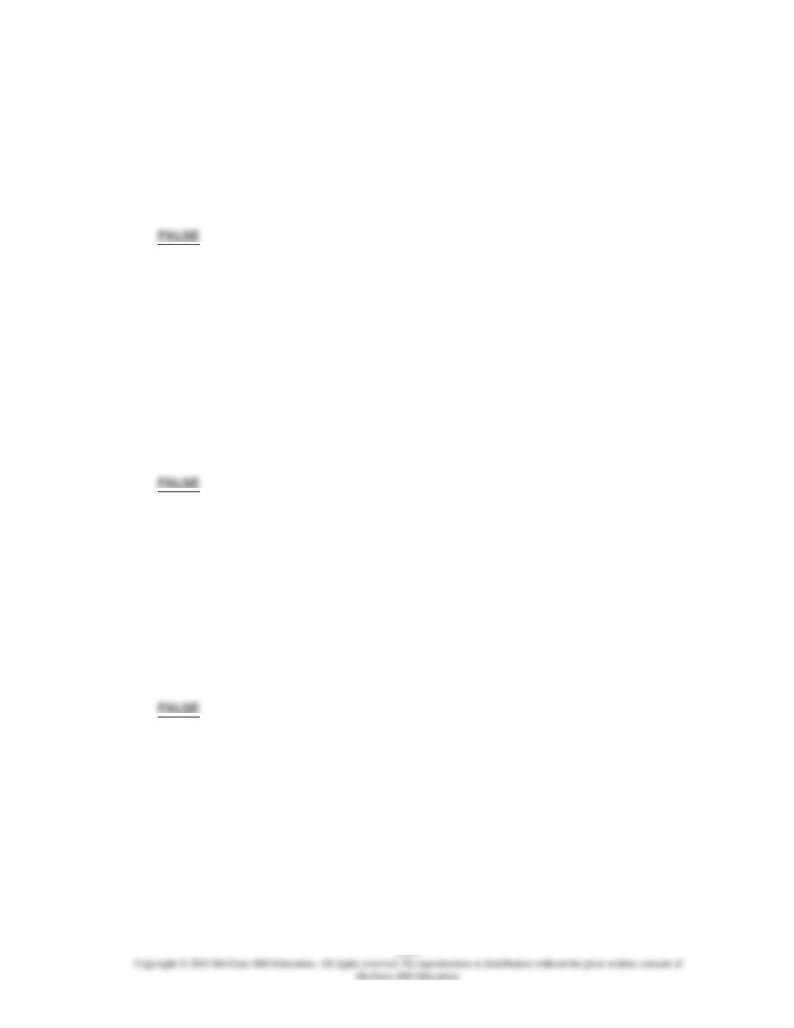
Difficulty: 1 Easy
Learning Objective: 01-03 Distinguish microeconomics from macroeconomics and positive economics from normative
economics.
Topic: Positive and normative statements
217.
Positive statements are expressions of value judgments.
AACSB: Analytic
Accessibility: Keyboard Navigation
Blooms: Remember
Difficulty: 1 Easy
Learning Objective: 01-03 Distinguish microeconomics from macroeconomics and positive economics from normative
economics.
Topic: Positive and normative statements
218.
Macroeconomics explains the behavior of individual households and business firms;
microeconomics is concerned with the behavior of aggregates or the economy as a whole.
AACSB: Analytic
Accessibility: Keyboard Navigation
Blooms: Remember
Difficulty: 1 Easy
Learning Objective: 01-03 Distinguish microeconomics from macroeconomics and positive economics from normative
economics.
Topic: Microeconomics and macroeconomics
219.
Purposeful behavior implies that everyone will make identical choices.
AACSB: Reflective Thinking
Accessibility: Keyboard Navigation
Blooms: Understand
Difficulty: 2 Medium
Learning Objective: 01-01 Define economics and the features of the economic perspective.
Topic: Economic perspective
Topic: Economics
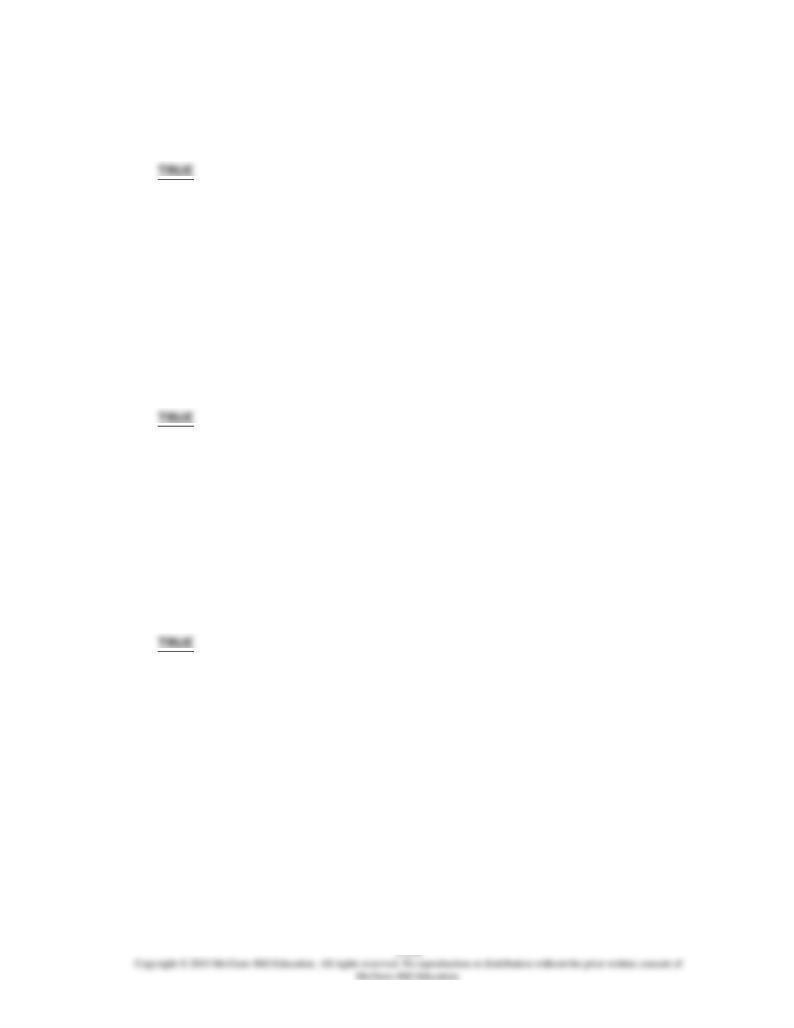
220.
Marginal analysis means that decision makers compare the extra benefits with the extra
costs of a specific choice.
AACSB: Analytic
Accessibility: Keyboard Navigation
Blooms: Remember
Difficulty: 1 Easy
Learning Objective: 01-01 Define economics and the features of the economic perspective.
Topic: Economic perspective
Topic: Economics
221.
Rational individuals may make different choices because their preferences and
circumstances differ.
AACSB: Analytic
Accessibility: Keyboard Navigation
Blooms: Understand
Difficulty: 2 Medium
Learning Objective: 01-01 Define economics and the features of the economic perspective.
Topic: Economic perspective
Topic: Economics
222.
Choices entail marginal costs because resources are scarce.
AACSB: Analytic
Accessibility: Keyboard Navigation
Blooms: Understand
Difficulty: 2 Medium
Learning Objective: 01-01 Define economics and the features of the economic perspective.
Topic: Economic perspective
Topic: Economics

223.
The production possibilities curve shows various combinations of two products that an
economy can produce when achieving full employment.
AACSB: Analytic
Accessibility: Keyboard Navigation
Blooms: Remember
Difficulty: 1 Easy
Learning Objective: 01-06 Apply production possibilities analysis; increasing opportunity costs; and economic growth.
Topic: Production possibilities model
224.
The entrepreneur's sole function is to combine other resources (land, labor, and capital) in
the production of some good or service.
AACSB: Analytic
Accessibility: Keyboard Navigation
Blooms: Remember
Difficulty: 1 Easy
Learning Objective: 01-05 List the categories of scarce resources and delineate the nature of society's economizing
problem.
Topic: Society's economizing problem
225.
Products and services are scarce because resources are scarce.
AACSB: Analytic
Accessibility: Keyboard Navigation
Blooms: Understand
Difficulty: 2 Medium
Learning Objective: 01-05 List the categories of scarce resources and delineate the nature of society's economizing
problem.
Topic: Society's economizing problem
226.
An economy cannot produce at a point outside of its production possibilities curve
because human economic wants are insatiable.
AACSB: Analytic

Accessibility: Keyboard Navigation
Blooms: Understand
Difficulty: 2 Medium
Learning Objective: 01-06 Apply production possibilities analysis; increasing opportunity costs; and economic growth.
Topic: Production possibilities model
227.
The process by which capital goods are accumulated is known as investment.
AACSB: Analytic
Accessibility: Keyboard Navigation
Blooms: Remember
Difficulty: 1 Easy
Learning Objective: 01-07 Explain how economic growth and international trade increase consumption possibilities.
Topic: Unemployment, growth, and the future
228.
The present choice of position on the production possibilities curve will not influence the
future location of the curve.
AACSB: Reflective Thinking
Accessibility: Keyboard Navigation
Blooms: Understand
Difficulty: 2 Medium
Learning Objective: 01-07 Explain how economic growth and international trade increase consumption possibilities.
Topic: Unemployment, growth, and the future
229.
Although sleeping in on a work day or school day has an opportunity cost, sleeping late on
the weekend does not.
AACSB: Reflective Thinking
Accessibility: Keyboard Navigation
Blooms: Apply
Difficulty: 2 Medium
Learning Objective: 01-01 Define economics and the features of the economic perspective.
Topic: Economic perspective
Topic: Economics

230.
Refer to the diagram. Given production possibilities curve
a
, the combination of civilian
and war goods indicated by point
X
is unattainable to this economy.
AACSB: Reflective Thinking
Blooms: Apply
Difficulty: 2 Medium
Learning Objective: 01-06 Apply production possibilities analysis; increasing opportunity costs; and economic growth.
Topic: Production possibilities model
Type: Graph
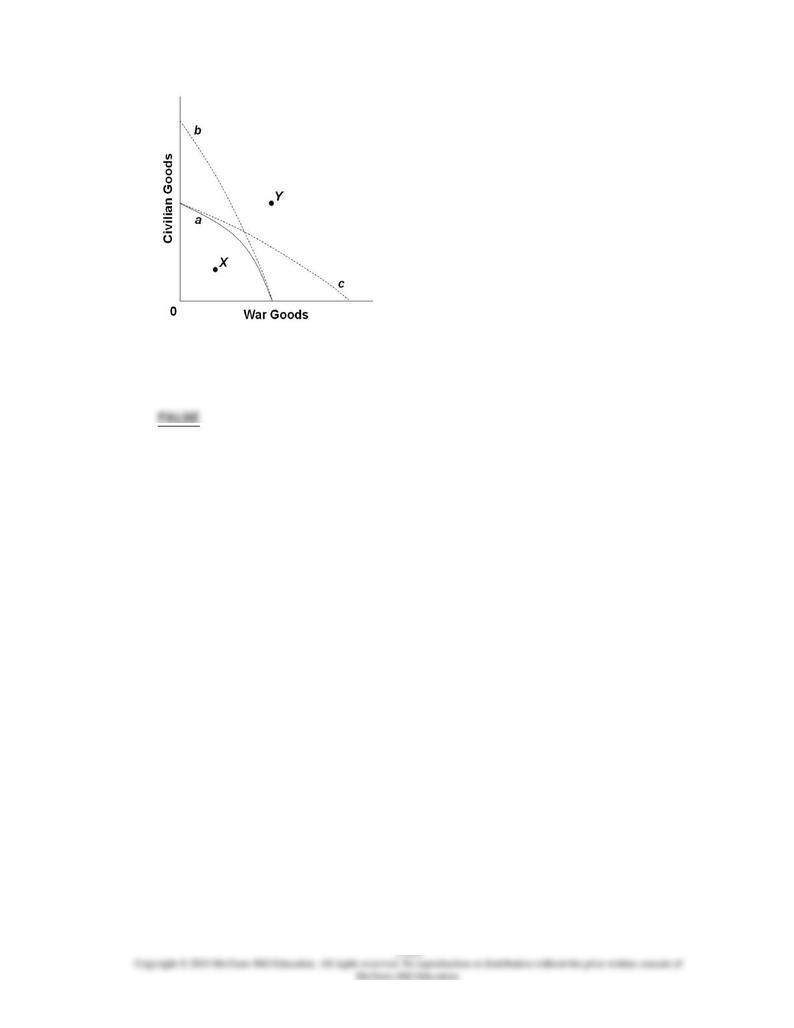
231.
Refer to the diagram. Given production possibilities curve
a
, point
Y
indicates that society
is failing to use available resources efficiently.
AACSB: Reflective Thinking
Blooms: Apply
Difficulty: 2 Medium
Learning Objective: 01-06 Apply production possibilities analysis; increasing opportunity costs; and economic growth.
Topic: Production possibilities model
Type: Graph

232.
Refer to the diagram. The movement from curve
a
to curve
b
could be explained by an
increase in the quantity and/or quality of society's productive resources.
AACSB: Reflective Thinking
Blooms: Apply
Difficulty: 2 Medium
Learning Objective: 01-06 Apply production possibilities analysis; increasing opportunity costs; and economic growth.
Topic: Production possibilities model
Type: Graph

233.
Refer to the diagram. The movement from curve
a
to curve
c
suggests an improvement in
civilian goods technology but not in war goods technology.
AACSB: Reflective Thinking
Blooms: Apply
Difficulty: 2 Medium
Learning Objective: 01-06 Apply production possibilities analysis; increasing opportunity costs; and economic growth.
Topic: Production possibilities model
Type: Graph
234.
An economy will always operate at some point on its production possibilities curve.
AACSB: Analytic
Accessibility: Keyboard Navigation
Blooms: Understand
Difficulty: 2 Medium
Learning Objective: 01-07 Explain how economic growth and international trade increase consumption possibilities.
Topic: Unemployment, growth, and the future
235.
In drawing a particular budget line, money income and the prices of the two products are
fixed.
AACSB: Analytic
Accessibility: Keyboard Navigation

Blooms: Remember
Difficulty: 1 Easy
Learning Objective: 01-04 Explain the individual's economizing problem and how trade-offs; opportunity costs; and
attainable combinations can be illustrated with budget lines.
Topic: Individual's economizing problem-budget lines
236.
The lower the consumer's income, the higher his or her budget line.
AACSB: Analytic
Accessibility: Keyboard Navigation
Blooms: Understand
Difficulty: 2 Medium
Learning Objective: 01-04 Explain the individual's economizing problem and how trade-offs; opportunity costs; and
attainable combinations can be illustrated with budget lines.
Topic: Individual's economizing problem-budget lines
Multiple Choice Questions
237.
If we say that two variables are directly related, this means that:
AACSB: Analytic
Accessibility: Keyboard Navigation
Blooms: Remember
Difficulty: 1 Easy
Learning Objective: 01-08 (Appendix) Understand graphs; curves; and slopes as they relate to economics.
Topic: Graphs and their meaning
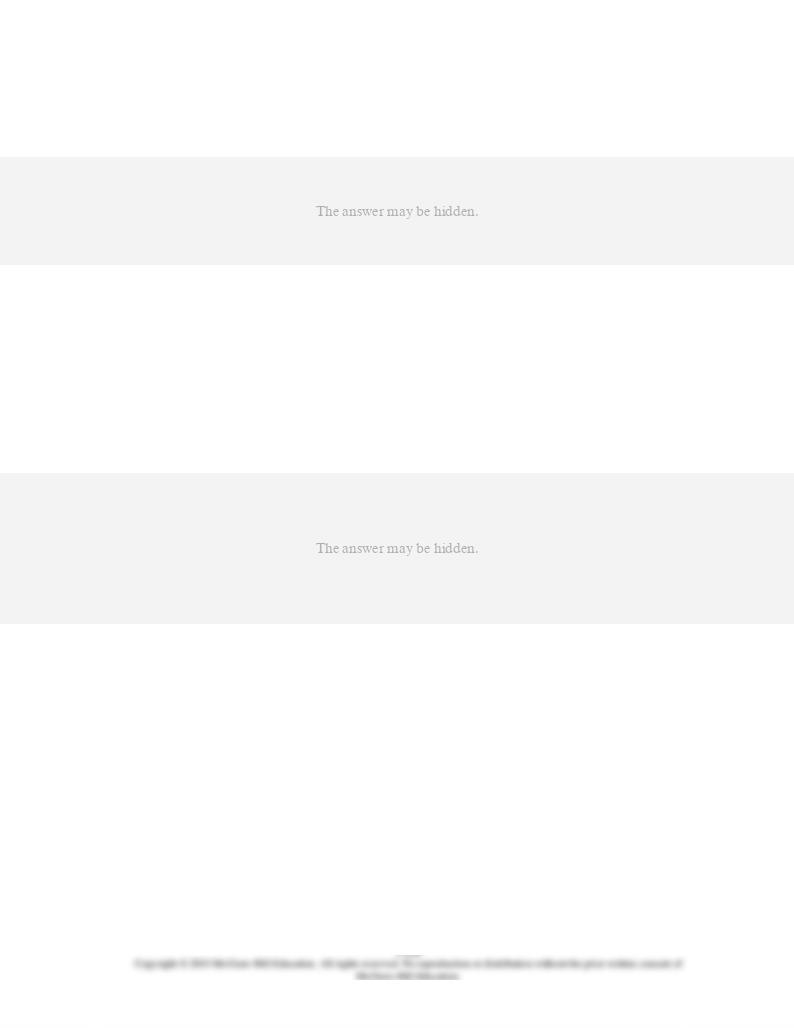
238.
If we say that two variables are inversely related, this means that:
AACSB: Analytic
Accessibility: Keyboard Navigation
Blooms: Remember
Difficulty: 1 Easy
Learning Objective: 01-08 (Appendix) Understand graphs; curves; and slopes as they relate to economics.
Topic: Graphs and their meaning
239.
Economists:
AACSB: Analytic
Accessibility: Keyboard Navigation
Blooms: Remember
Difficulty: 1 Easy
Learning Objective: 01-08 (Appendix) Understand graphs; curves; and slopes as they relate to economics.
Topic: Graphs and their meaning
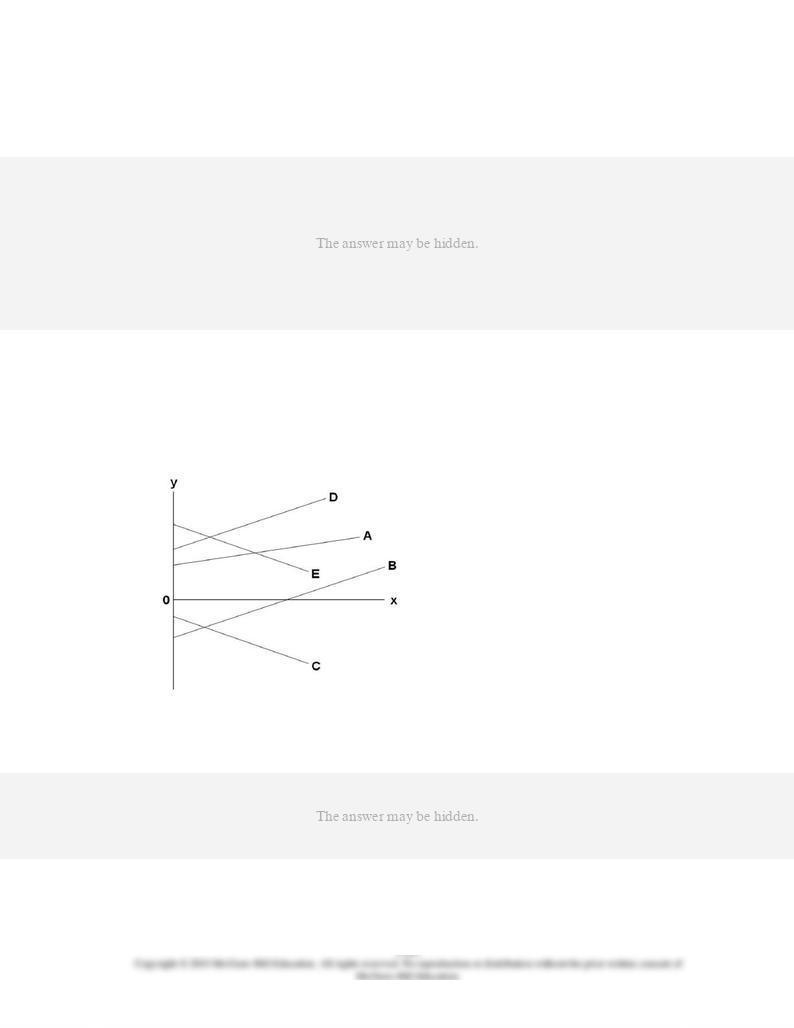
240.
Which of the following statements is correct?
AACSB: Analytic
Accessibility: Keyboard Navigation
Blooms: Remember
Difficulty: 1 Easy
Learning Objective: 01-08 (Appendix) Understand graphs; curves; and slopes as they relate to economics.
Topic: Graphs and their meaning
241.
Refer to the diagram. Which line(s) show(s) a positive relationship between
x
and
y
?
AACSB: Analytic
Blooms: Understand

Difficulty: 2 Medium
Learning Objective: 01-08 (Appendix) Understand graphs; curves; and slopes as they relate to economics.
Topic: Graphs and their meaning
Type: Graph
242.
Refer to the diagram. Which line(s) show(s) a negative relationship between
x
and
y
?
AACSB: Analytic
Blooms: Understand
Difficulty: 2 Medium
Learning Objective: 01-08 (Appendix) Understand graphs; curves; and slopes as they relate to economics.
Topic: Graphs and their meaning
Type: Graph

243.
Refer to the diagram. Which line(s) show(s) a positive vertical intercept?
AACSB: Analytic
Blooms: Understand
Difficulty: 2 Medium
Learning Objective: 01-08 (Appendix) Understand graphs; curves; and slopes as they relate to economics.
Topic: Graphs and their meaning
Type: Graph
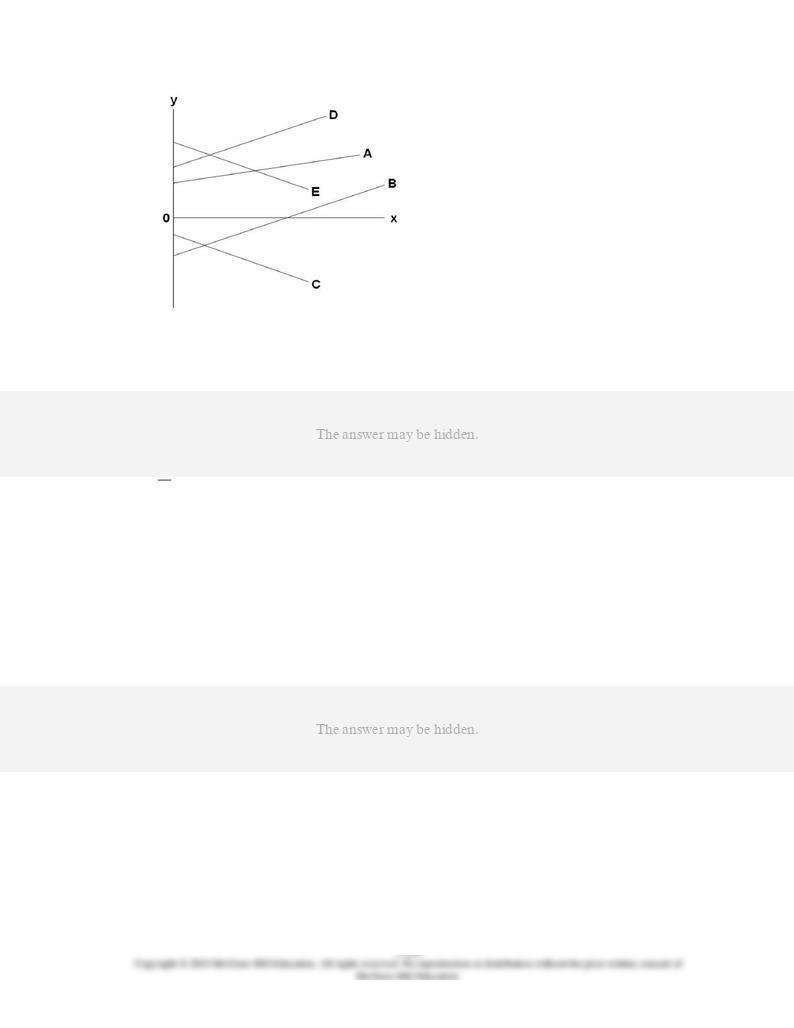
244.
Refer to the diagram. Which line(s) show(s) a negative vertical intercept?
AACSB: Analytic
Blooms: Understand
Difficulty: 2 Medium
Learning Objective: 01-08 (Appendix) Understand graphs; curves; and slopes as they relate to economics.
Topic: Graphs and their meaning
Type: Graph
245.
If two variables are inversely related, then as the value of one variable:
AACSB: Analytic
Accessibility: Keyboard Navigation
Blooms: Remember
Difficulty: 1 Easy
Learning Objective: 01-08 (Appendix) Understand graphs; curves; and slopes as they relate to economics.
Topic: Graphs and their meaning

246.
If a positive relationship exists between
x
and
y
:
AACSB: Analytic
Accessibility: Keyboard Navigation
Blooms: Understand
Difficulty: 2 Medium
Learning Objective: 01-08 (Appendix) Understand graphs; curves; and slopes as they relate to economics.
Topic: Graphs and their meaning
247.
Answer on the basis of the relationships shown in the four figures. The amount of
y
is
directly related to the amount of
x
in:
AACSB: Analytic
Blooms: Understand
Difficulty: 2 Medium
Learning Objective: 01-08 (Appendix) Understand graphs; curves; and slopes as they relate to economics.
Topic: Graphs and their meaning
Type: Graph
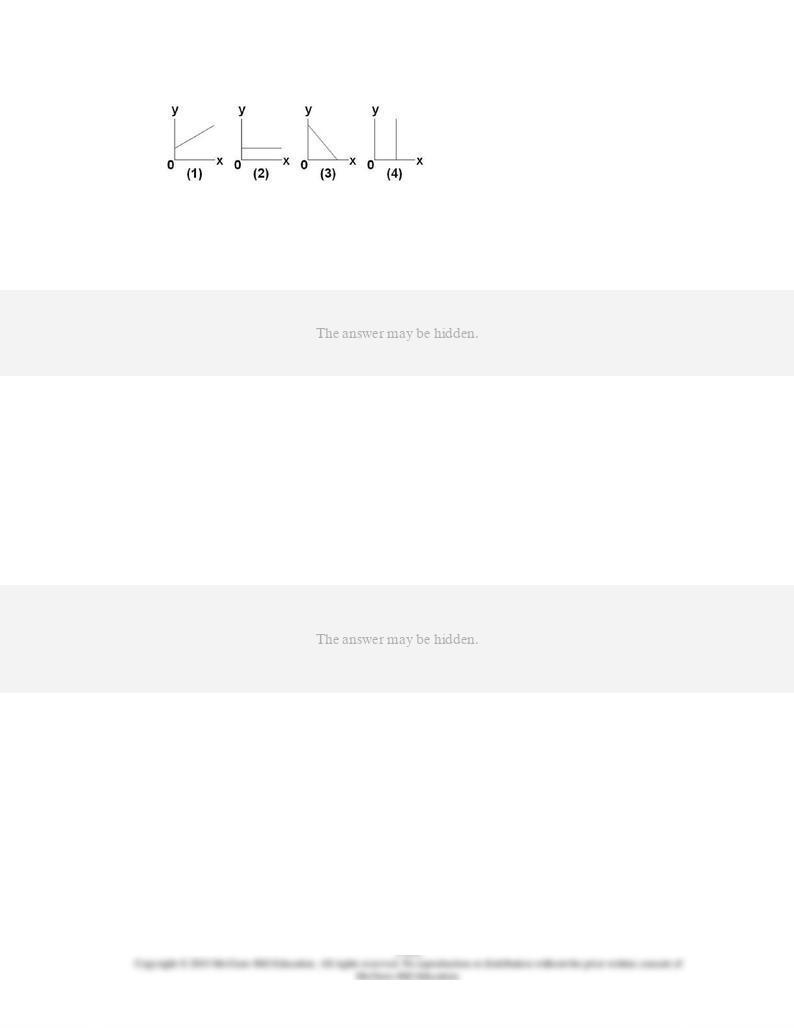
248.
Answer on the basis of the relationships shown in the four figures. The amount of
y
is
inversely related to the amount of
x
in:
AACSB: Analytic
Blooms: Understand
Difficulty: 2 Medium
Learning Objective: 01-08 (Appendix) Understand graphs; curves; and slopes as they relate to economics.
Topic: Graphs and their meaning
Type: Graph
249.
If price (
P
) and quantity (
Q
) are directly related, this means that:
AACSB: Analytic
Accessibility: Keyboard Navigation
Blooms: Understand
Difficulty: 2 Medium
Learning Objective: 01-08 (Appendix) Understand graphs; curves; and slopes as they relate to economics.
Topic: Graphs and their meaning
Type: Graph

250.
Answer the question on the basis of the following information. Assume that if the interest
rate that businesses must pay to borrow funds were 20 percent, it would be unprofitable
for businesses to invest in new machinery and equipment, so investment would be zero.
But if the interest rate were 16 percent, businesses would find it profitable to invest $10
billion. If the interest rate were 12 percent, $20 billion would be invested. Assume that
total investment continues to increase by $10 billion for each successive 4 percentage
point decline in the interest rate.
Refer to the information. Which of the following is an accurate verbal statement of the
described relationship?
AACSB: Analytic
Accessibility: Keyboard Navigation
Blooms: Apply
Difficulty: 2 Medium
Learning Objective: 01-08 (Appendix) Understand graphs; curves; and slopes as they relate to economics.
Topic: Graphs and their meaning
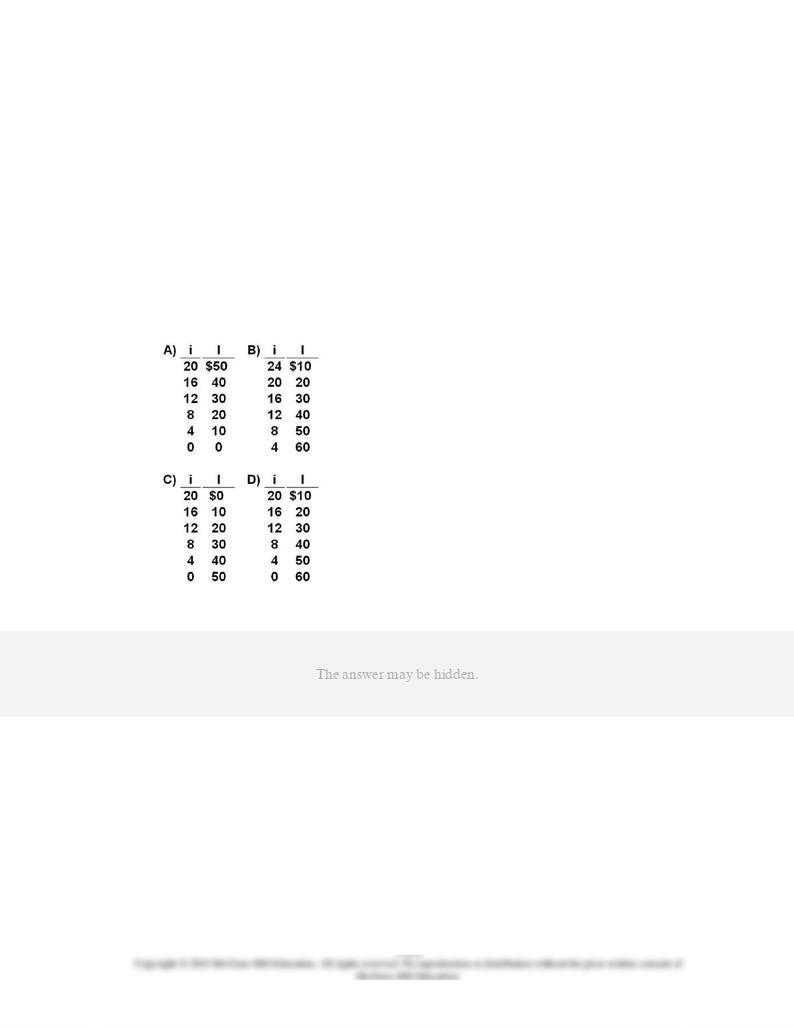
251.
Answer the question on the basis of the following information. Assume that if the interest
rate that businesses must pay to borrow funds were 20 percent, it would be unprofitable
for businesses to invest in new machinery and equipment, so investment would be zero.
But if the interest rate were 16 percent, businesses would find it profitable to invest $10
billion. If the interest rate were 12 percent, $20 billion would be invested. Assume that
total investment continues to increase by $10 billion for each successive 4 percentage
point decline in the interest rate.
Refer to the information. Using
i
and
I
to indicate the interest rate and investment (in
billions of dollars) respectively, which of the following is the correct tabular presentation
of the described relationship?
AACSB: Analytic
Blooms: Understand
Difficulty: 2 Medium
Learning Objective: 01-08 (Appendix) Understand graphs; curves; and slopes as they relate to economics.
Topic: Graphs and their meaning
Type: Table

252.
Answer the question on the basis of the following information. Assume that if the interest
rate that businesses must pay to borrow funds were 20 percent, it would be unprofitable
for businesses to invest in new machinery and equipment, so investment would be zero.
But if the interest rate were 16 percent, businesses would find it profitable to invest $10
billion. If the interest rate were 12 percent, $20 billion would be invested. Assume that
total investment continues to increase by $10 billion for each successive 4 percentage
point decline in the interest rate.
Refer to the information. Which of the following correctly expresses the indicated
relationship as an equation?
AACSB: Analytic
Accessibility: Keyboard Navigation
Blooms: Apply
Difficulty: 2 Medium
Learning Objective: 01-08 (Appendix) Understand graphs; curves; and slopes as they relate to economics.
Topic: Graphs and their meaning
Type: Table
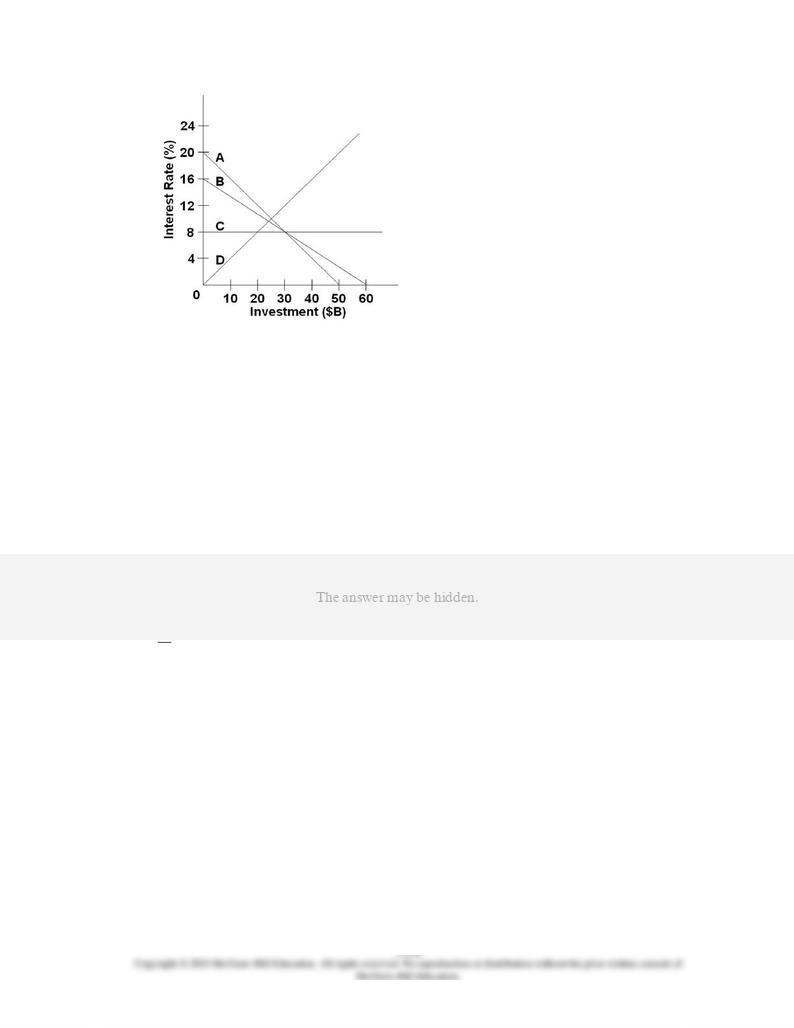
253.
Assume that if the interest rate that businesses must pay to borrow funds were 20
percent, it would be unprofitable for businesses to invest in new machinery and
equipment, so investment would be zero. But if the interest rate were 16 percent,
businesses would find it profitable to invest $10 billion. If the interest rate were 12
percent, $20 billion would be invested. Assume that total investment continues to increase
by $10 billion for each successive 4 percentage point decline in the interest rate. Refer to
the graph. Which of the following is the correct graphical presentation of the indicated
relationship?
AACSB: Analytic
Blooms: Understand
Difficulty: 2 Medium
Learning Objective: 01-08 (Appendix) Understand graphs; curves; and slopes as they relate to economics.
Topic: Graphs and their meaning
Type: Graph
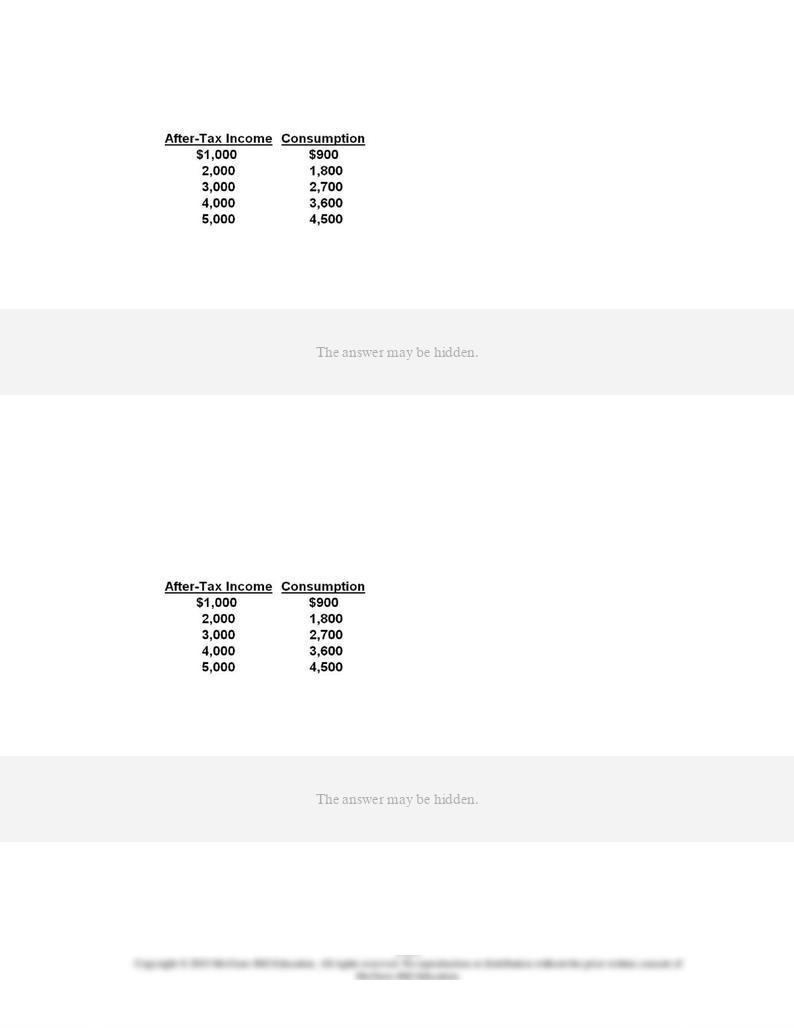
254.
Answer the question on the basis of the following data:
The data suggest that:
AACSB: Analytic
Blooms: Understand
Difficulty: 2 Medium
Learning Objective: 01-08 (Appendix) Understand graphs; curves; and slopes as they relate to economics.
Topic: Graphs and their meaning
Type: Table
255.
Answer the question on the basis of the following data:
The data indicate that:
AACSB: Analytic
Blooms: Apply
Difficulty: 2 Medium
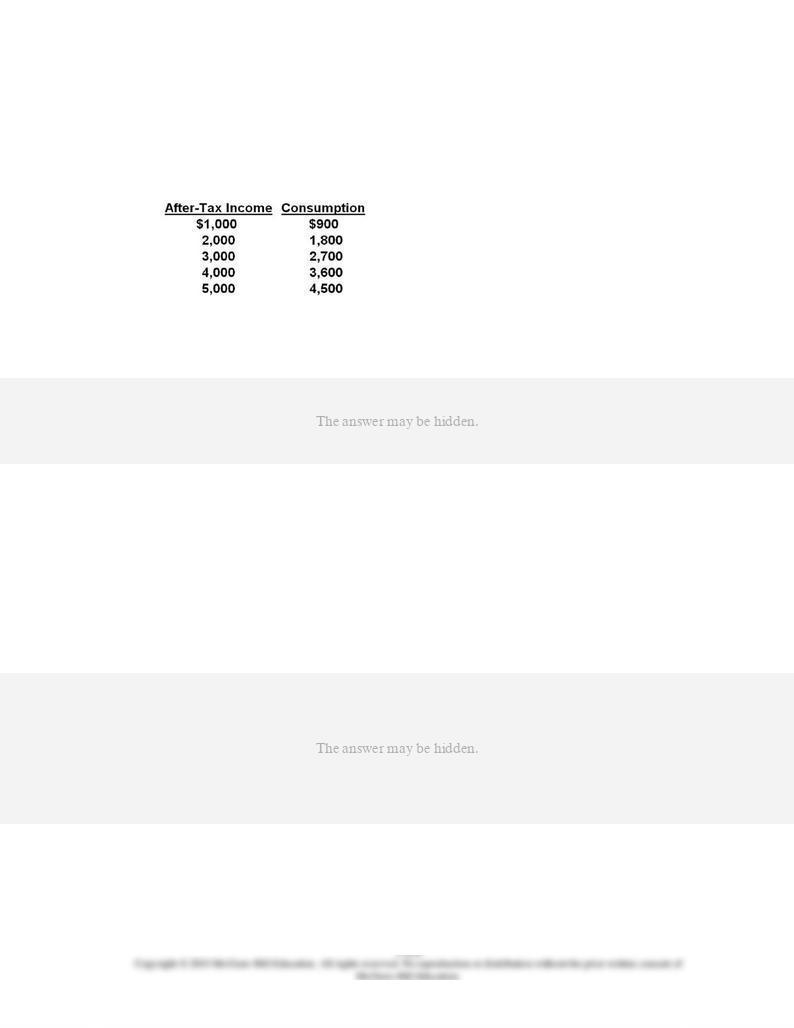
Learning Objective: 01-08 (Appendix) Understand graphs; curves; and slopes as they relate to economics.
Topic: Graphs and their meaning
Type: Table
256.
Answer the question on the basis of the following data:
The data suggest that:
AACSB: Reflective Thinking
Blooms: Analyze
Difficulty: 3 Hard
Learning Objective: 01-08 (Appendix) Understand graphs; curves; and slopes as they relate to economics.
Topic: Graphs and their meaning
Type: Table
257.
The slope of a straight line can be determined by:
AACSB: Analytic
Accessibility: Keyboard Navigation
Blooms: Remember
Difficulty: 1 Easy
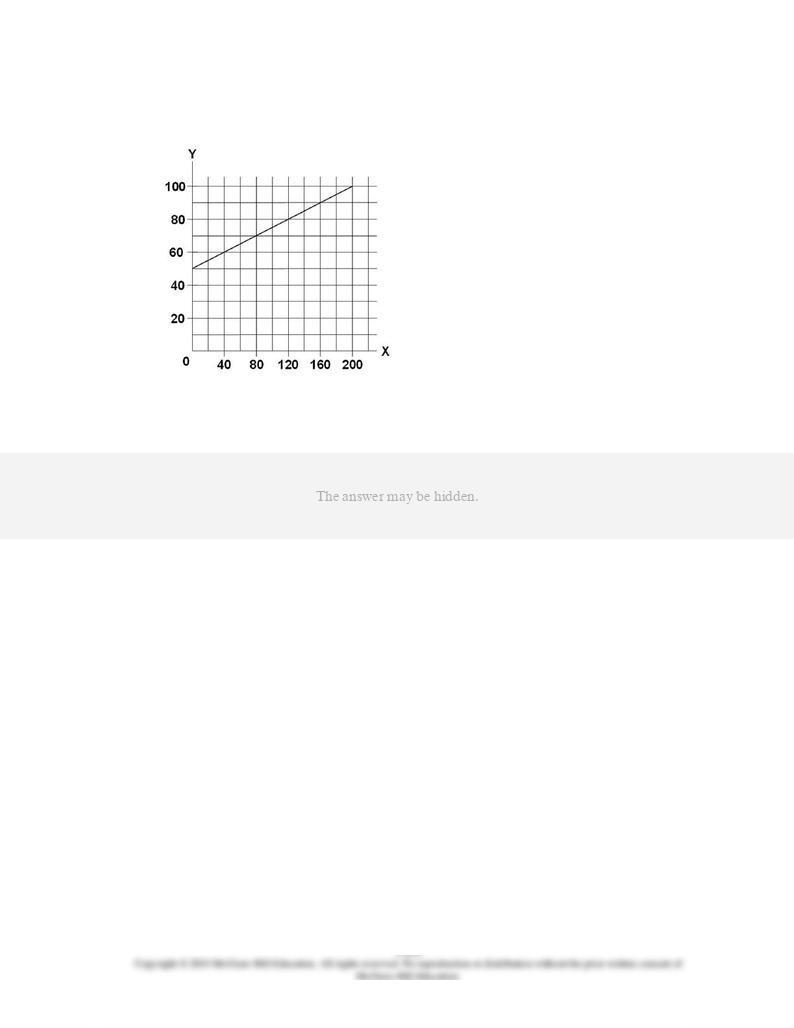
Learning Objective: 01-08 (Appendix) Understand graphs; curves; and slopes as they relate to economics.
Topic: Graphs and their meaning
258.
Refer to the diagram. The variables
X
and
Y
are:
AACSB: Analytic
Blooms: Understand
Difficulty: 2 Medium
Learning Objective: 01-08 (Appendix) Understand graphs; curves; and slopes as they relate to economics.
Topic: Graphs and their meaning
Type: Graph
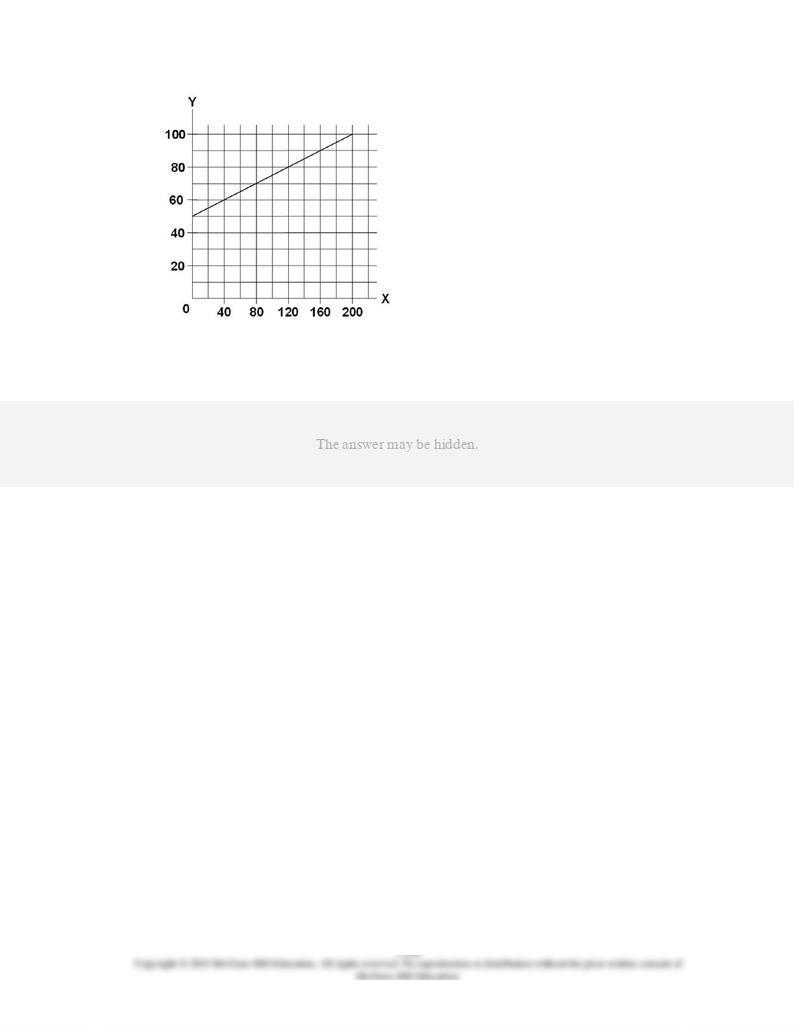
259.
Refer to the diagram. The vertical intercept:
AACSB: Analytic
Blooms: Understand
Difficulty: 2 Medium
Learning Objective: 01-08 (Appendix) Understand graphs; curves; and slopes as they relate to economics.
Topic: Graphs and their meaning
Type: Graph
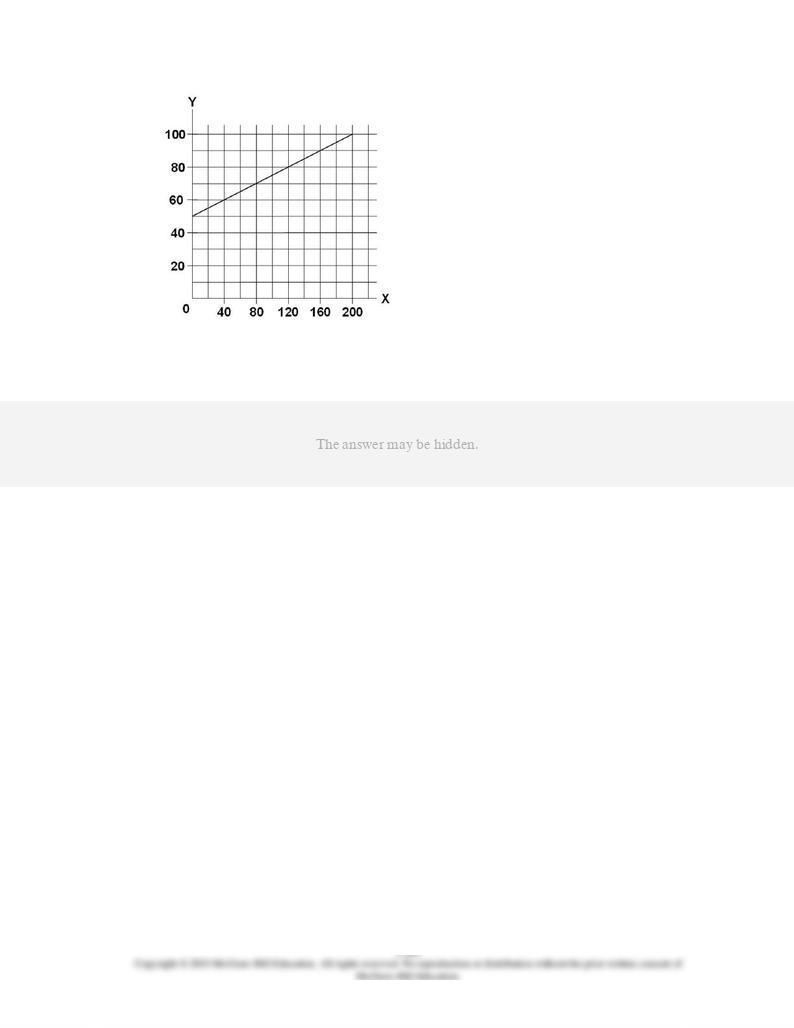
260.
Refer to the diagram. The slope of the line:
AACSB: Analytic
Blooms: Apply
Difficulty: 2 Medium
Learning Objective: 01-08 (Appendix) Understand graphs; curves; and slopes as they relate to economics.
Topic: Graphs and their meaning
Type: Graph

261.
Refer to the diagram. The equation that shows the relationship between
Y
and
X
is:
D.
Y
= 1/4
X
- 50.
AACSB: Analytic
Blooms: Apply
Difficulty: 2 Medium
Learning Objective: 01-08 (Appendix) Understand graphs; curves; and slopes as they relate to economics.
Topic: Graphs and their meaning
Type: Graph

262.
Refer to the graph. Which of the following statements is correct?
AACSB: Analytic
Blooms: Understand
Difficulty: 2 Medium
Learning Objective: 01-08 (Appendix) Understand graphs; curves; and slopes as they relate to economics.
Topic: Graphs and their meaning
Type: Graph

263.
Refer to the graph. Which of the following schedules correctly reflects "demand"?
AACSB: Analytic
Blooms: Apply
Difficulty: 2 Medium
Learning Objective: 01-08 (Appendix) Understand graphs; curves; and slopes as they relate to economics.
Topic: Graphs and their meaning
Type: Graph
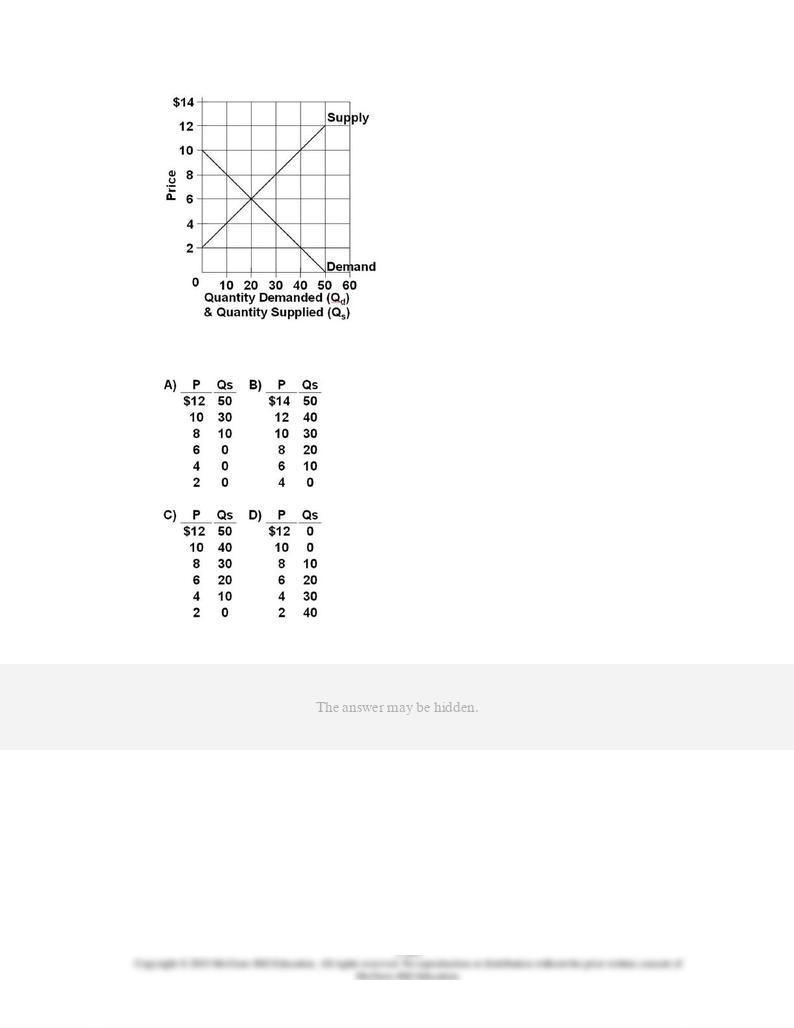
264.
Refer to the graph. Which of the following schedules correctly reflects "supply"?
AACSB: Analytic
Blooms: Apply
Difficulty: 2 Medium
Learning Objective: 01-08 (Appendix) Understand graphs; curves; and slopes as they relate to economics.
Topic: Graphs and their meaning
Type: Graph
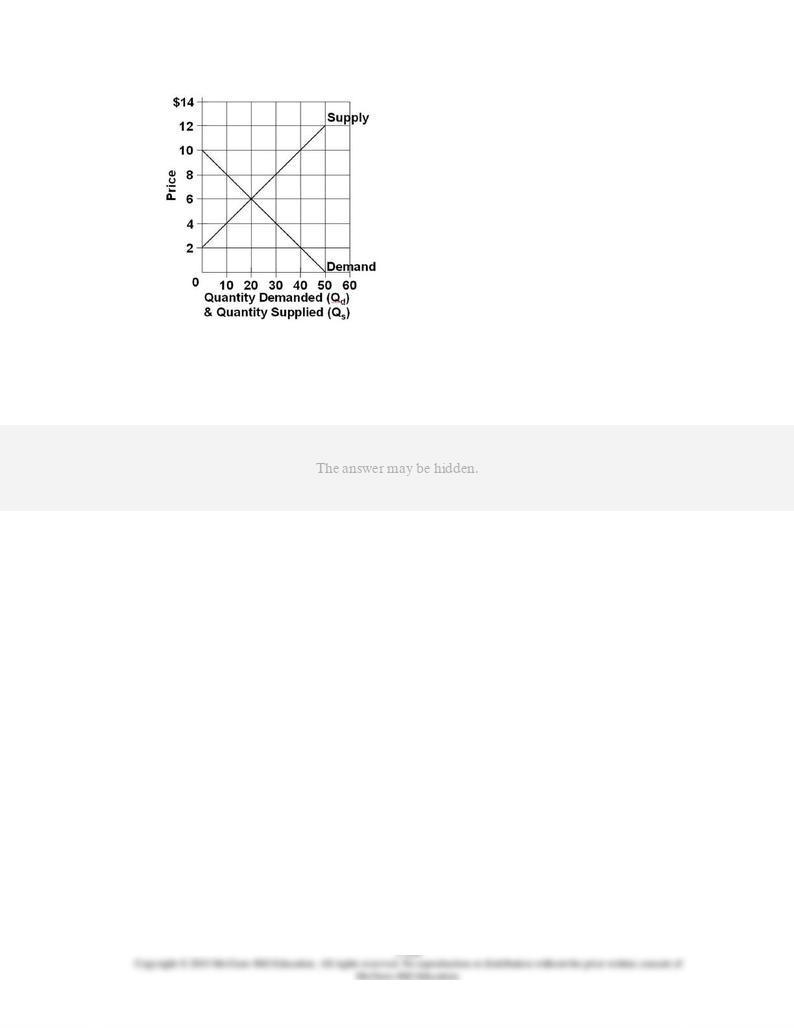
265.
Refer to the graph. Using
Qd
for quantity demanded and
P
for price, which of the following
equations correctly states the demand for this product?
AACSB: Analytic
Blooms: Apply
Difficulty: 2 Medium
Learning Objective: 01-08 (Appendix) Understand graphs; curves; and slopes as they relate to economics.
Topic: Graphs and their meaning
Type: Graph
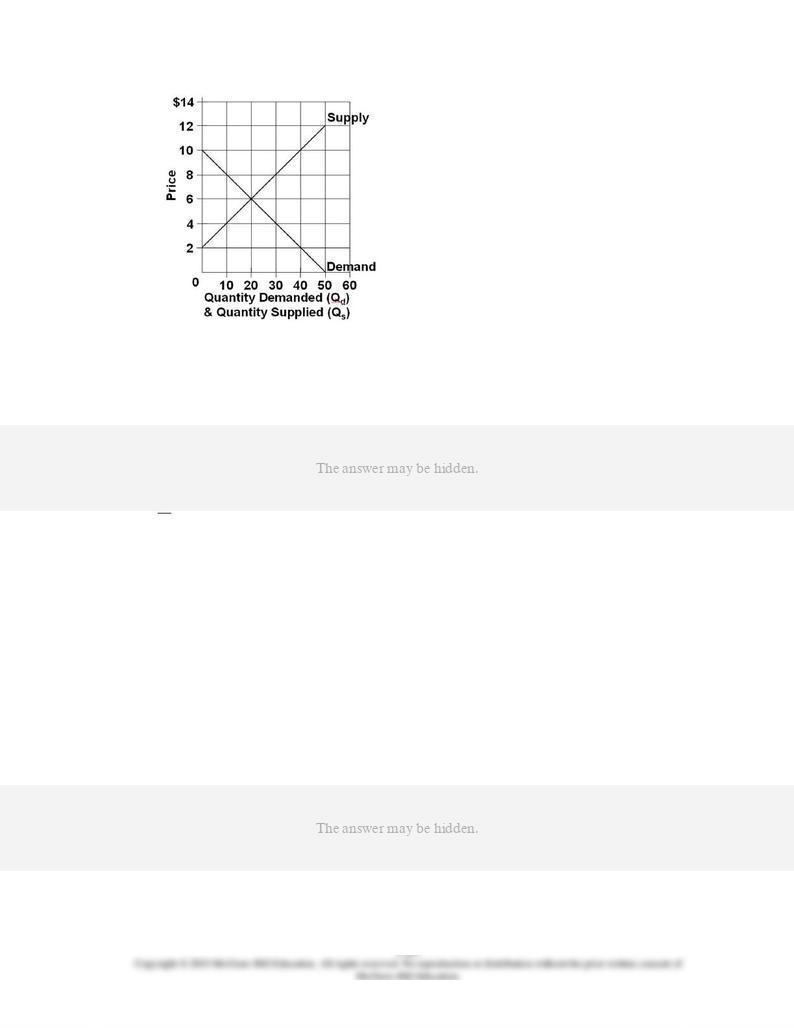
266.
Refer to the graph. Using
Qs
for quantity supplied and
P
for price, which of the following
equations correctly states the supply of this product?
AACSB: Analytic
Blooms: Apply
Difficulty: 2 Medium
Learning Objective: 01-08 (Appendix) Understand graphs; curves; and slopes as they relate to economics.
Topic: Graphs and their meaning
Type: Graph
267.
Assume a household would consume $100 worth of goods and services per week if its
weekly income were zero and would spend an additional $80 per week for each $100 of
additional income. Letting
C
represent consumption and
Y
represent income, the equation
that summarizes this relationship is:
AACSB: Analytic
Accessibility: Keyboard Navigation
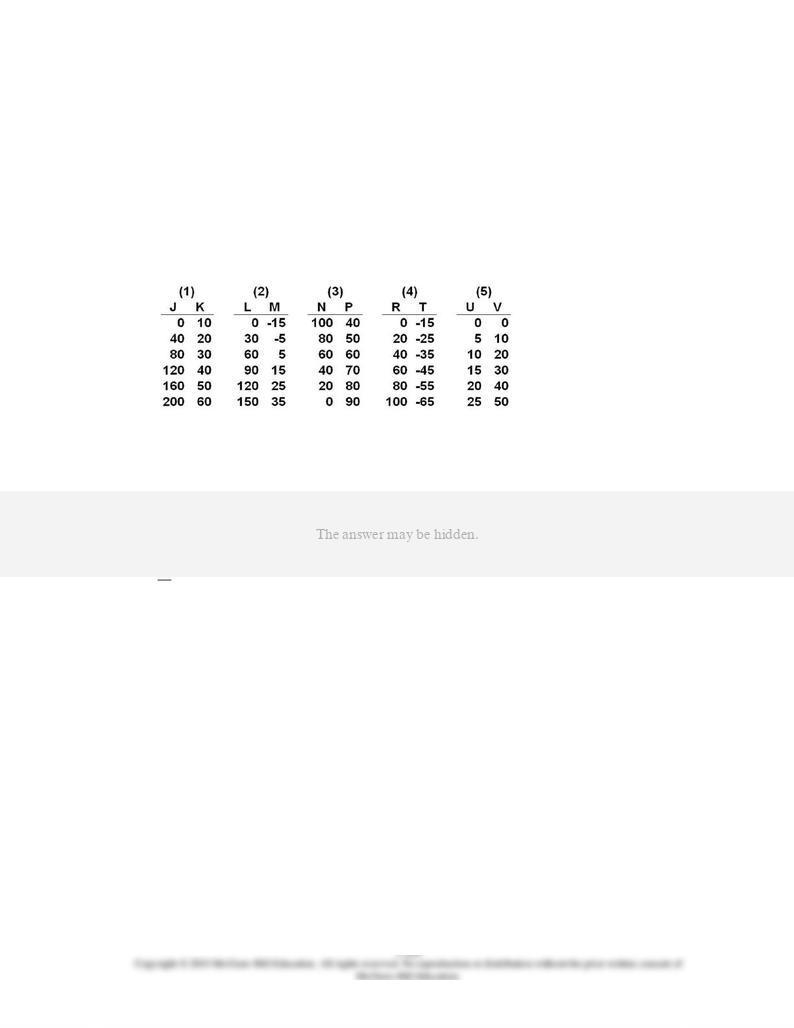
Blooms: Apply
Difficulty: 2 Medium
Learning Objective: 01-08 (Appendix) Understand graphs; curves; and slopes as they relate to economics.
Topic: Graphs and their meaning
268.
Answer the question on the basis of the following five data sets wherein it is assumed that
the variable shown on the left is the independent variable and the one on the right is the
dependent variable. Assume in graphing these data that the independent variable is
shown on the horizontal axis and the dependent variable on the vertical axis.
Refer to the data sets. The variables are directly related in:
AACSB: Analytic
Blooms: Understand
Difficulty: 2 Medium
Learning Objective: 01-08 (Appendix) Understand graphs; curves; and slopes as they relate to economics.
Topic: Graphs and their meaning
Type: Table
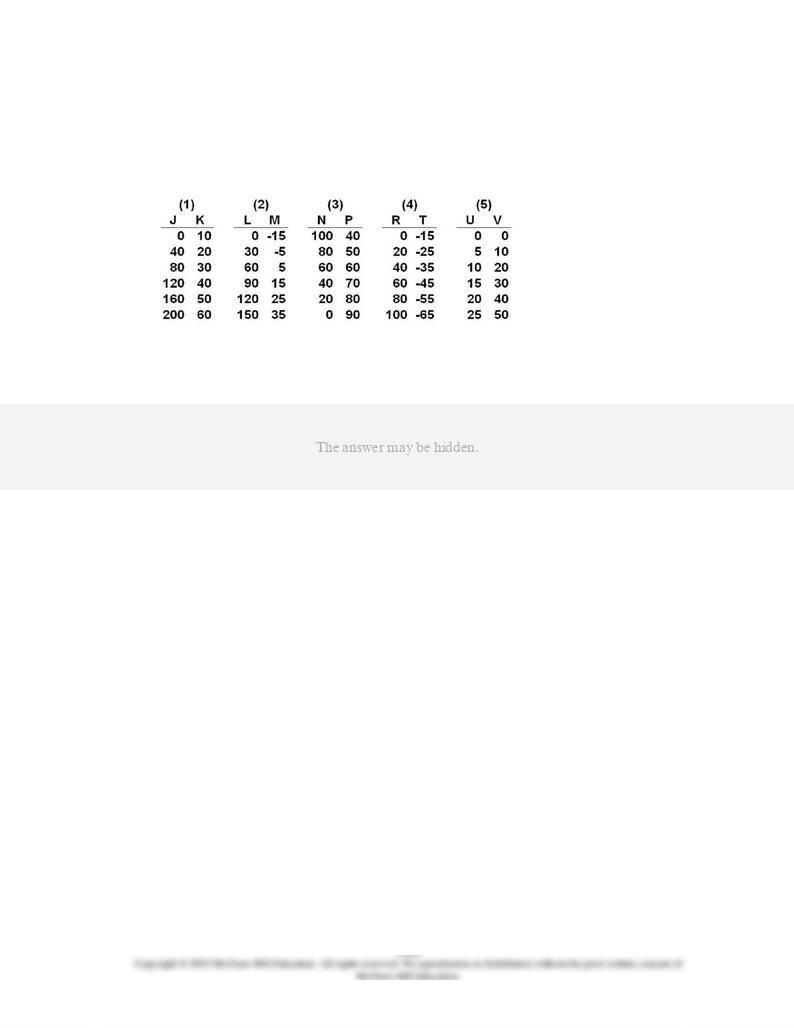
269.
Answer the question on the basis of the following five data sets wherein it is assumed that
the variable shown on the left is the independent variable and the one on the right is the
dependent variable. Assume in graphing these data that the independent variable is
shown on the horizontal axis and the dependent variable on the vertical axis.
Refer to the data sets. The vertical intercept is positive for:
AACSB: Analytic
Blooms: Understand
Difficulty: 2 Medium
Learning Objective: 01-08 (Appendix) Understand graphs; curves; and slopes as they relate to economics.
Topic: Graphs and their meaning
Type: Table
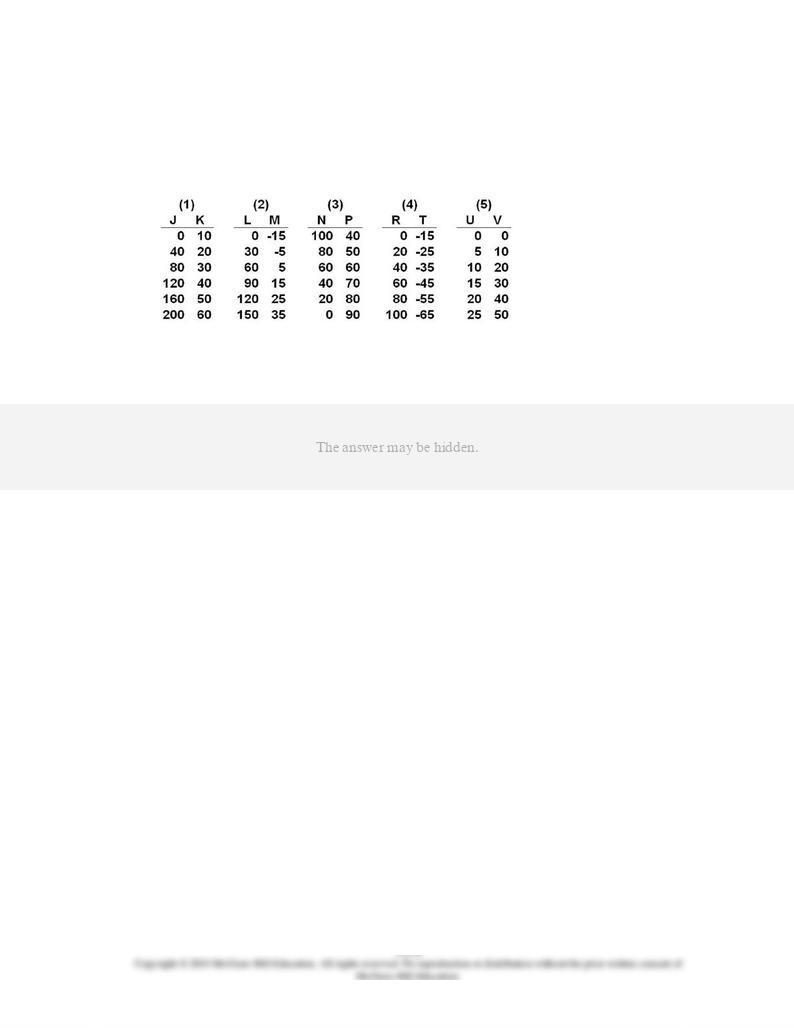
270.
Answer the question on the basis of the following five data sets wherein it is assumed that
the variable shown on the left is the independent variable and the one on the right is the
dependent variable. Assume in graphing these data that the independent variable is
shown on the horizontal axis and the dependent variable on the vertical axis.
Refer to the data sets. The vertical intercept is negative for:
AACSB: Analytic
Blooms: Understand
Difficulty: 2 Medium
Learning Objective: 01-08 (Appendix) Understand graphs; curves; and slopes as they relate to economics.
Topic: Graphs and their meaning
Type: Table
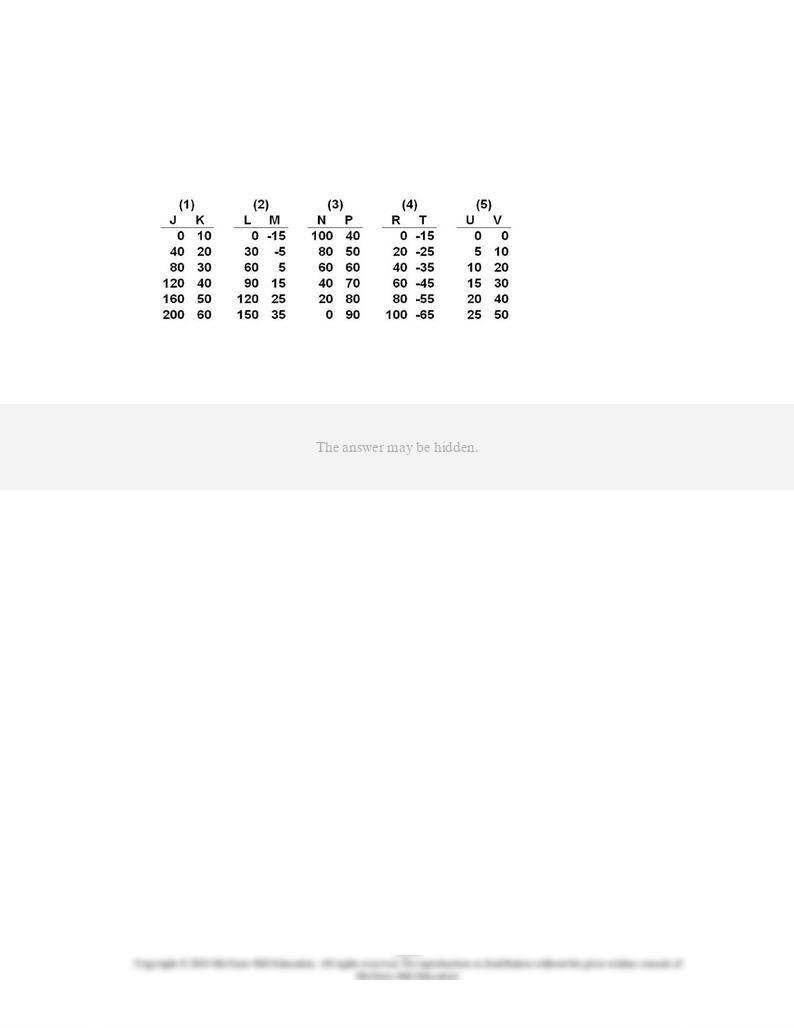
271.
Answer the question on the basis of the following five data sets wherein it is assumed that
the variable shown on the left is the independent variable and the one on the right is the
dependent variable. Assume in graphing these data that the independent variable is
shown on the horizontal axis and the dependent variable on the vertical axis.
Refer to the data sets. The equation for data set 3 is:
AACSB: Analytic
Blooms: Apply
Difficulty: 2 Medium
Learning Objective: 01-08 (Appendix) Understand graphs; curves; and slopes as they relate to economics.
Topic: Graphs and their meaning
Type: Table

272.
Answer the question on the basis of the following five data sets wherein it is assumed that
the variable shown on the left is the independent variable and the one on the right is the
dependent variable. Assume in graphing these data that the independent variable is
shown on the horizontal axis and the dependent variable on the vertical axis.
Refer to the data sets. For which data set(s) is the vertical intercept zero?
AACSB: Analytic
Blooms: Understand
Difficulty: 2 Medium
Learning Objective: 01-08 (Appendix) Understand graphs; curves; and slopes as they relate to economics.
Topic: Graphs and their meaning
Type: Table
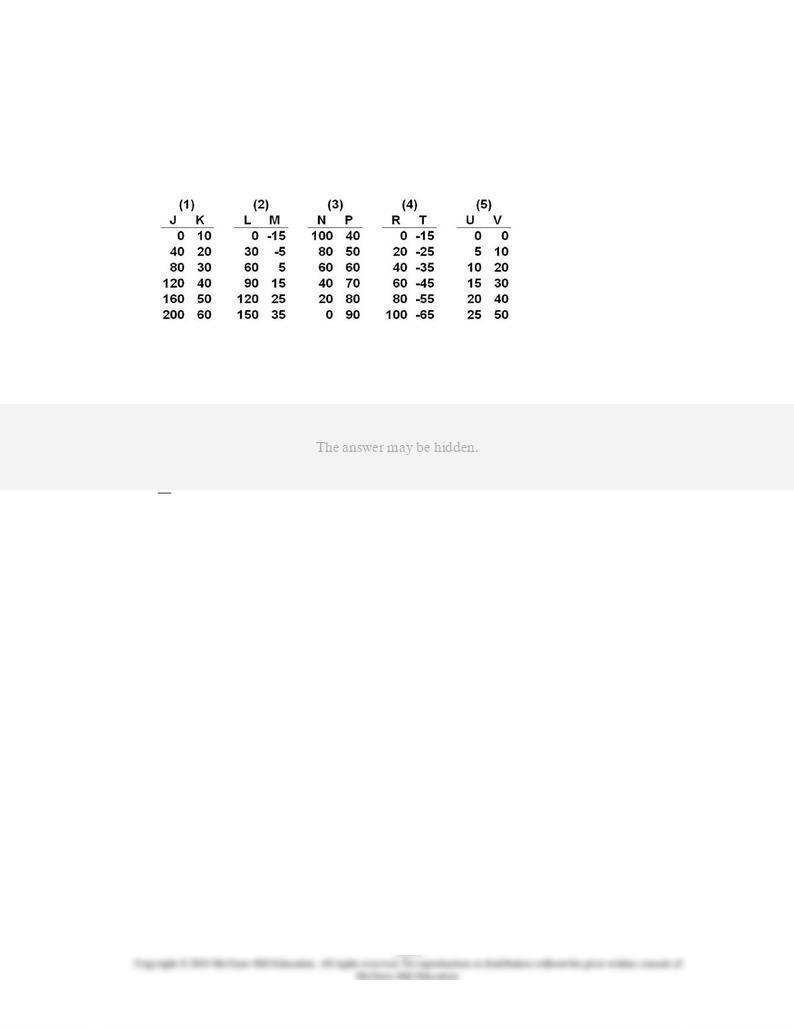
273.
Answer the question on the basis of the following five data sets wherein it is assumed that
the variable shown on the left is the independent variable and the one on the right is the
dependent variable. Assume in graphing these data that the independent variable is
shown on the horizontal axis and the dependent variable on the vertical axis.
Refer to the data sets. The equation for data set 5 is:
AACSB: Analytic
Blooms: Apply
Difficulty: 2 Medium
Learning Objective: 01-08 (Appendix) Understand graphs; curves; and slopes as they relate to economics.
Topic: Graphs and their meaning
Type: Table
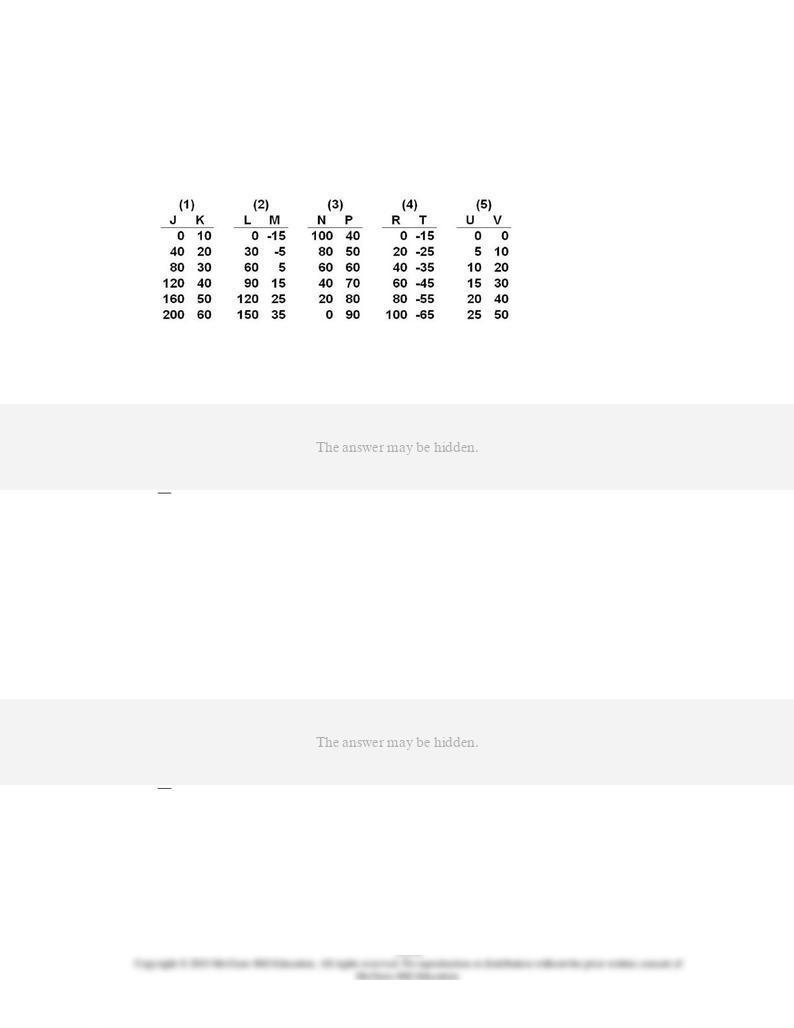
274.
Answer the question on the basis of the following five data sets wherein it is assumed that
the variable shown on the left is the independent variable and the one on the right is the
dependent variable. Assume in graphing these data that the independent variable is
shown on the horizontal axis and the dependent variable on the vertical axis.
Refer to the data sets. Which of the data sets would graph as an upsloping line?
AACSB: Analytic
Blooms: Understand
Difficulty: 2 Medium
Learning Objective: 01-08 (Appendix) Understand graphs; curves; and slopes as they relate to economics.
Topic: Graphs and their meaning
Type: Table
275.
If the equation
y
= 15 - 4
x
was plotted, the:
AACSB: Analytic
Accessibility: Keyboard Navigation
Blooms: Understand
Difficulty: 2 Medium
Learning Objective: 01-08 (Appendix) Understand graphs; curves; and slopes as they relate to economics.
Topic: Graphs and their meaning
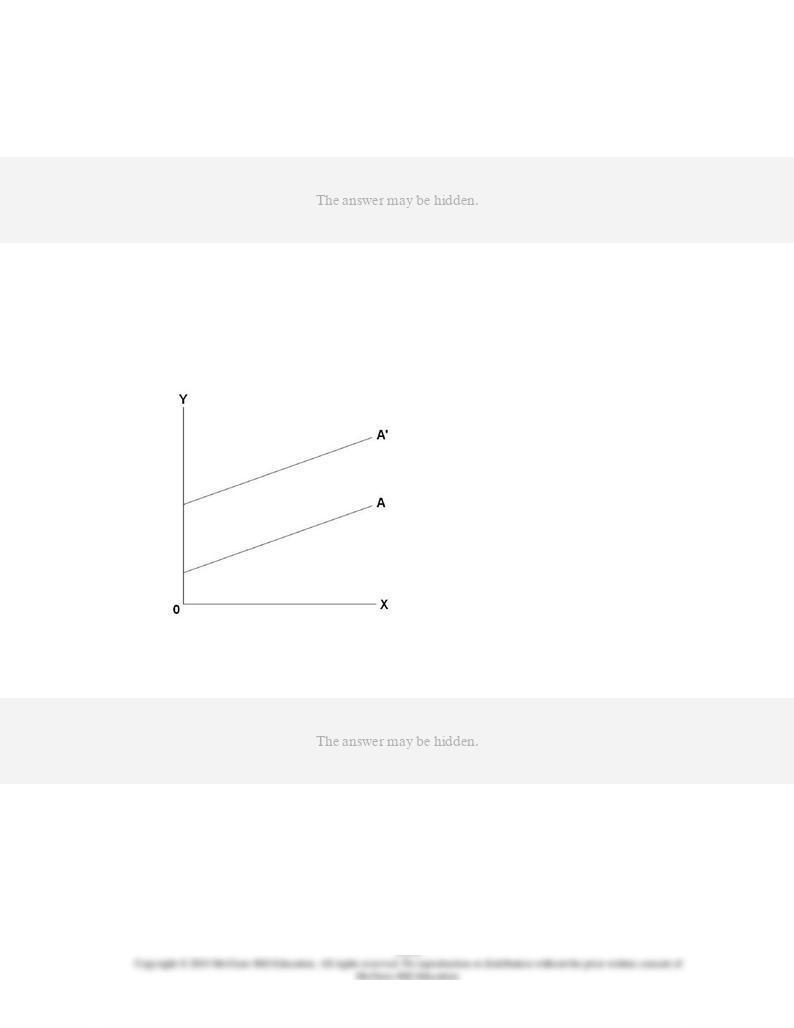
276.
If the equation
y
= -10 + 2.5
x
was plotted:
AACSB: Analytic
Accessibility: Keyboard Navigation
Blooms: Understand
Difficulty: 2 Medium
Learning Objective: 01-08 (Appendix) Understand graphs; curves; and slopes as they relate to economics.
Topic: Graphs and their meaning
277.
The movement from line
A
to line
A
' represents a change in:
AACSB: Analytic
Blooms: Understand
Difficulty: 2 Medium
Learning Objective: 01-08 (Appendix) Understand graphs; curves; and slopes as they relate to economics.
Topic: Graphs and their meaning
Type: Graph
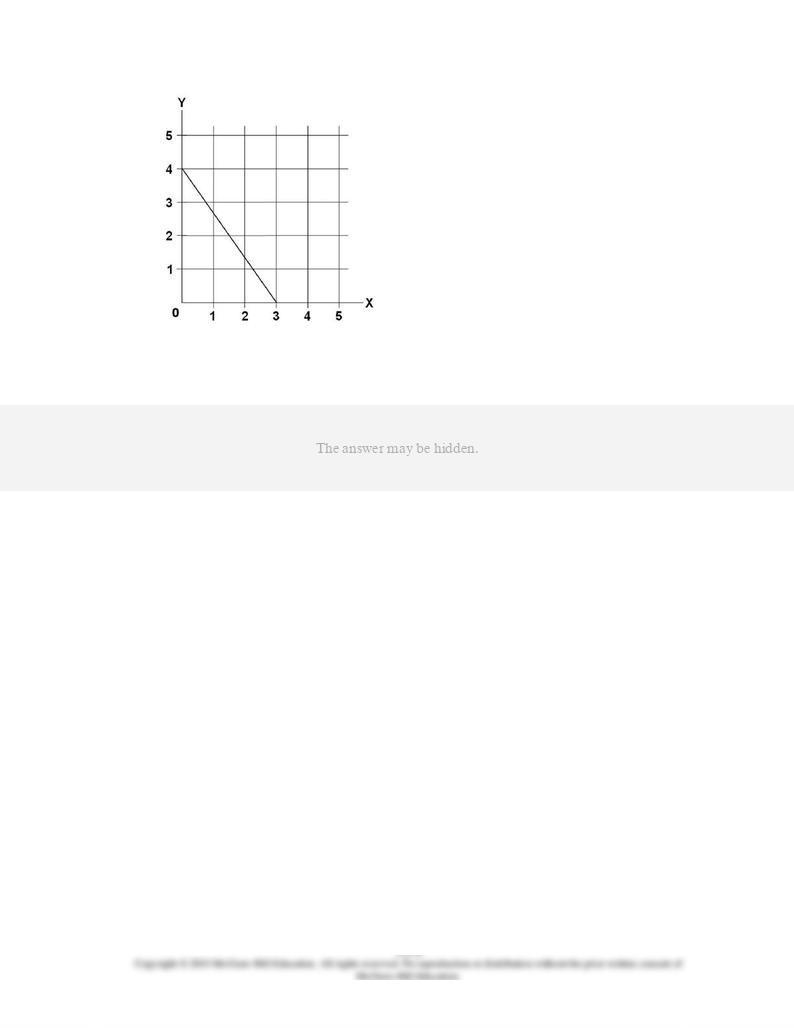
278.
In the diagram variables
X
and
Y
are:
AACSB: Analytic
Blooms: Understand
Difficulty: 2 Medium
Learning Objective: 01-08 (Appendix) Understand graphs; curves; and slopes as they relate to economics.
Topic: Graphs and their meaning
Type: Graph
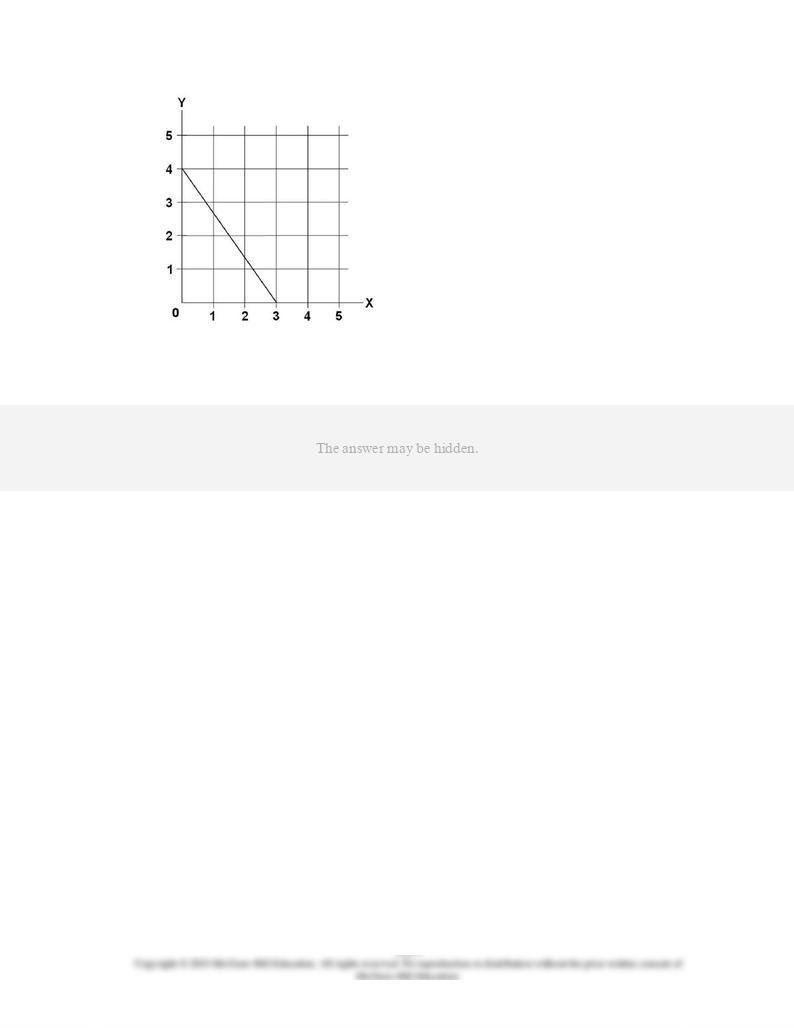
279.
In the diagram, the vertical intercept and slope are:
AACSB: Analytic
Blooms: Apply
Difficulty: 2 Medium
Learning Objective: 01-08 (Appendix) Understand graphs; curves; and slopes as they relate to economics.
Topic: Graphs and their meaning
Type: Graph
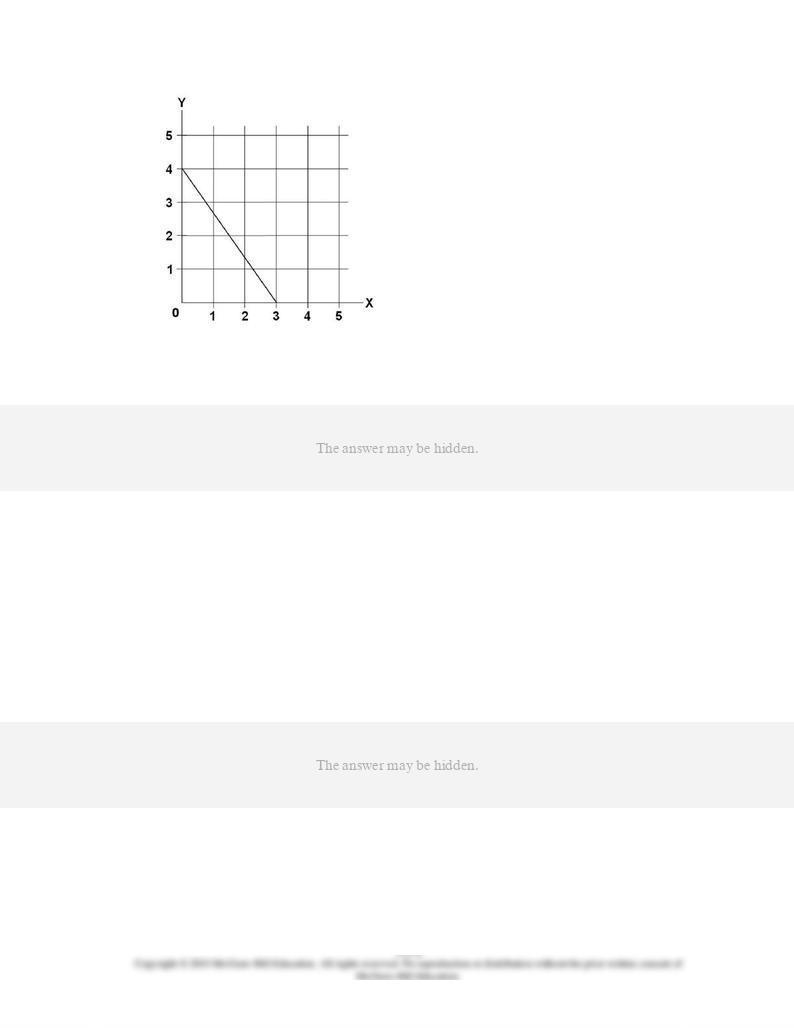
280.
In the diagram the equation for this line is:
AACSB: Analytic
Blooms: Apply
Difficulty: 2 Medium
Learning Objective: 01-08 (Appendix) Understand graphs; curves; and slopes as they relate to economics.
Topic: Graphs and their meaning
Type: Graph
281.
If we are considering the relationship between two variables and release one of the other-
things-equal assumptions, we would expect:
AACSB: Reflective Thinking
Accessibility: Keyboard Navigation
Blooms: Understand
Difficulty: 2 Medium
Learning Objective: 01-08 (Appendix) Understand graphs; curves; and slopes as they relate to economics.
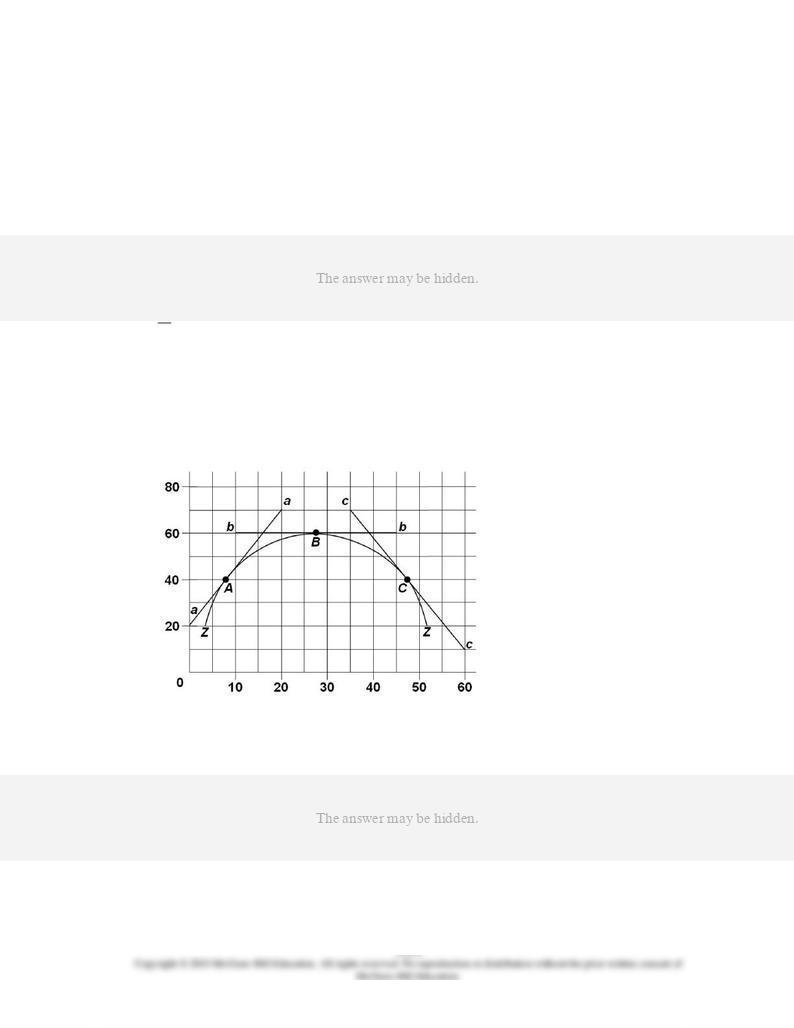
Topic: Graphs and their meaning
282.
The amount of pizzas that consumers want to buy per week is reflected in the equation
P
= 15 - .02
Qd
, where
Qd
is the amount of pizzas purchased per week and
P
is the price of
pizzas. On the basis of this information we can say that:
AACSB: Analytic
Accessibility: Keyboard Navigation
Blooms: Apply
Difficulty: 2 Medium
Learning Objective: 01-08 (Appendix) Understand graphs; curves; and slopes as they relate to economics.
Topic: Graphs and their meaning
283.
Refer to the diagram. The slope of curve
ZZ
at point
A
is approximately:
AACSB: Analytic
Blooms: Apply
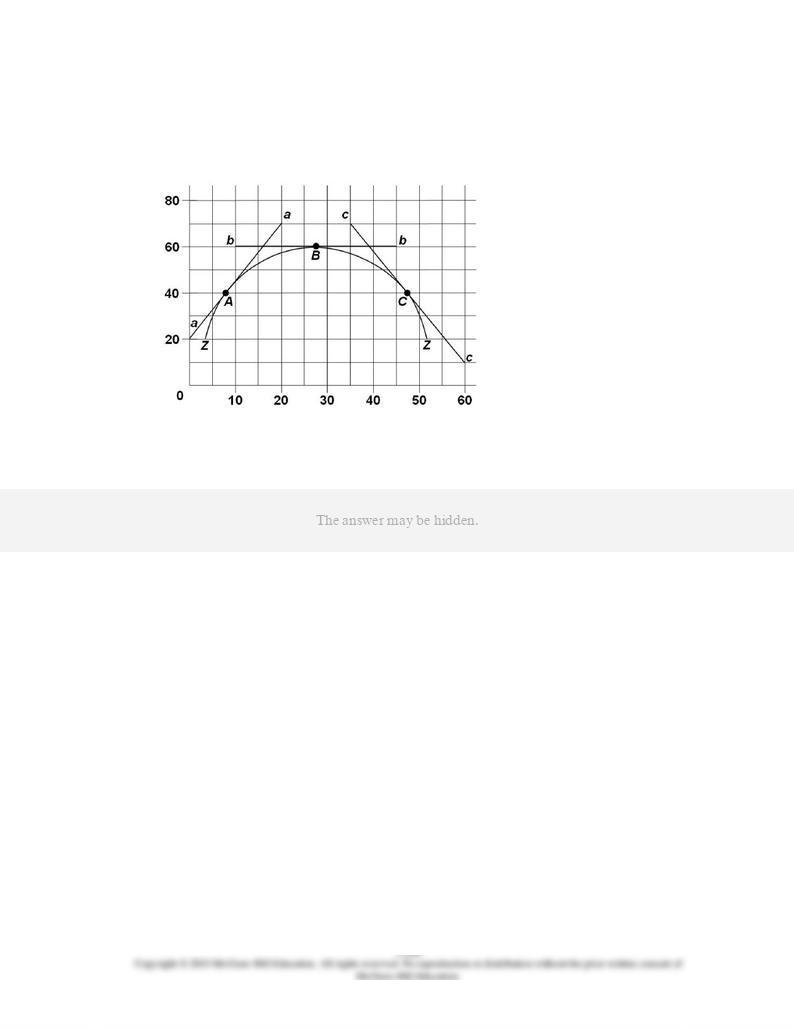
Difficulty: 2 Medium
Learning Objective: 01-08 (Appendix) Understand graphs; curves; and slopes as they relate to economics.
Topic: Graphs and their meaning
Type: Graph
284.
Refer to the diagram. The slope of curve
ZZ
at point
B
is:
D.
-1.
AACSB: Analytic
Blooms: Understand
Difficulty: 2 Medium
Learning Objective: 01-08 (Appendix) Understand graphs; curves; and slopes as they relate to economics.
Topic: Graphs and their meaning
Type: Graph
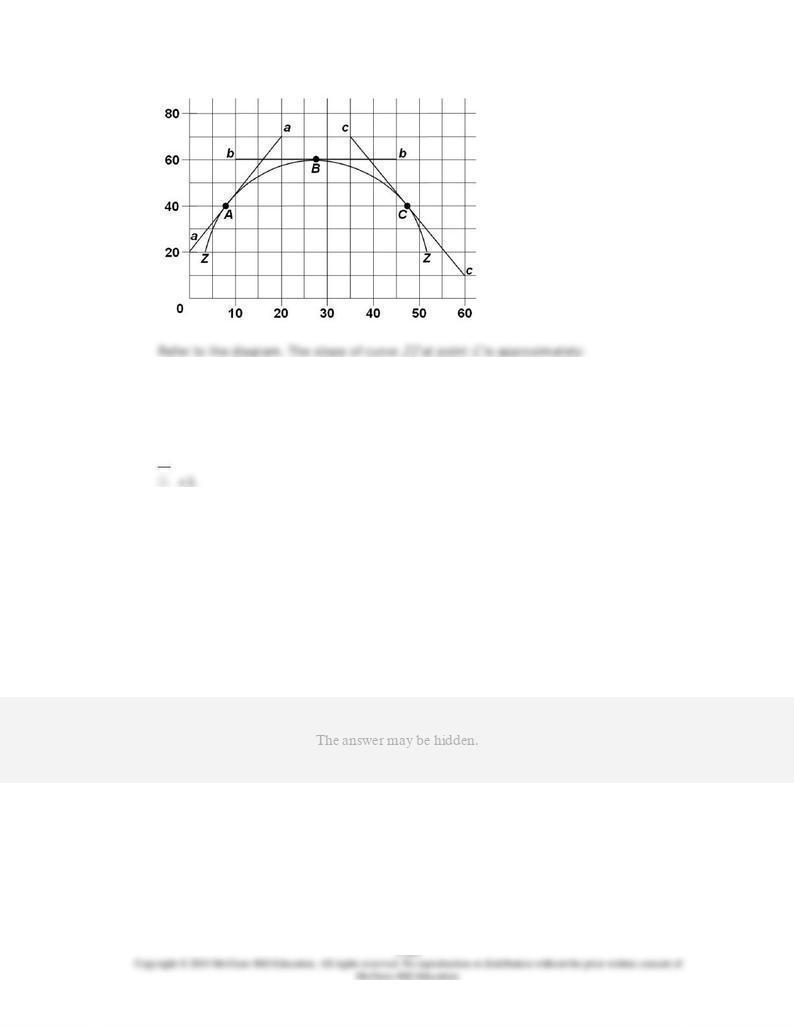
285.
A.
-4.
B.
-2.
C.
-22/5.
AACSB: Analytic
Blooms: Apply
Difficulty: 2 Medium
Learning Objective: 01-08 (Appendix) Understand graphs; curves; and slopes as they relate to economics.
Topic: Graphs and their meaning
Type: Graph
286.
The slope of a line parallel to the vertical axis is:
AACSB: Analytic
Accessibility: Keyboard Navigation
Blooms: Remember
Difficulty: 1 Easy
Learning Objective: 01-08 (Appendix) Understand graphs; curves; and slopes as they relate to economics.
Topic: Graphs and their meaning
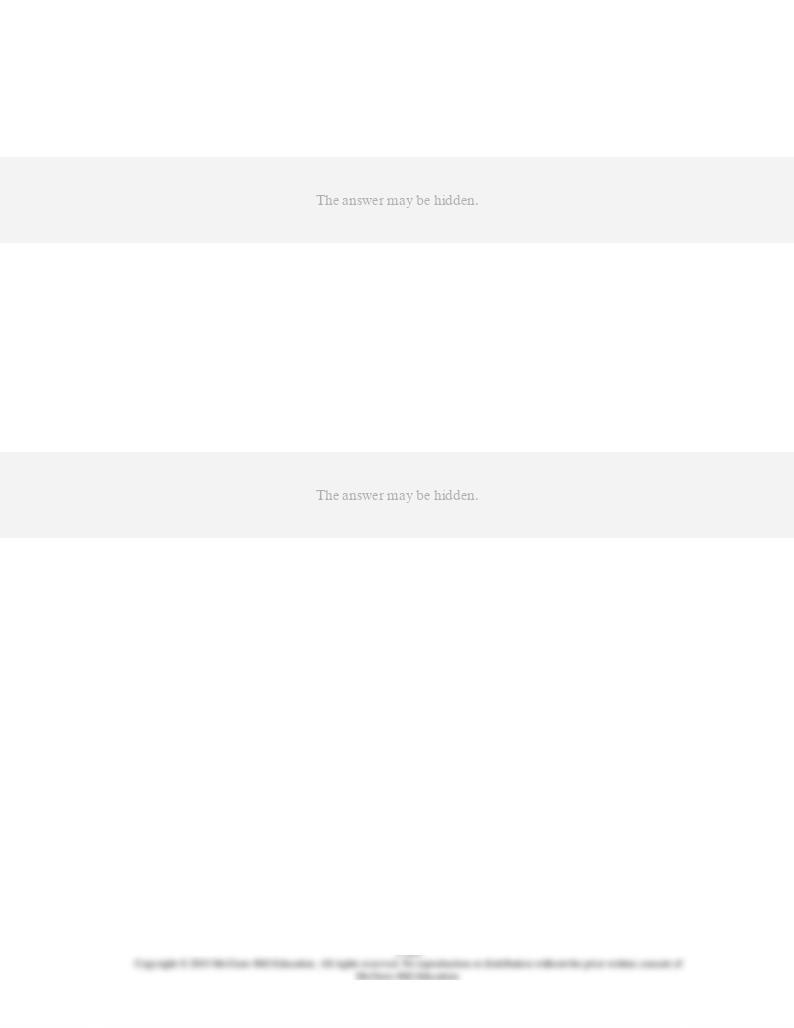
287.
The slope of a line parallel to the horizontal axis is:
AACSB: Analytic
Accessibility: Keyboard Navigation
Blooms: Remember
Difficulty: 1 Easy
Learning Objective: 01-08 (Appendix) Understand graphs; curves; and slopes as they relate to economics.
Topic: Graphs and their meaning
288.
Slopes of lines are especially important in economics because:
AACSB: Analytic
Accessibility: Keyboard Navigation
Blooms: Remember
Difficulty: 1 Easy
Learning Objective: 01-08 (Appendix) Understand graphs; curves; and slopes as they relate to economics.
Topic: Graphs and their meaning